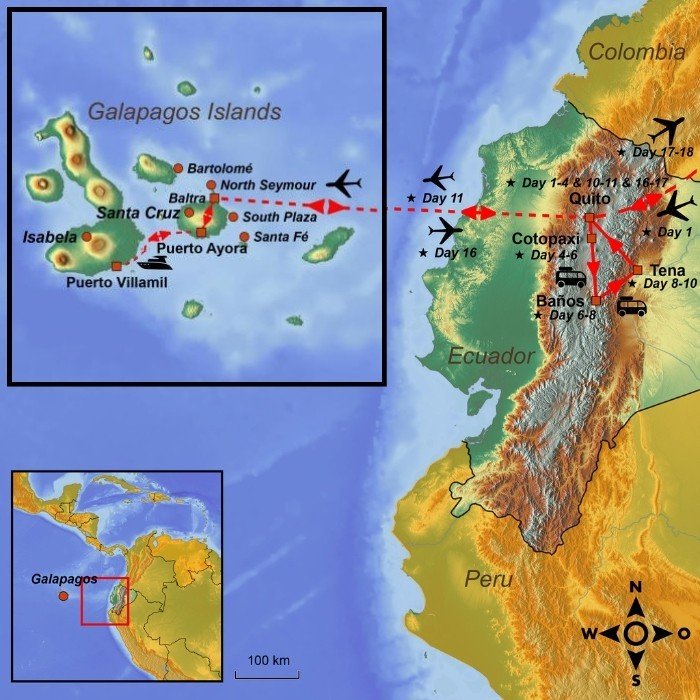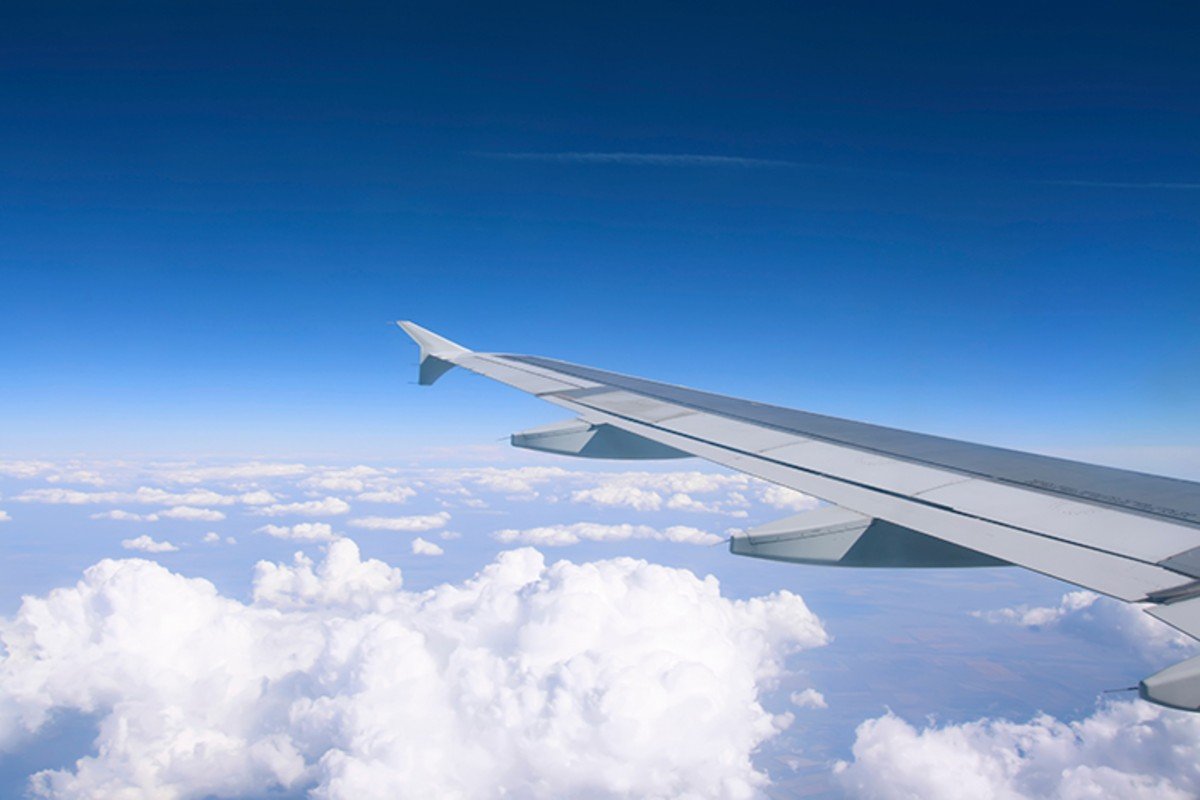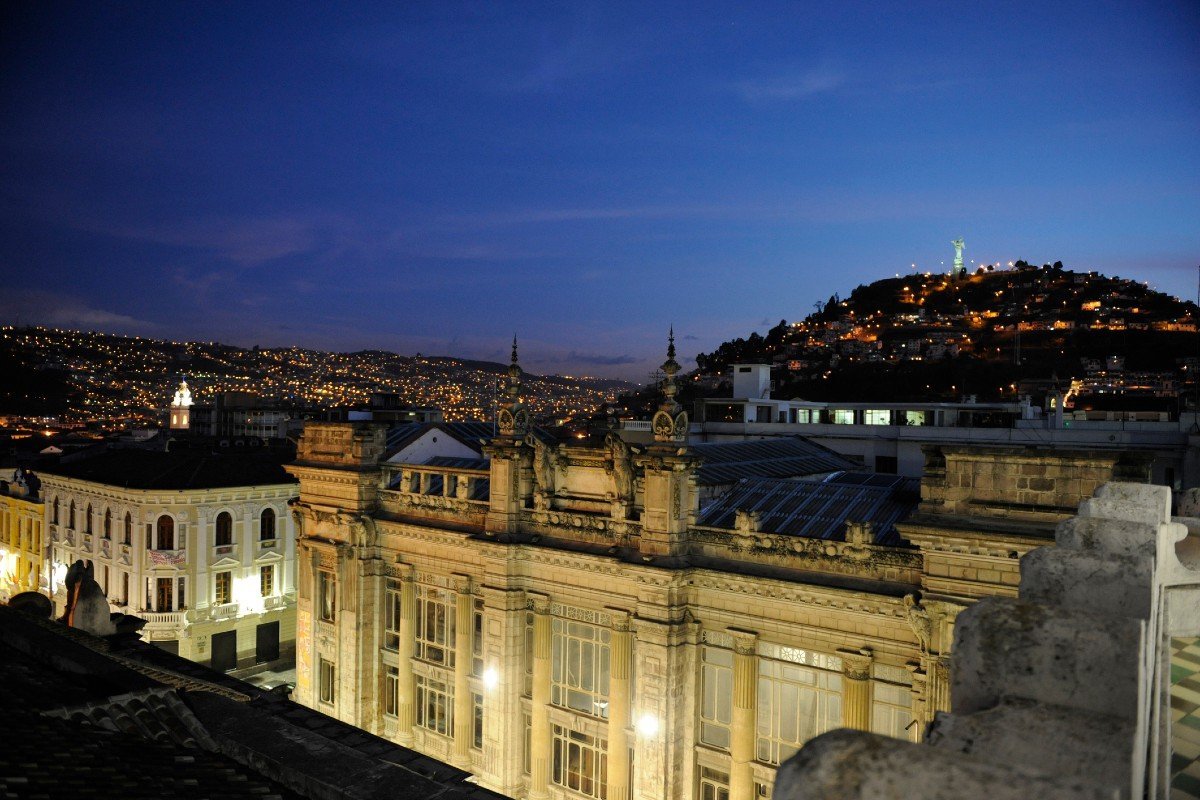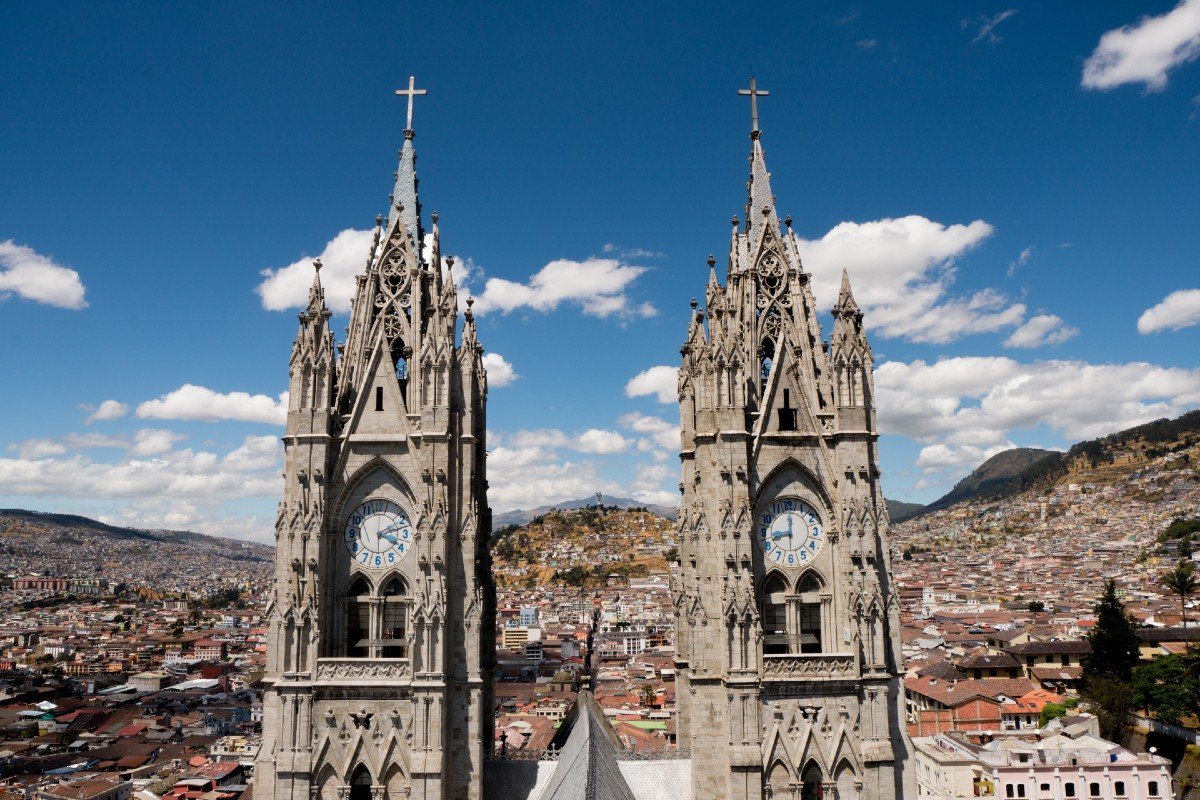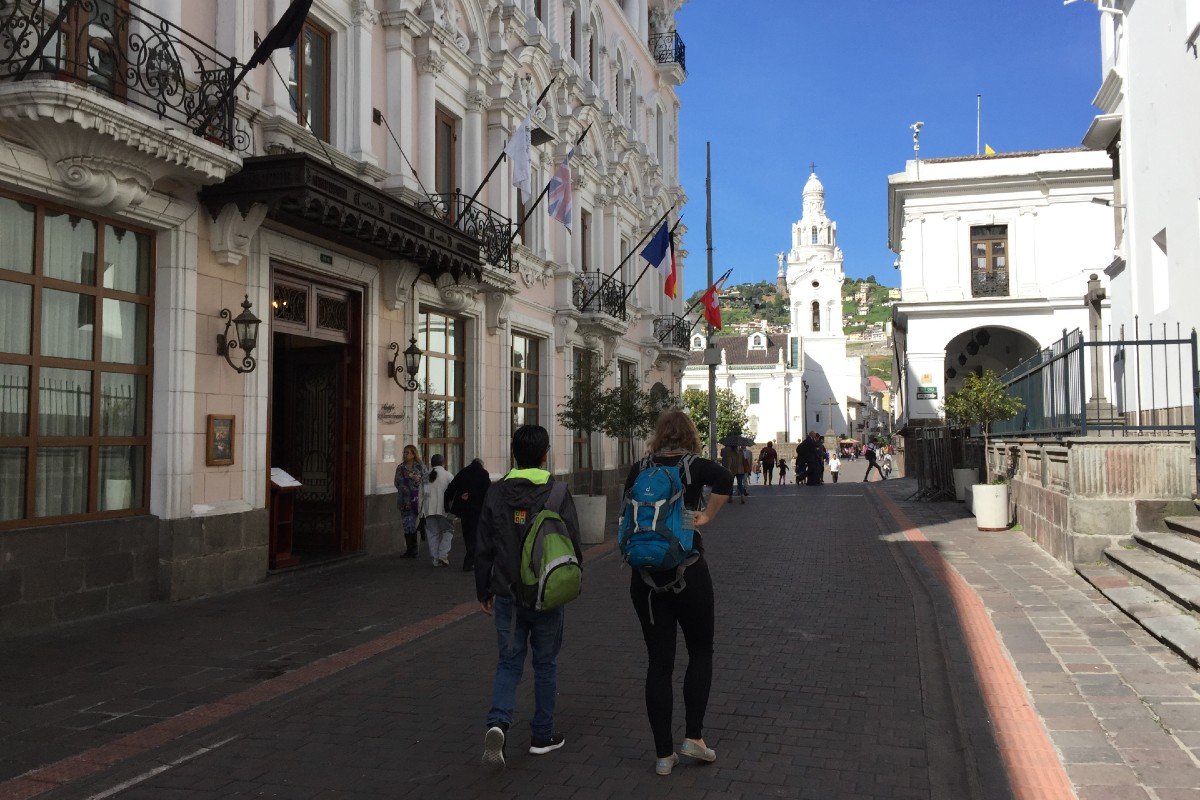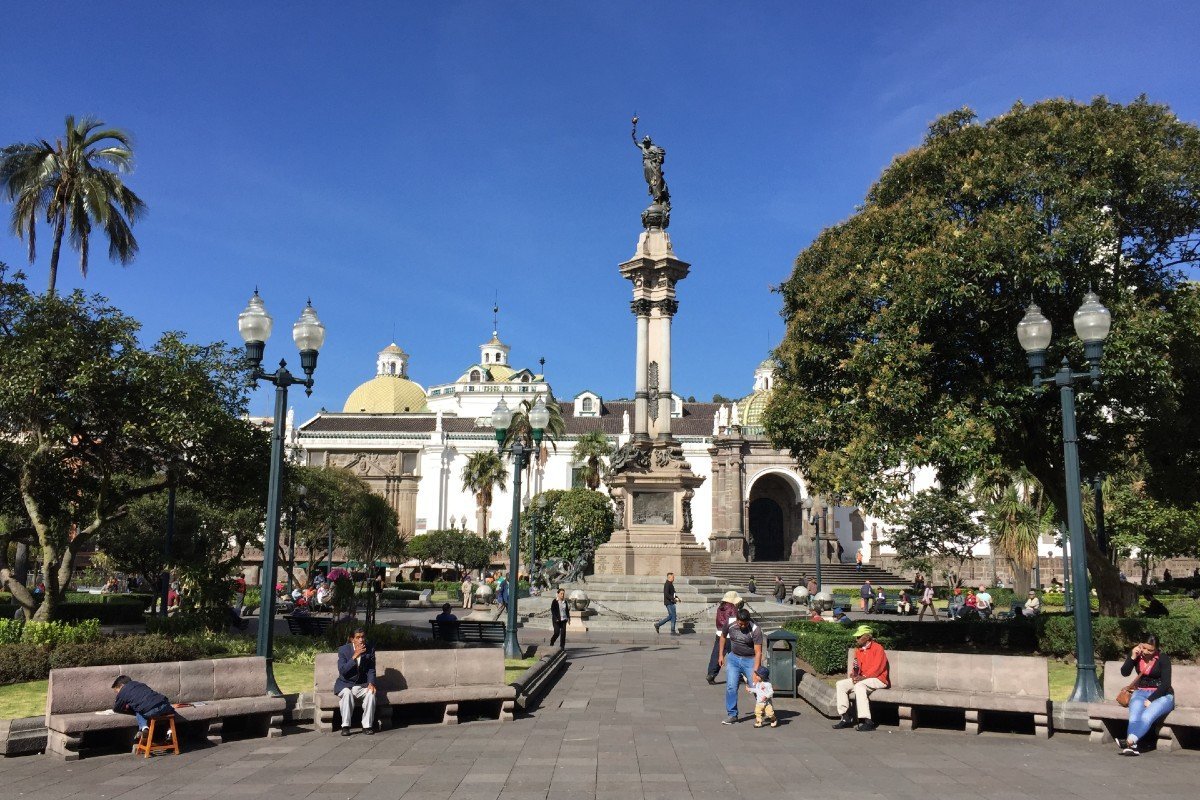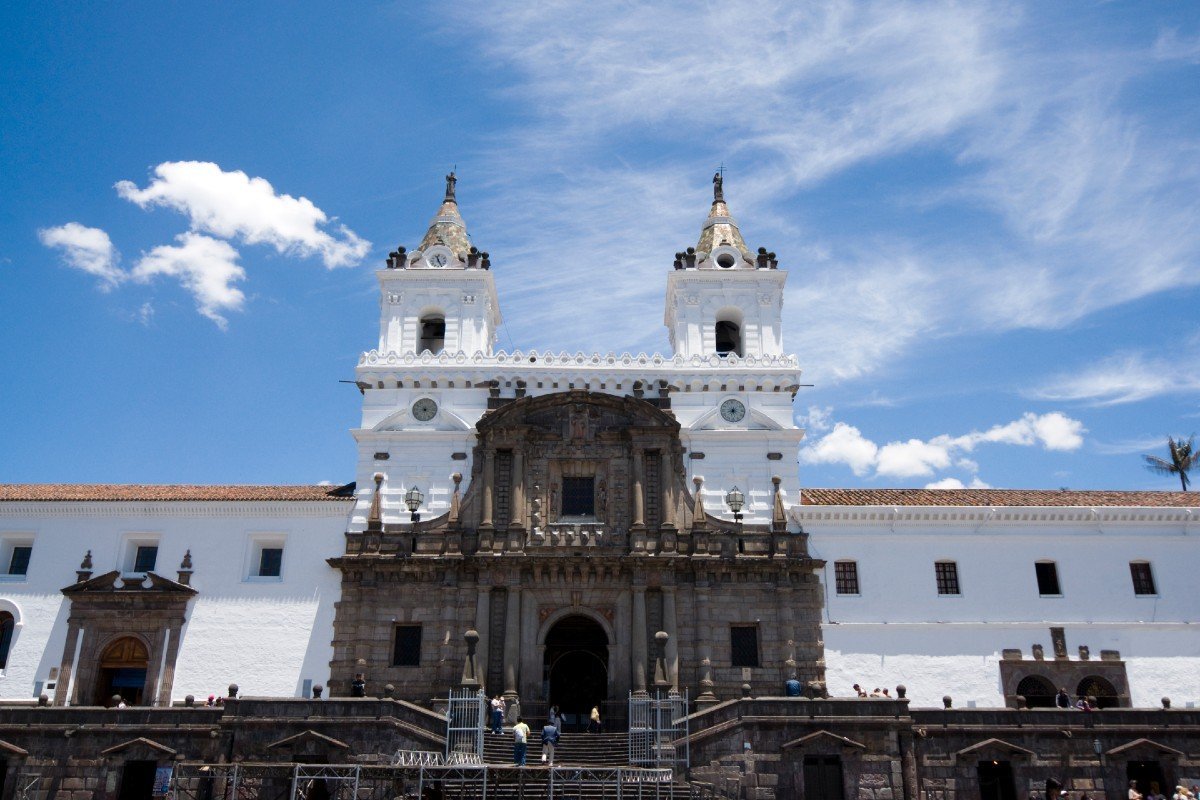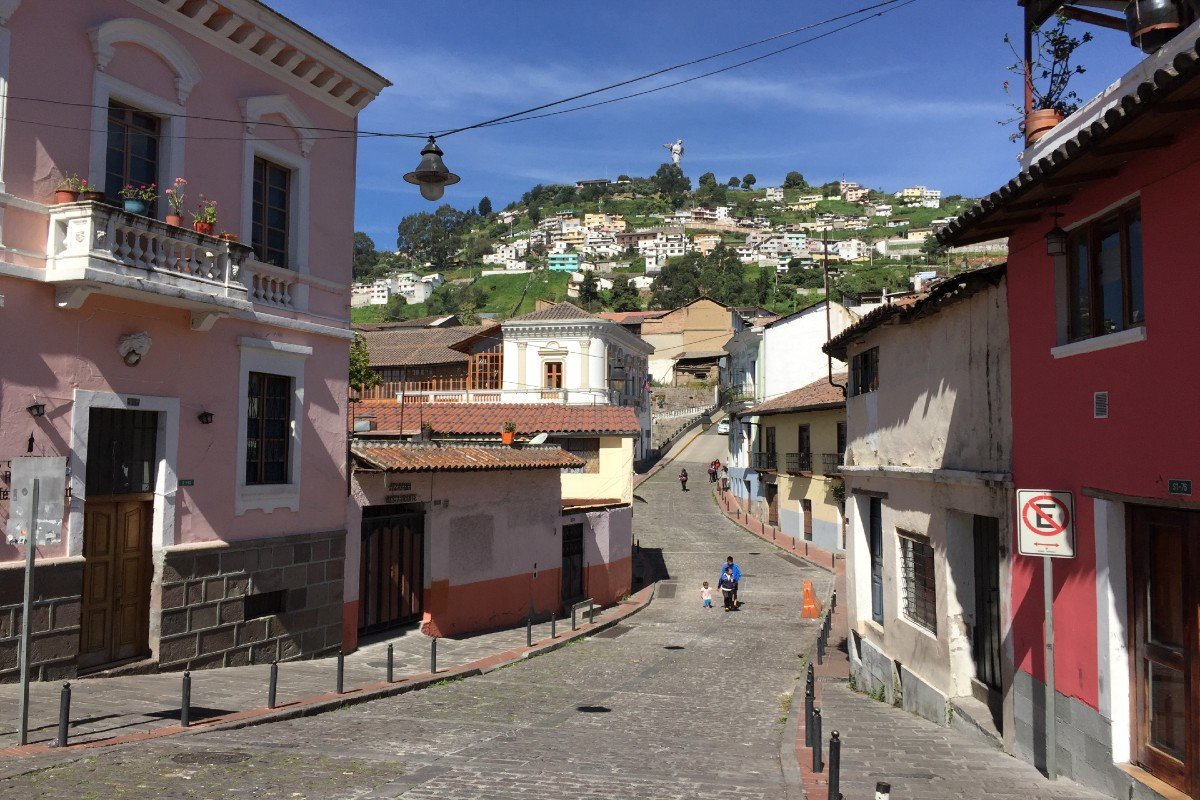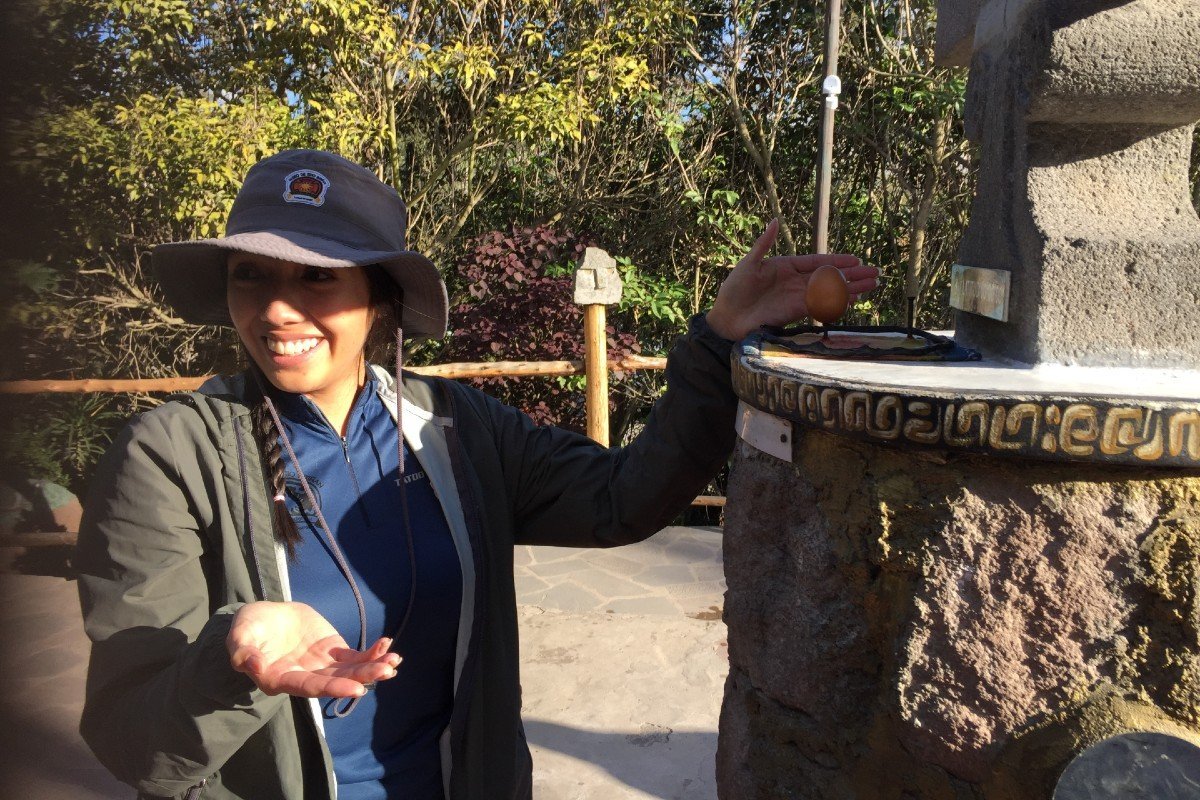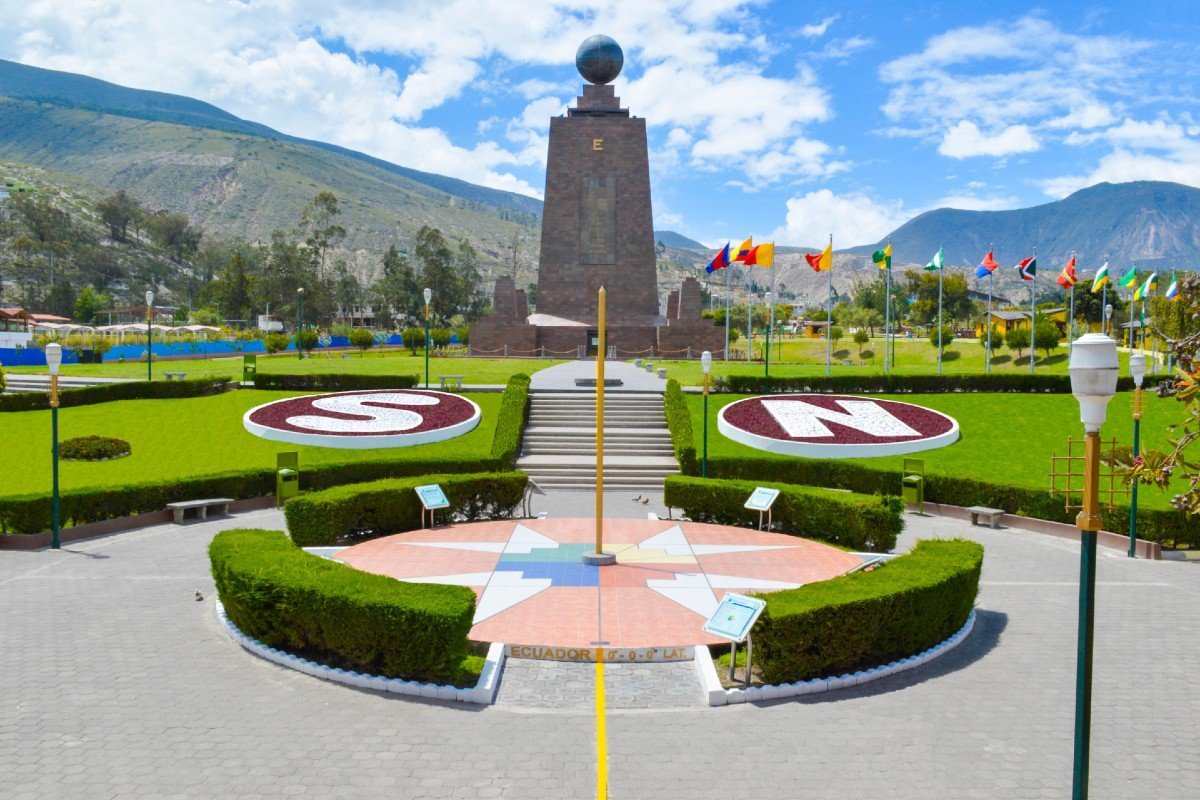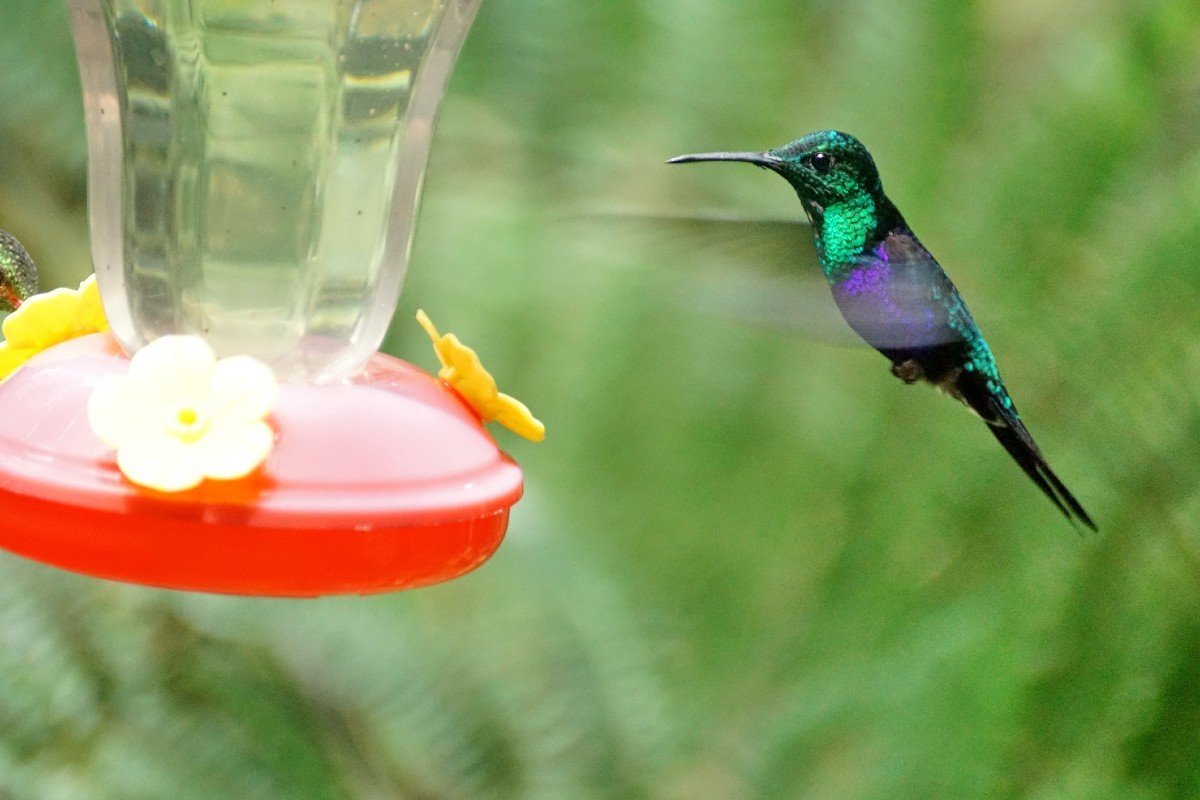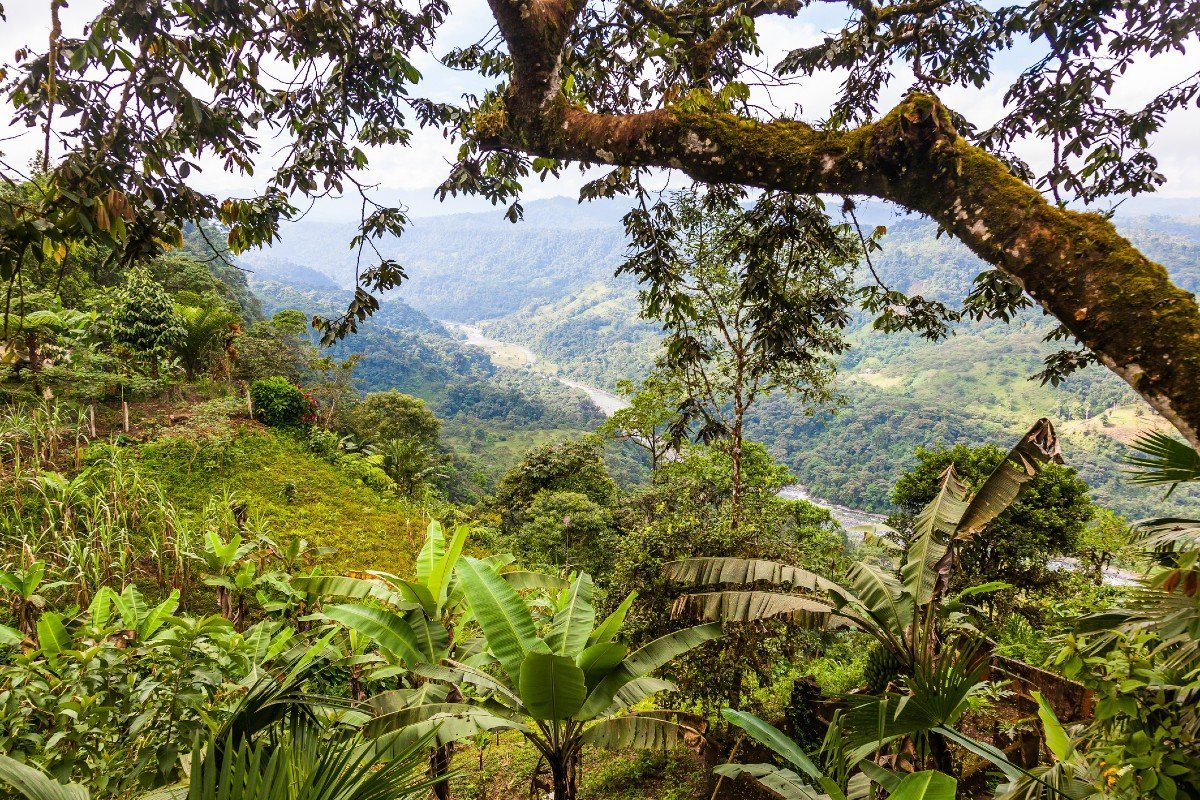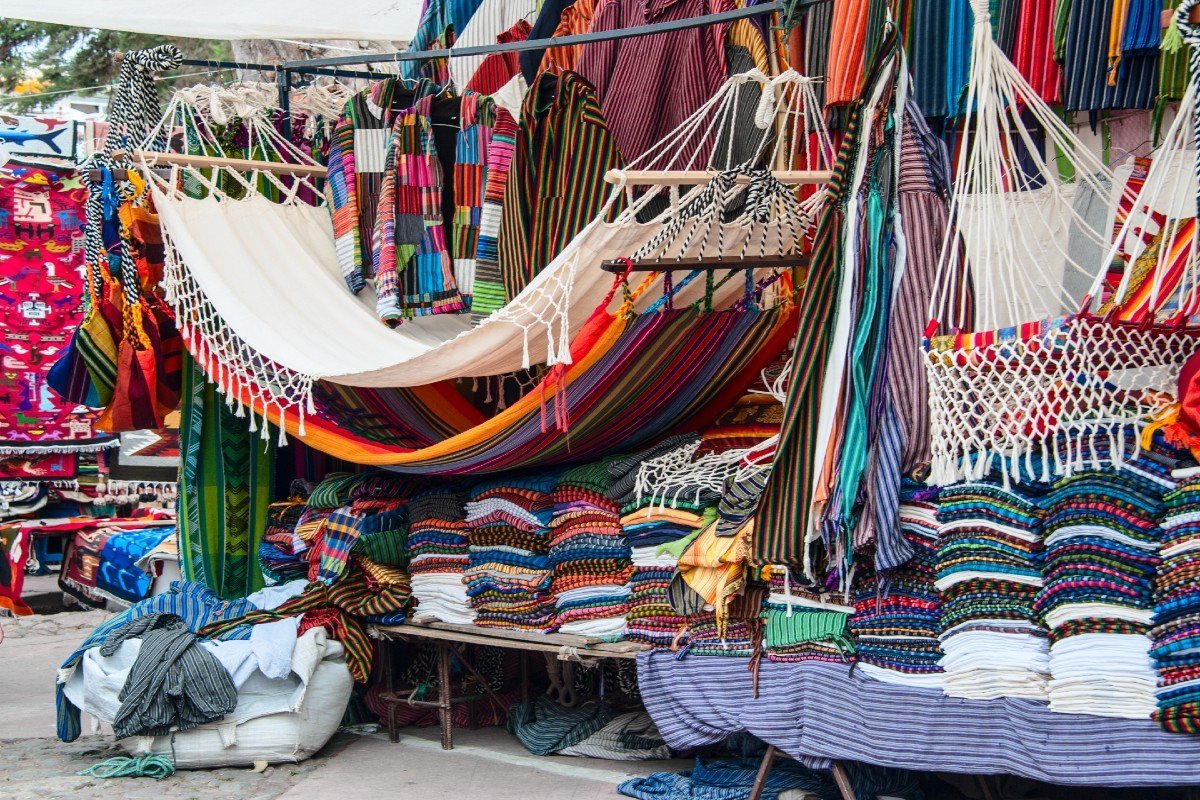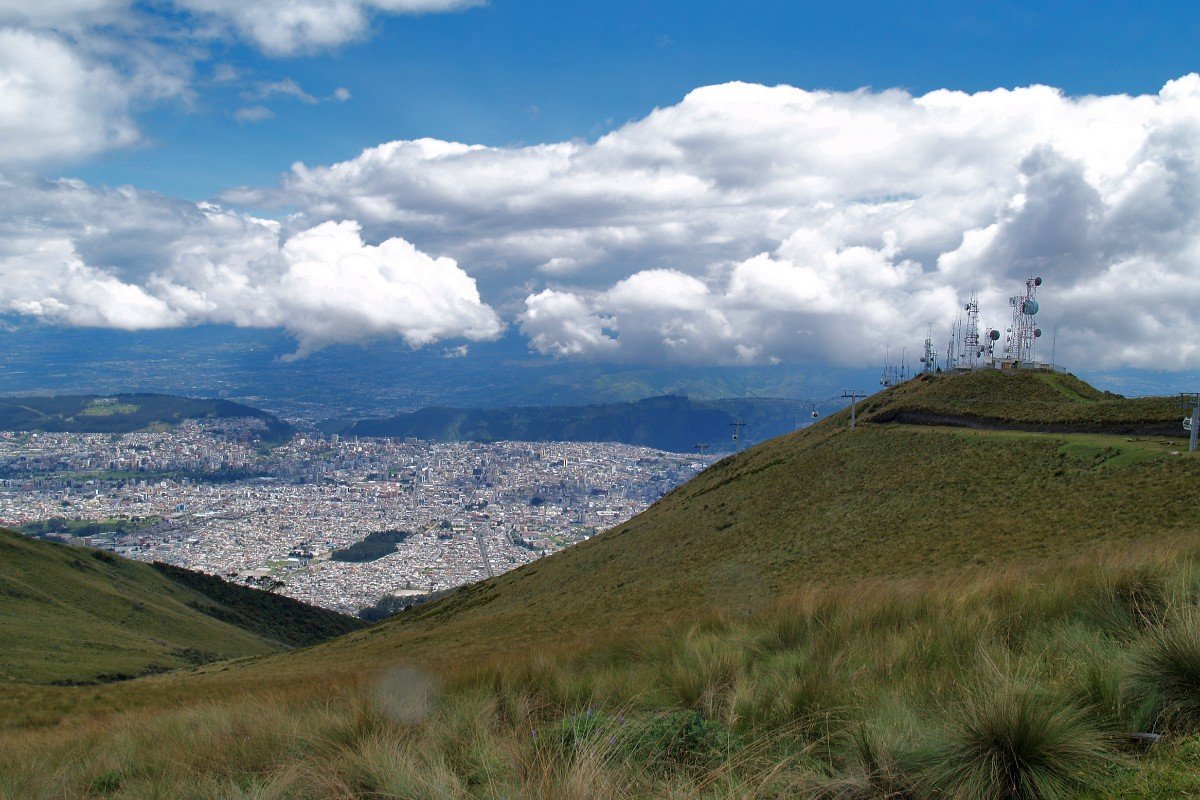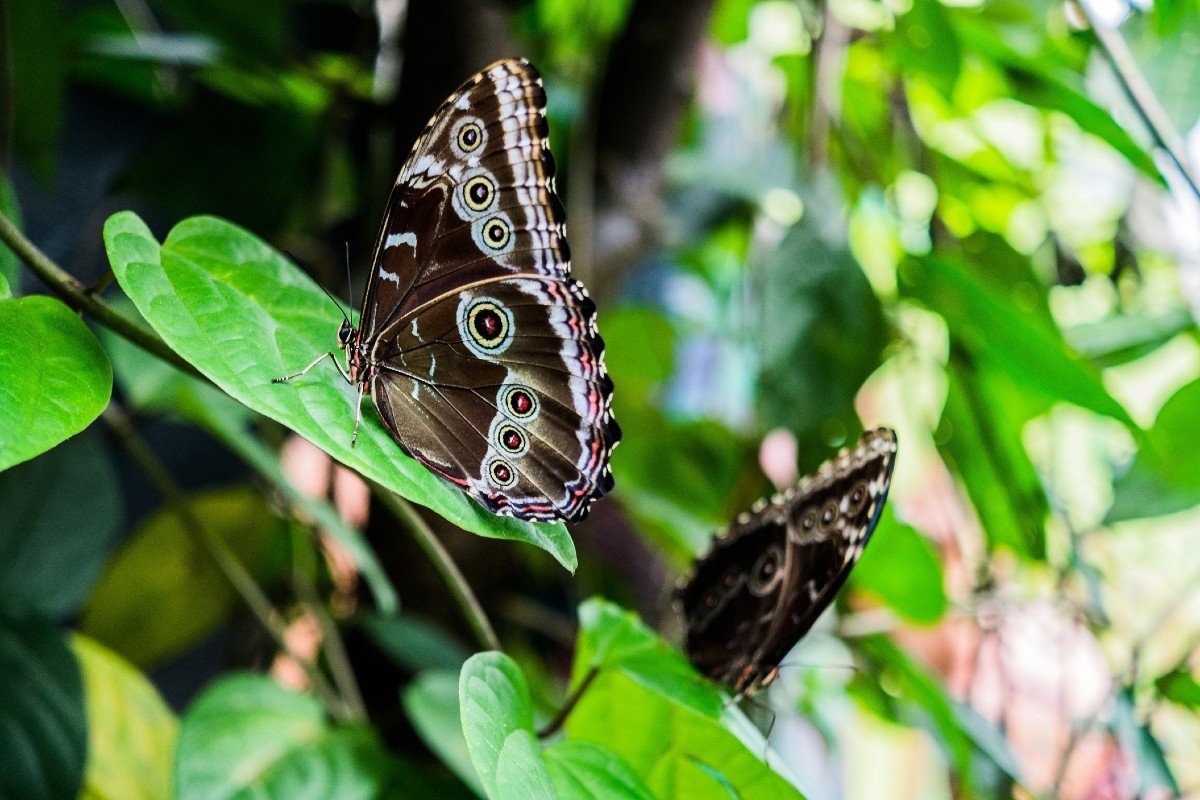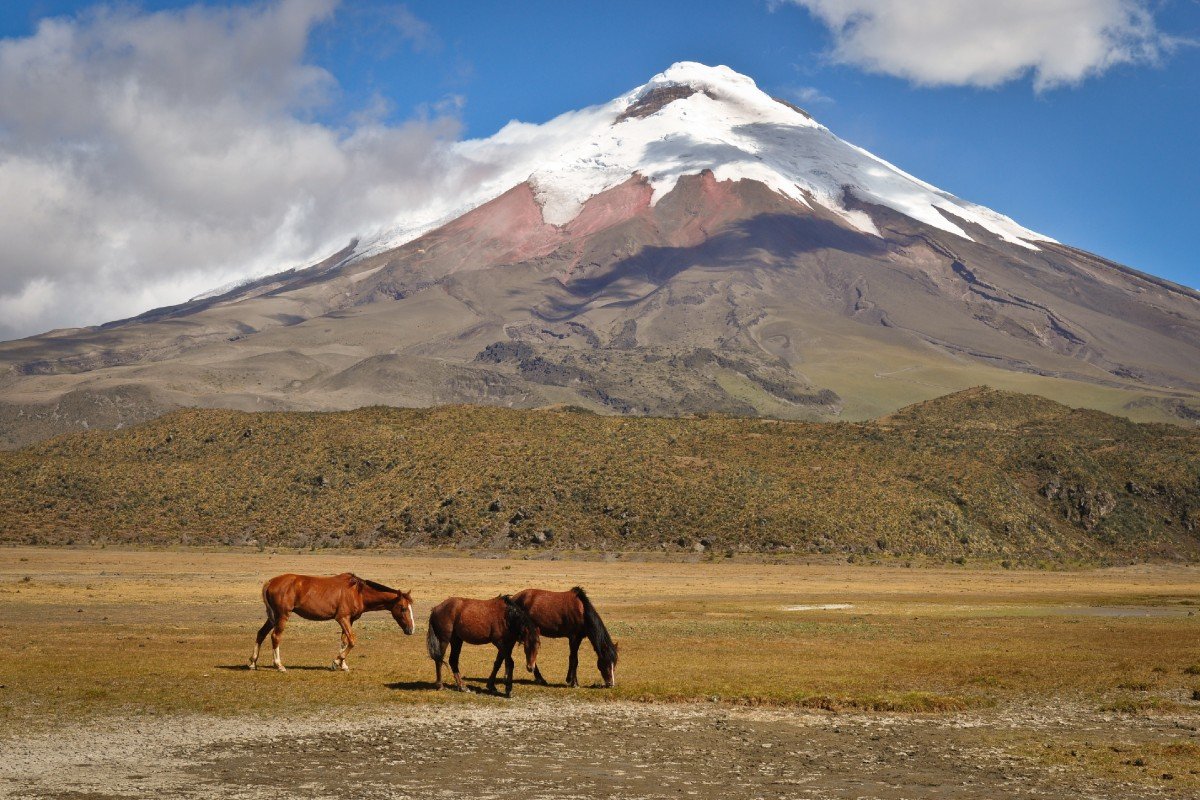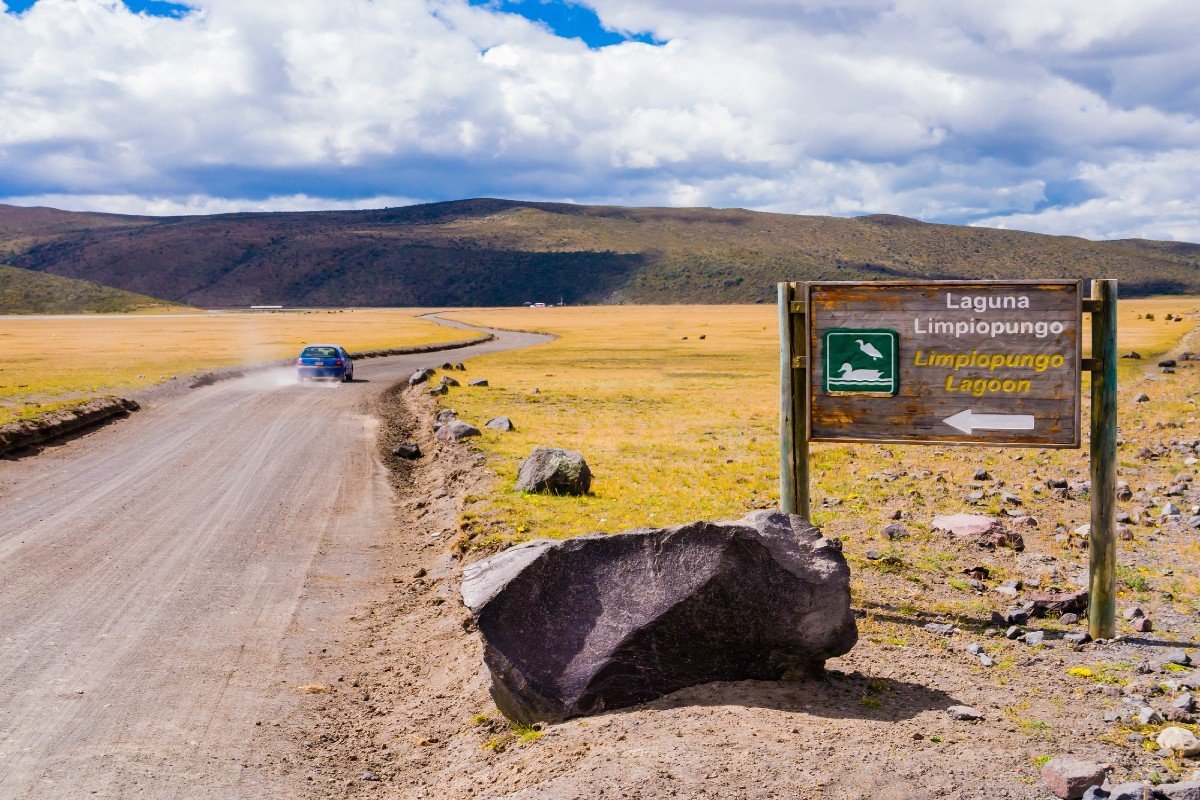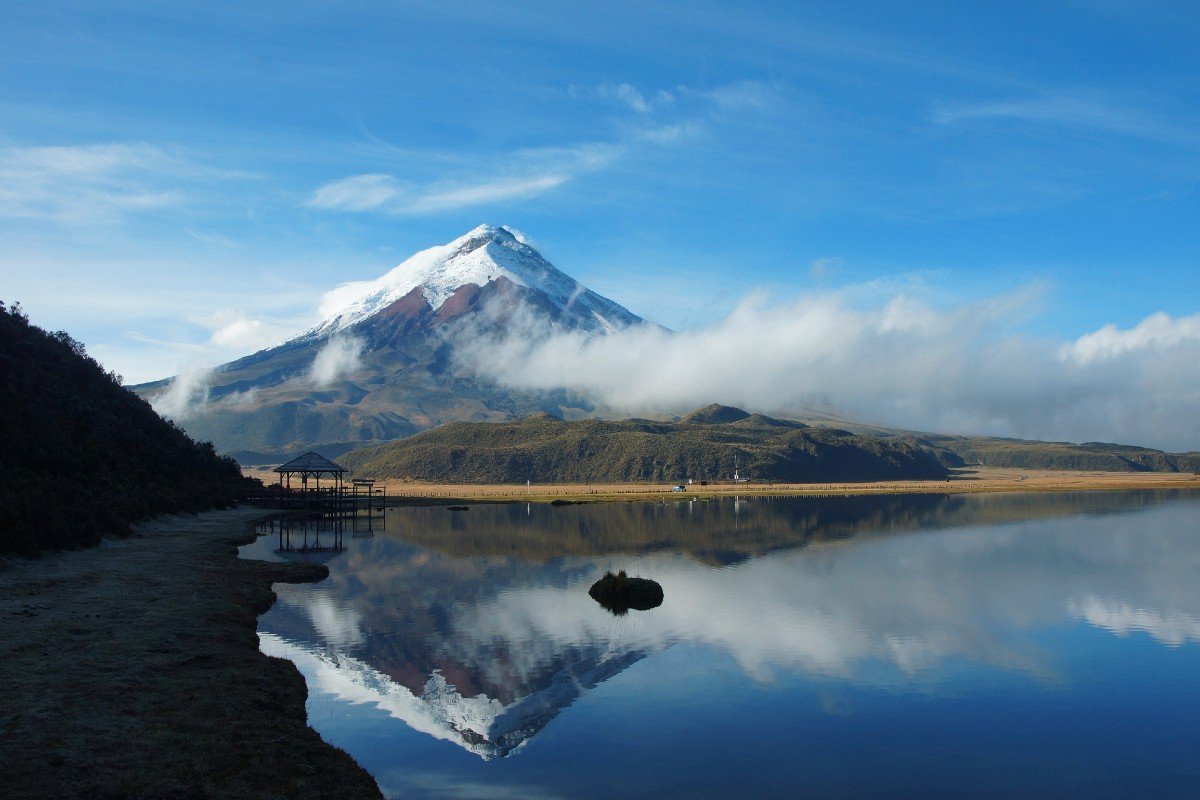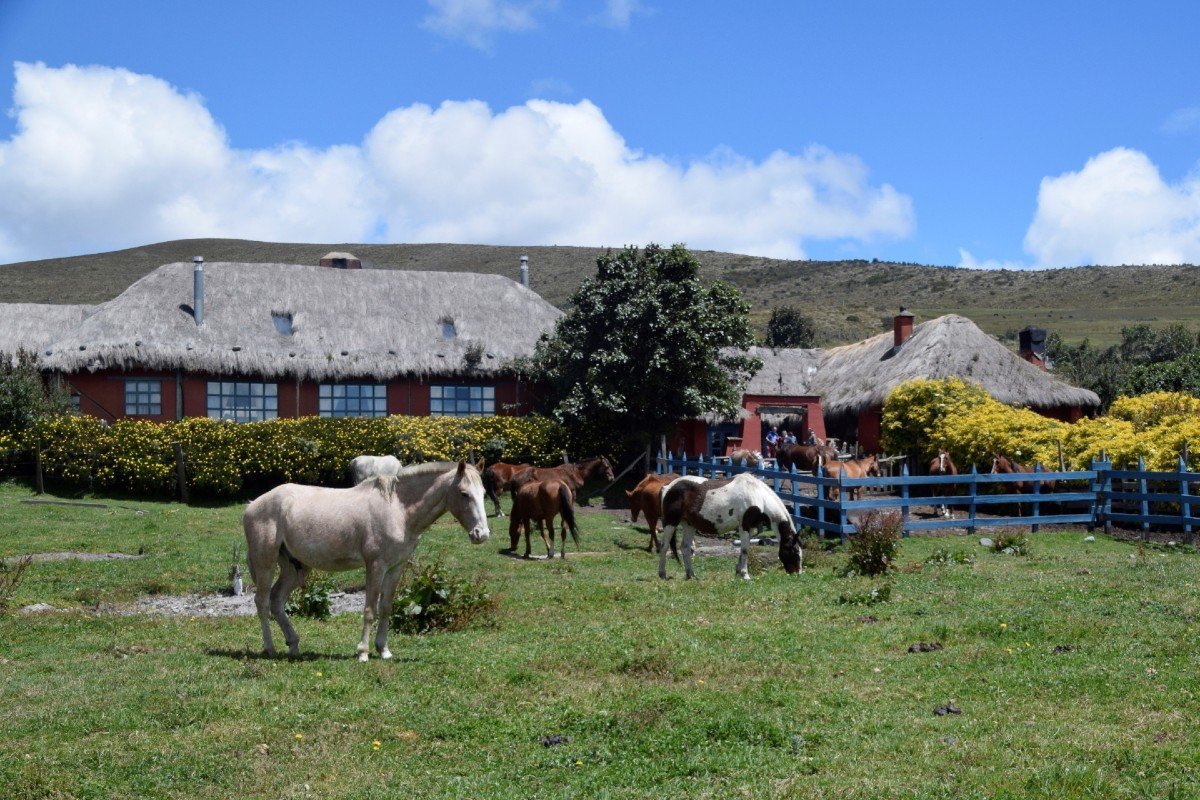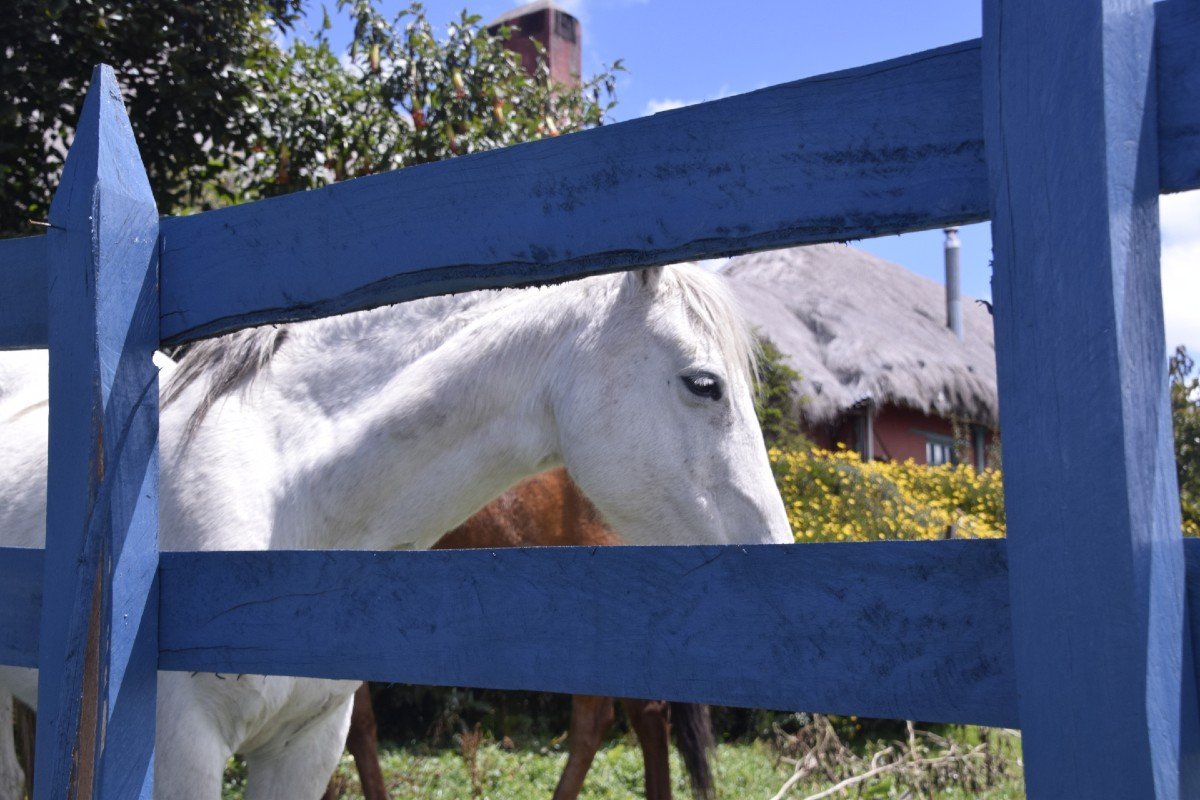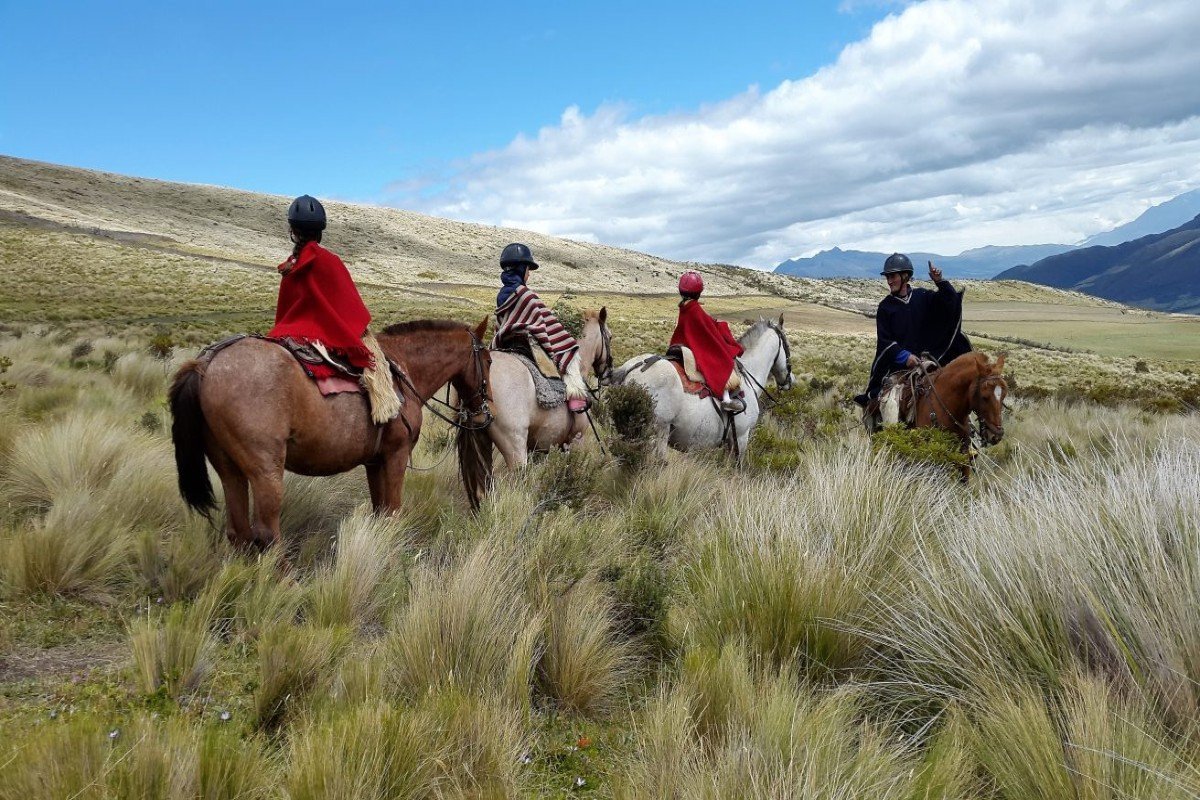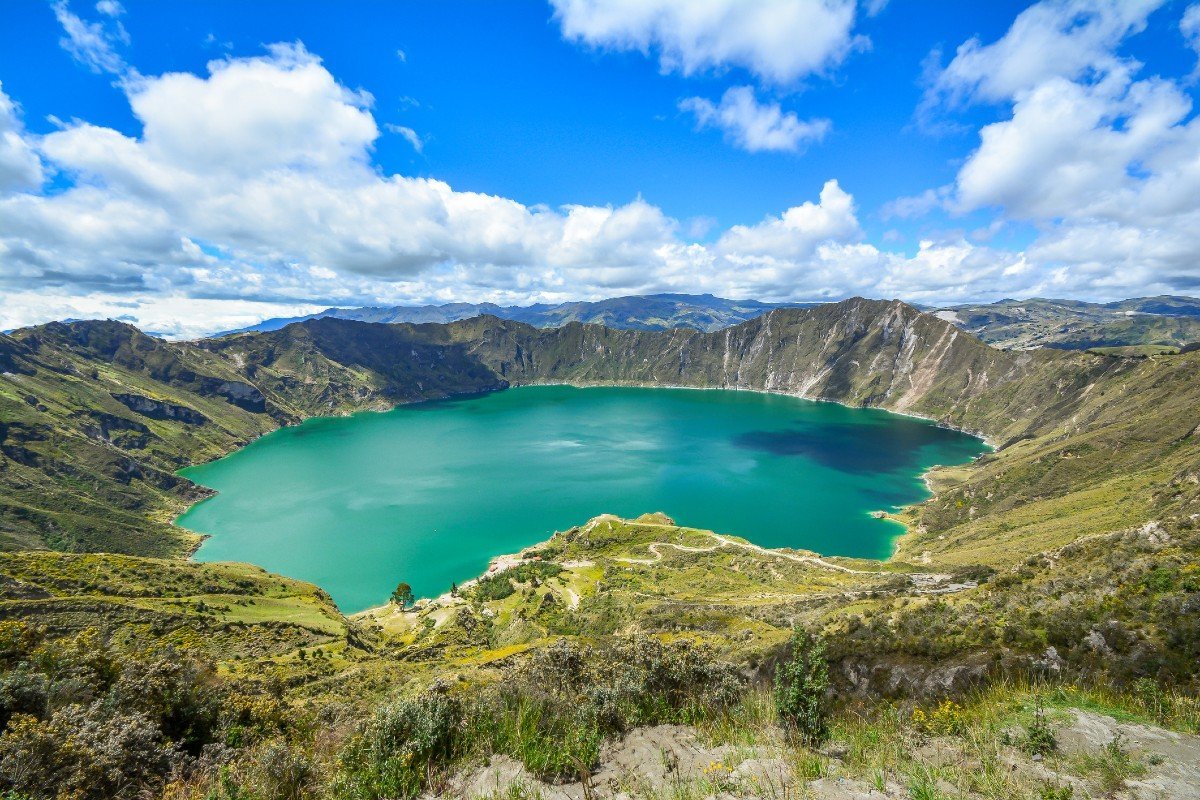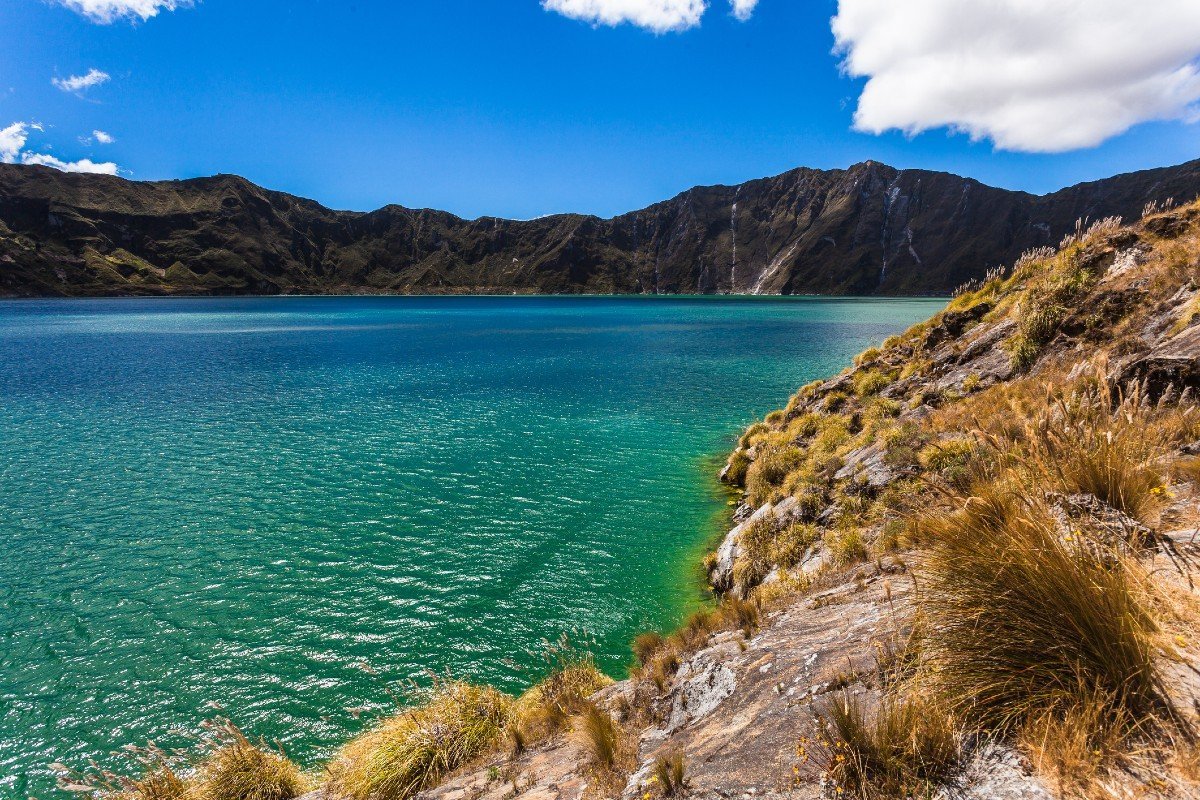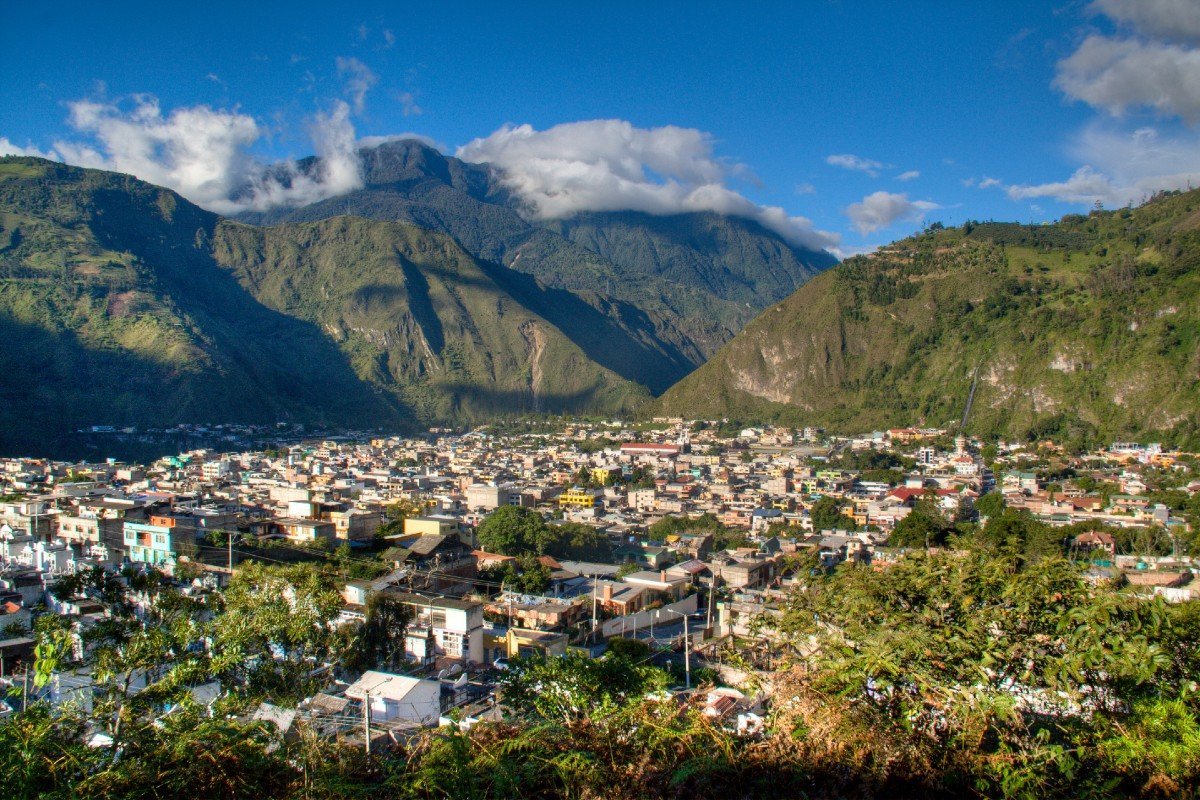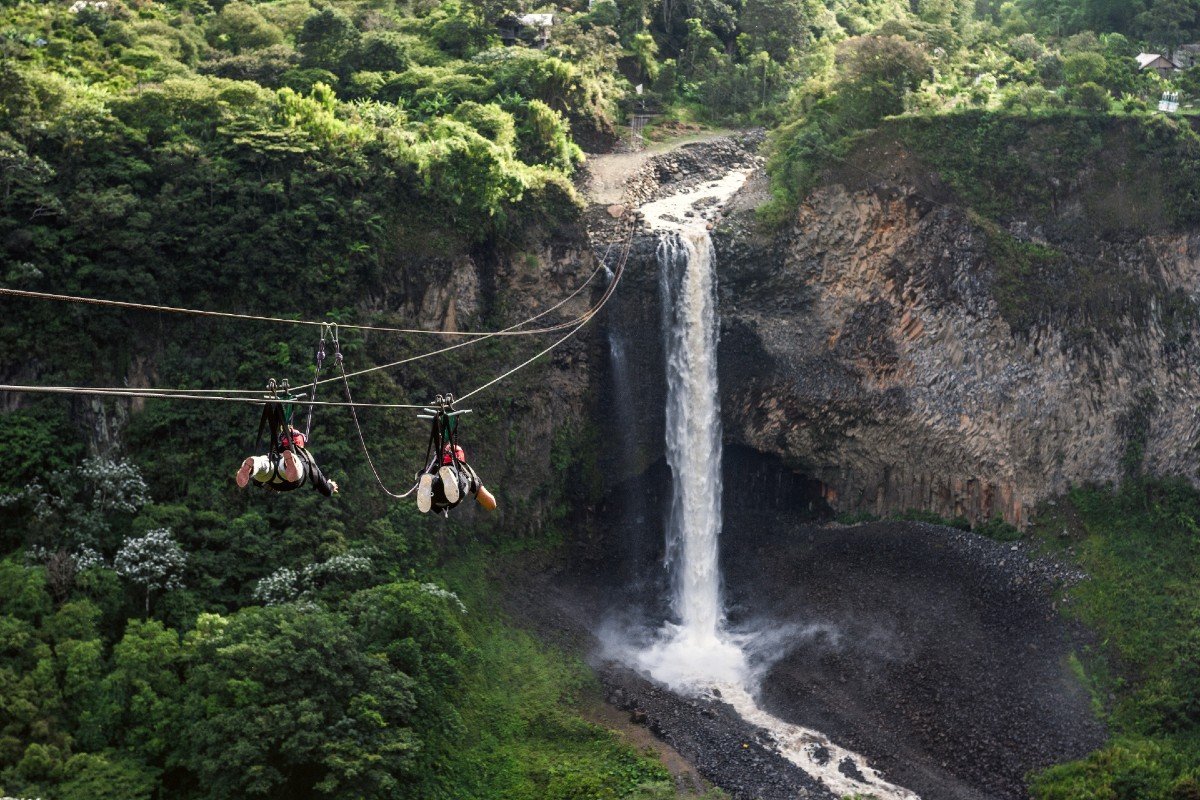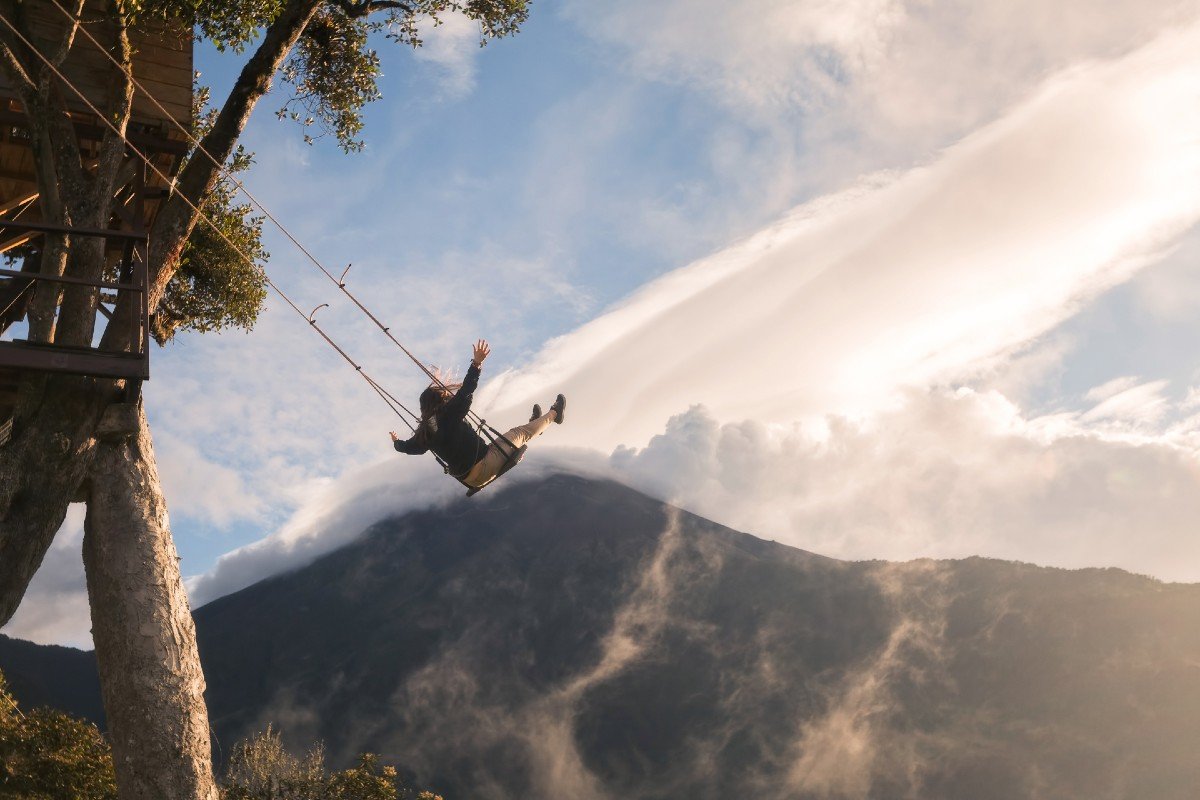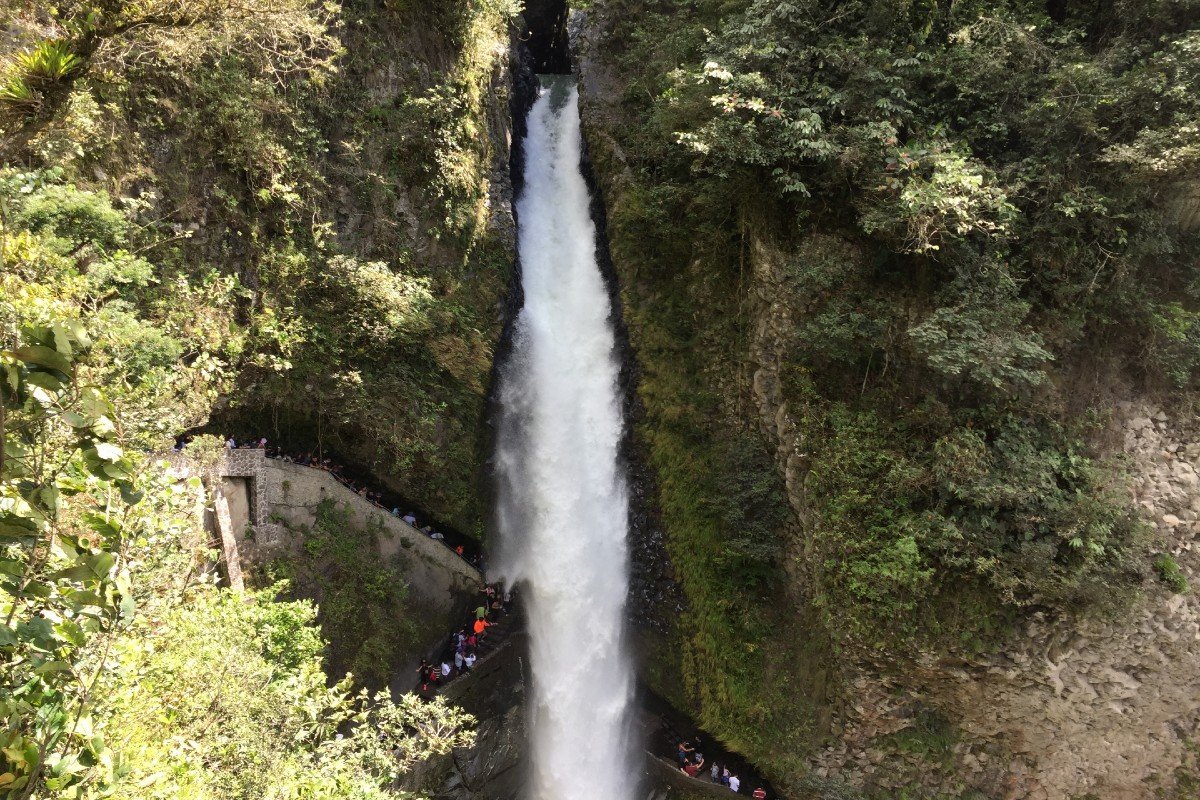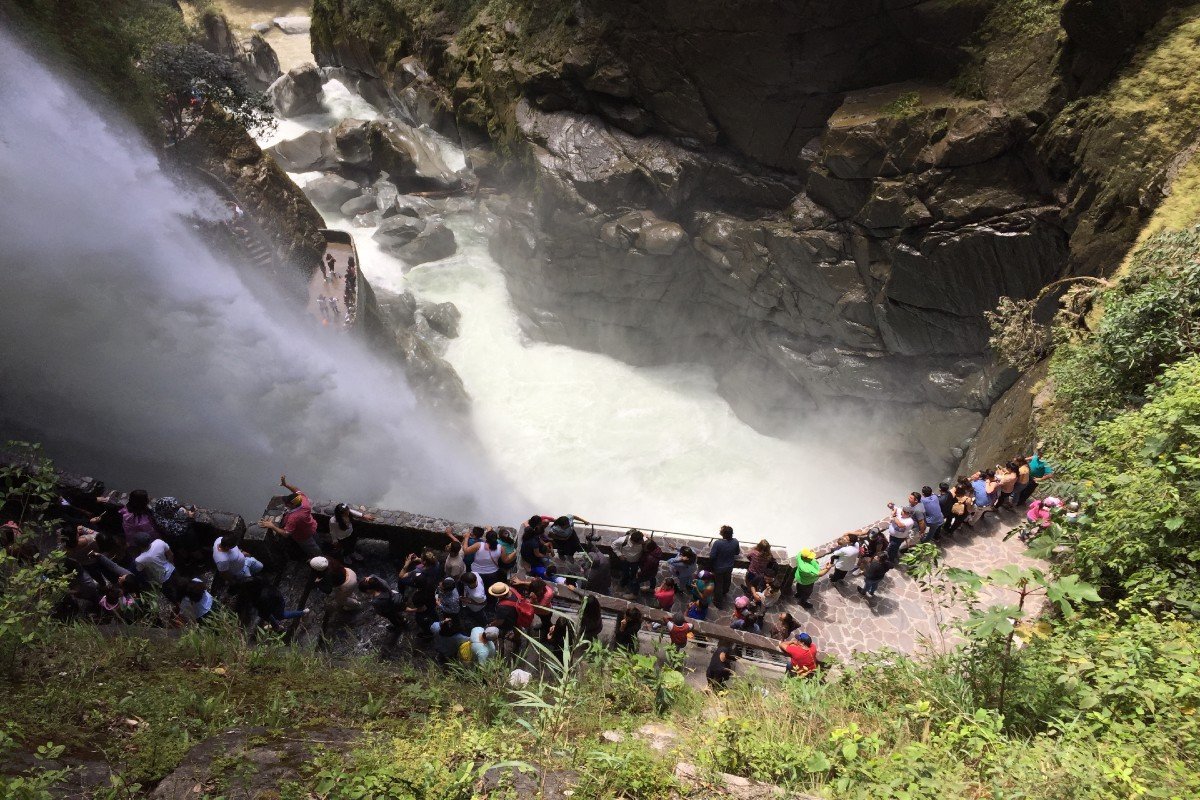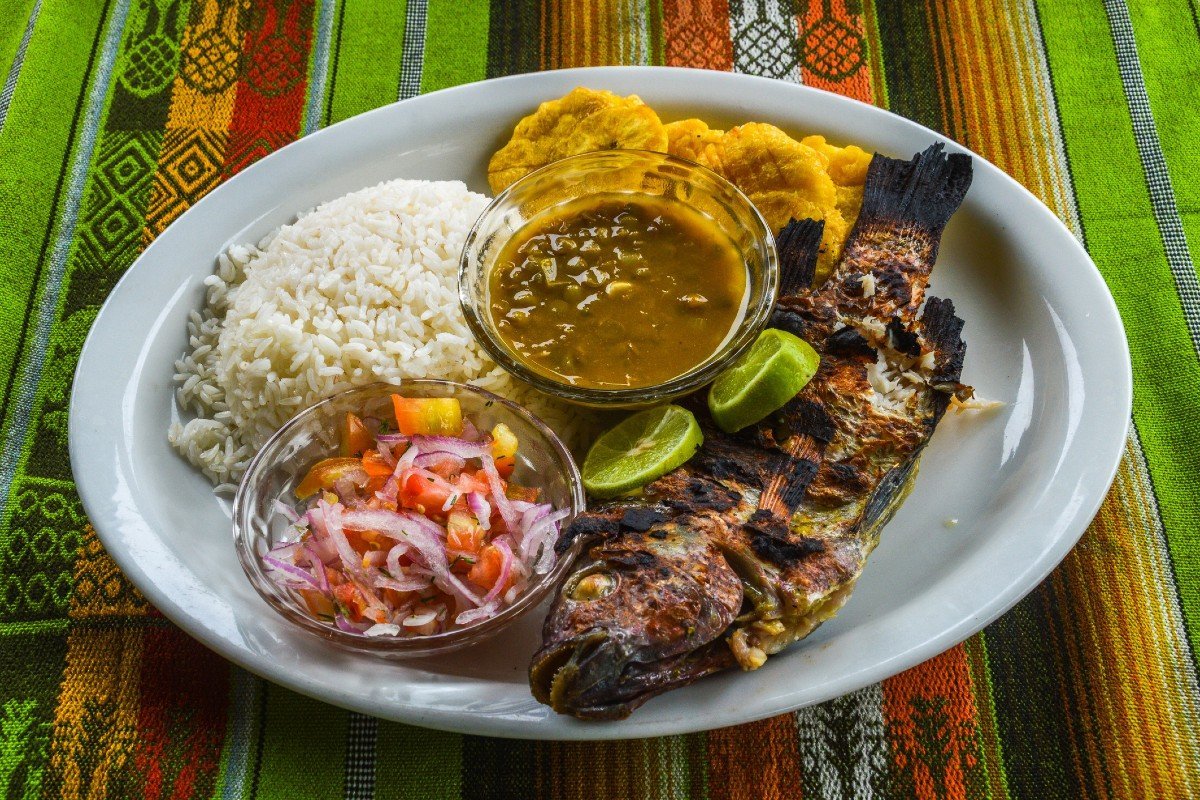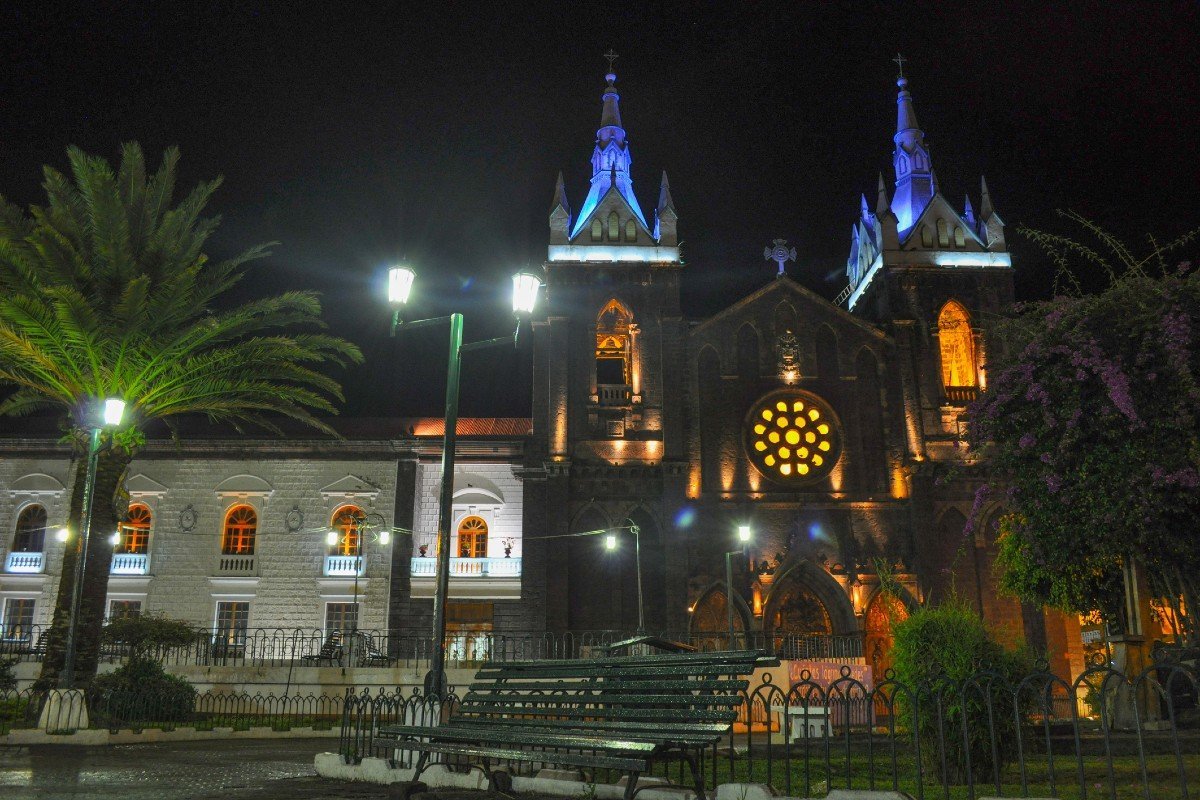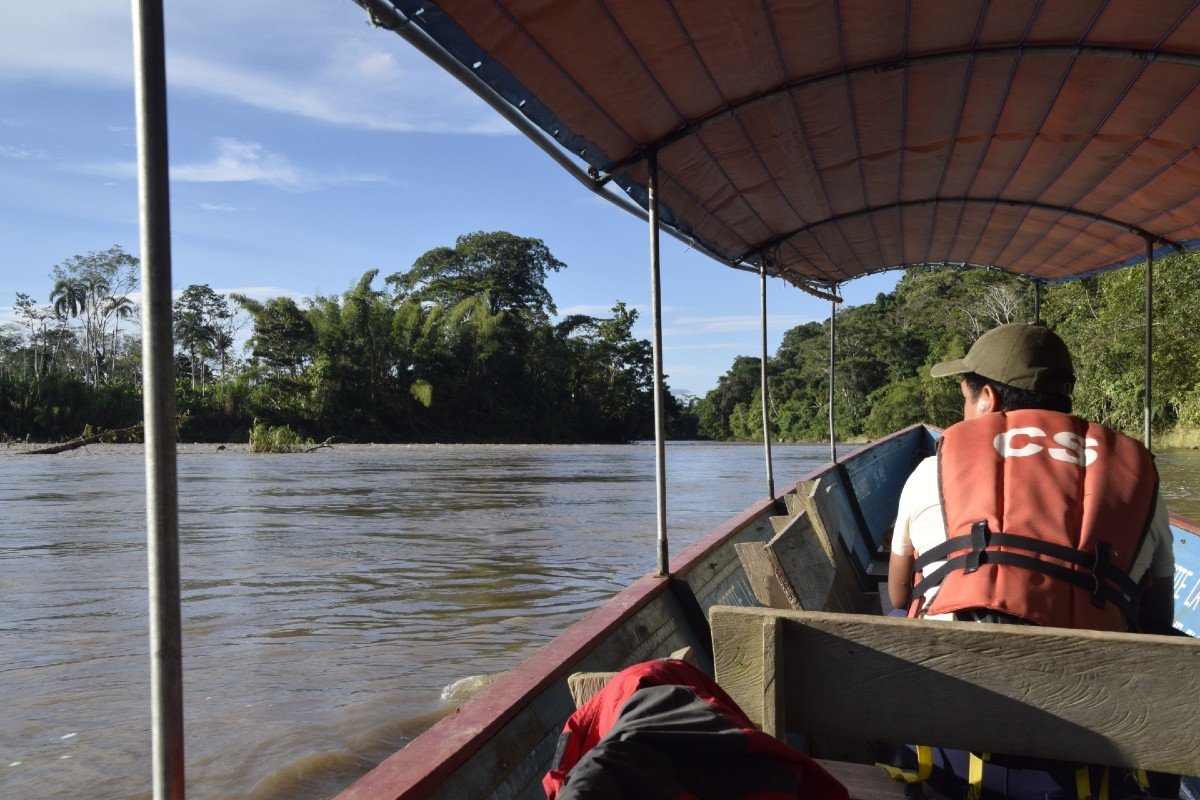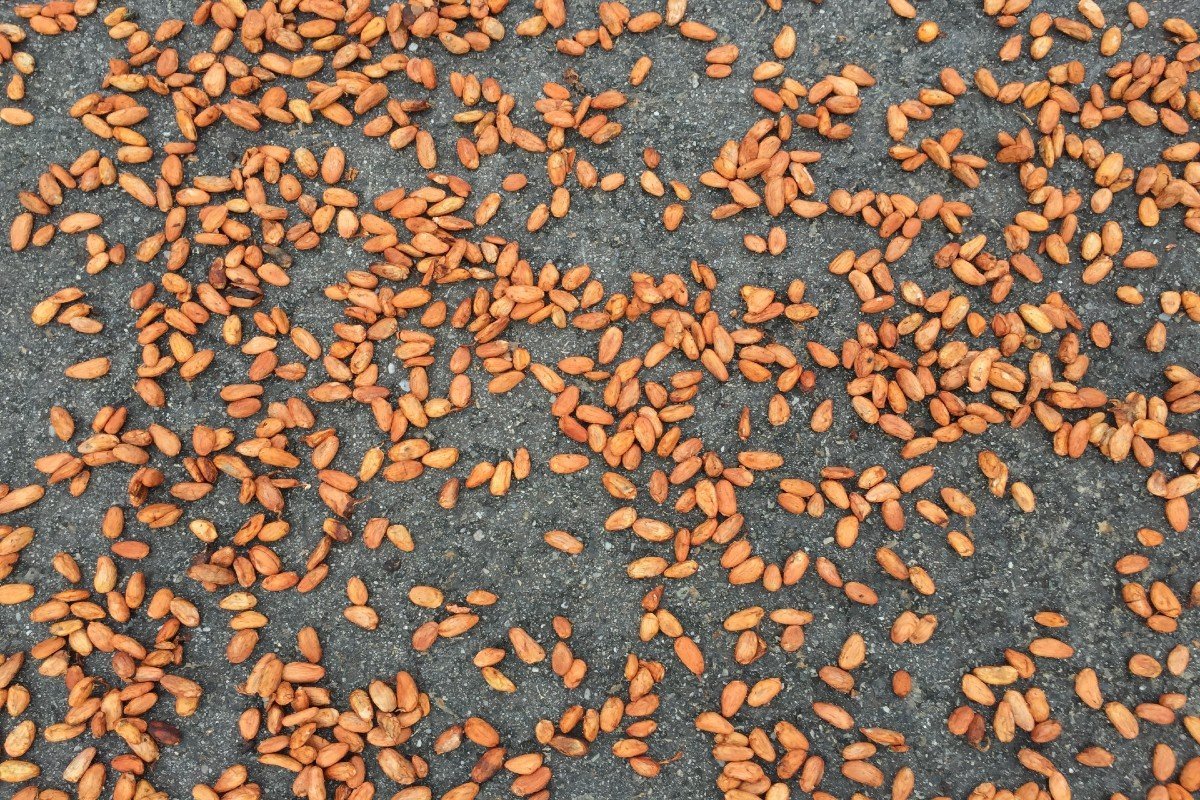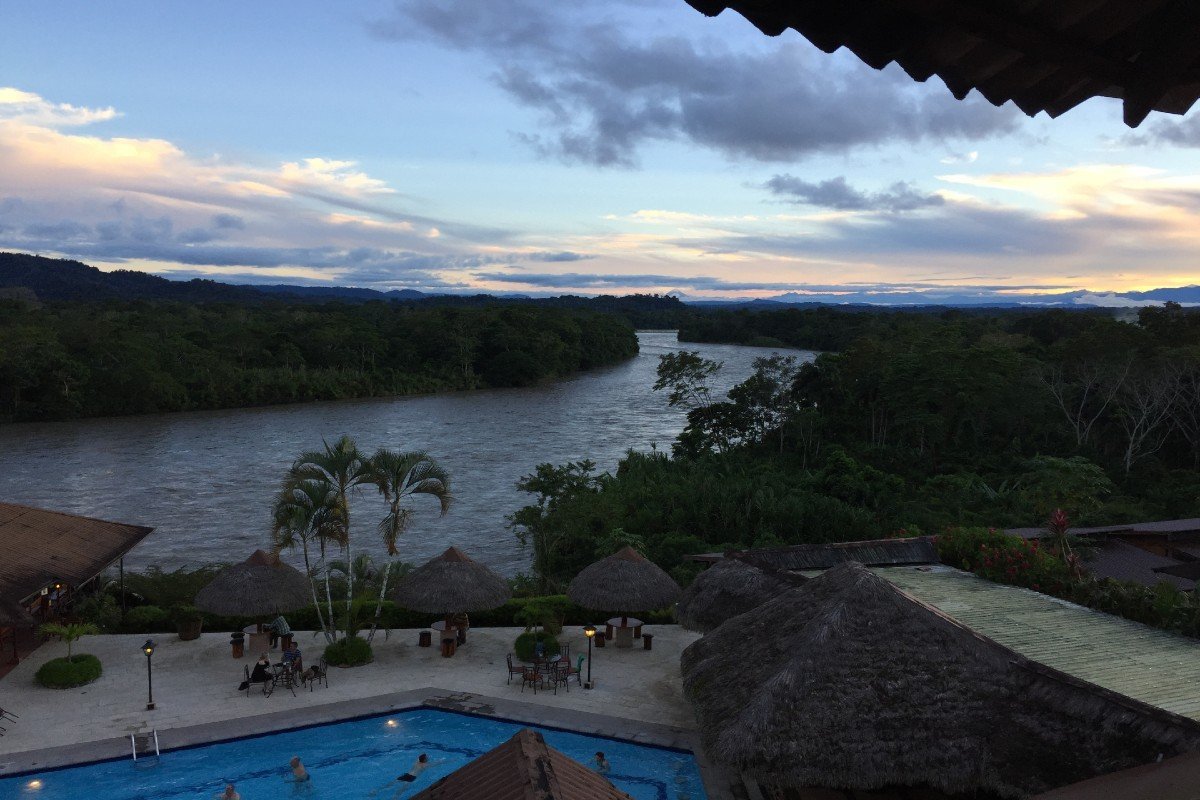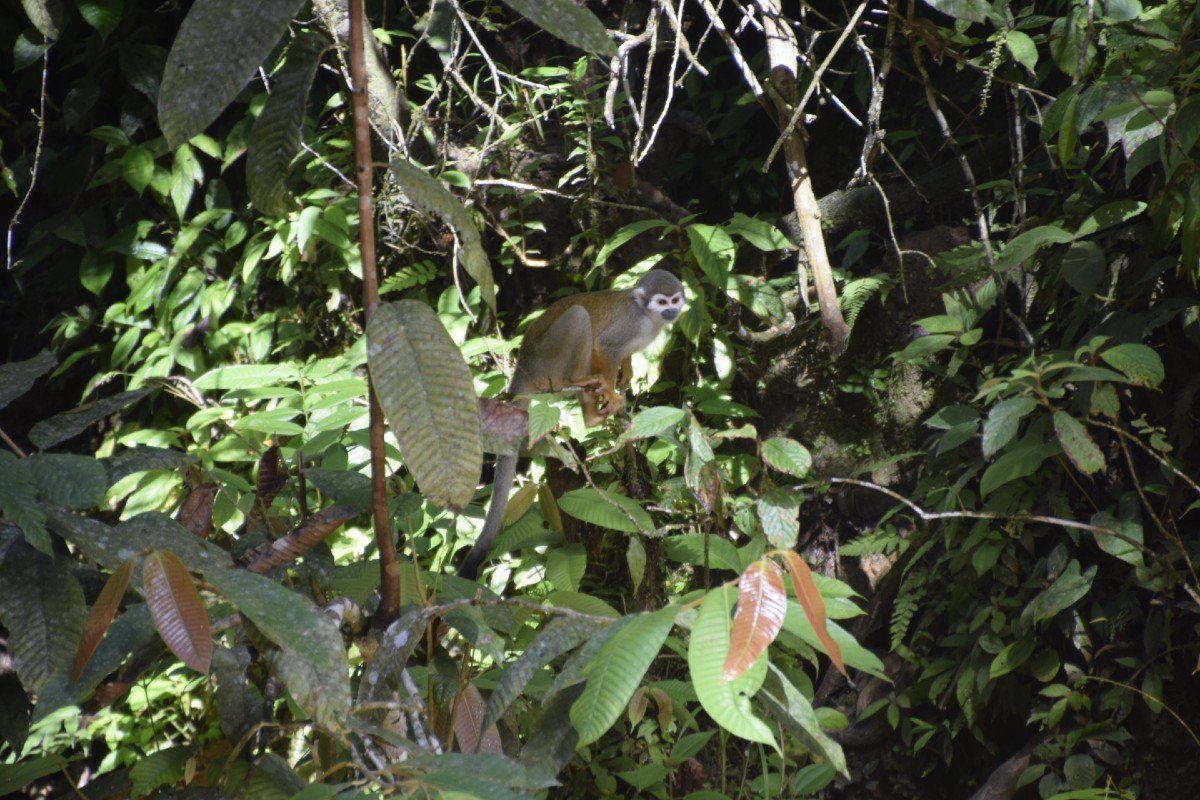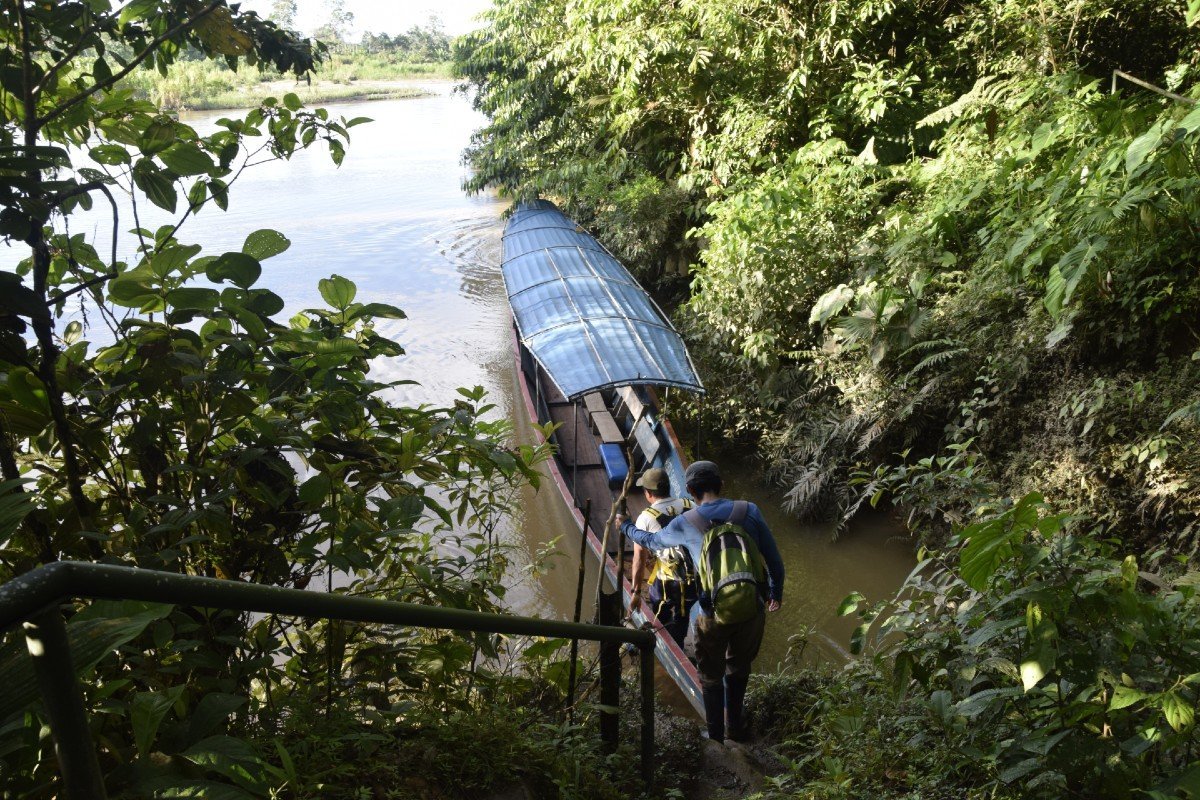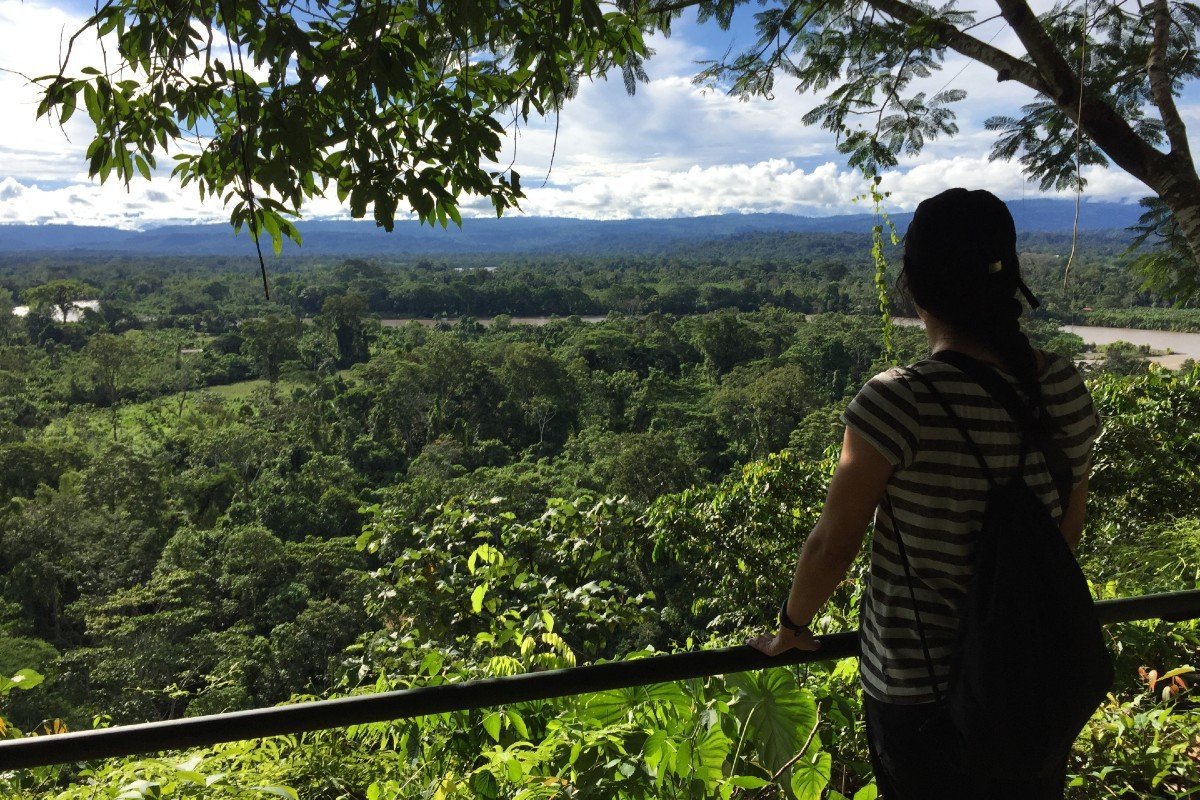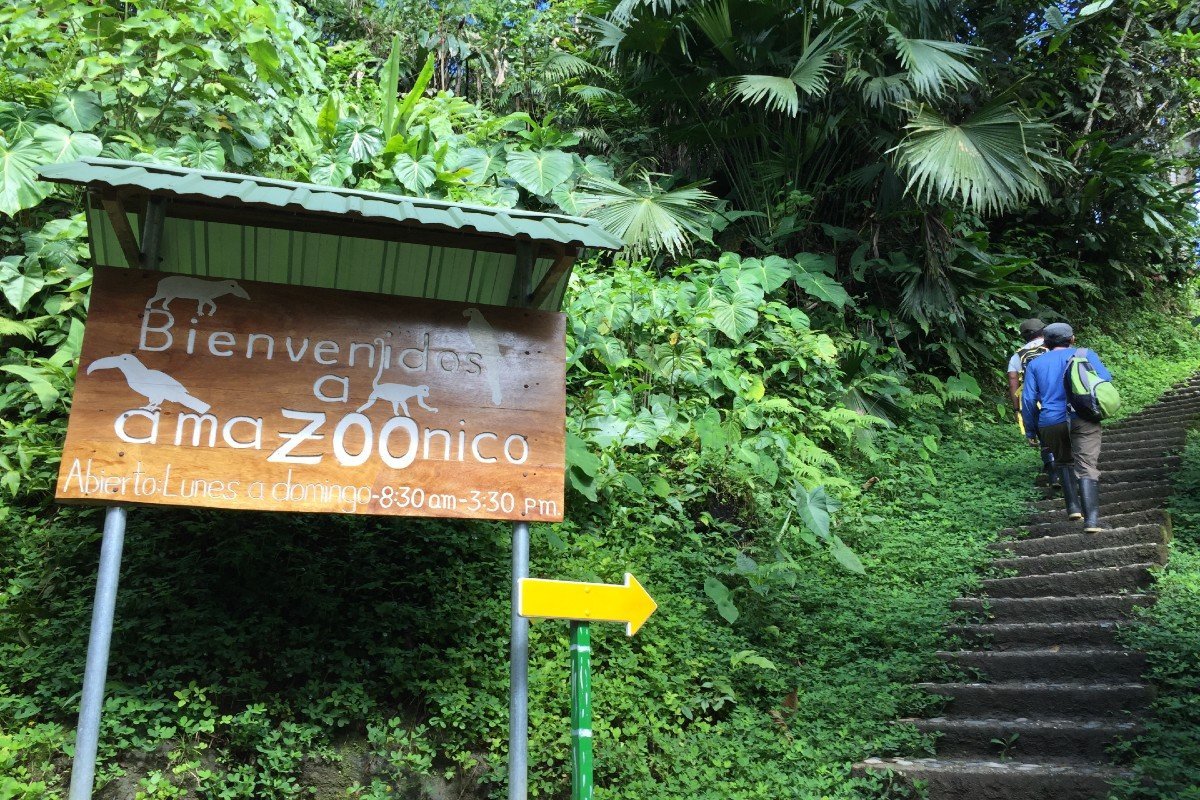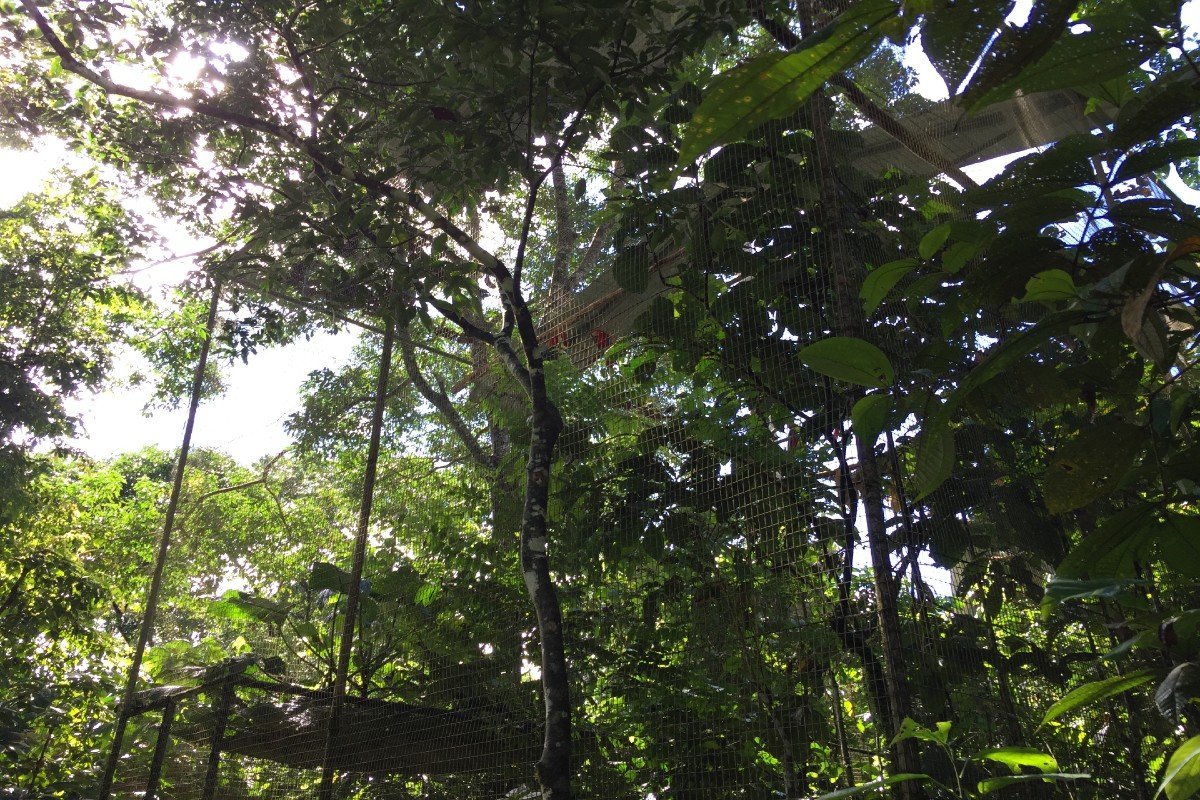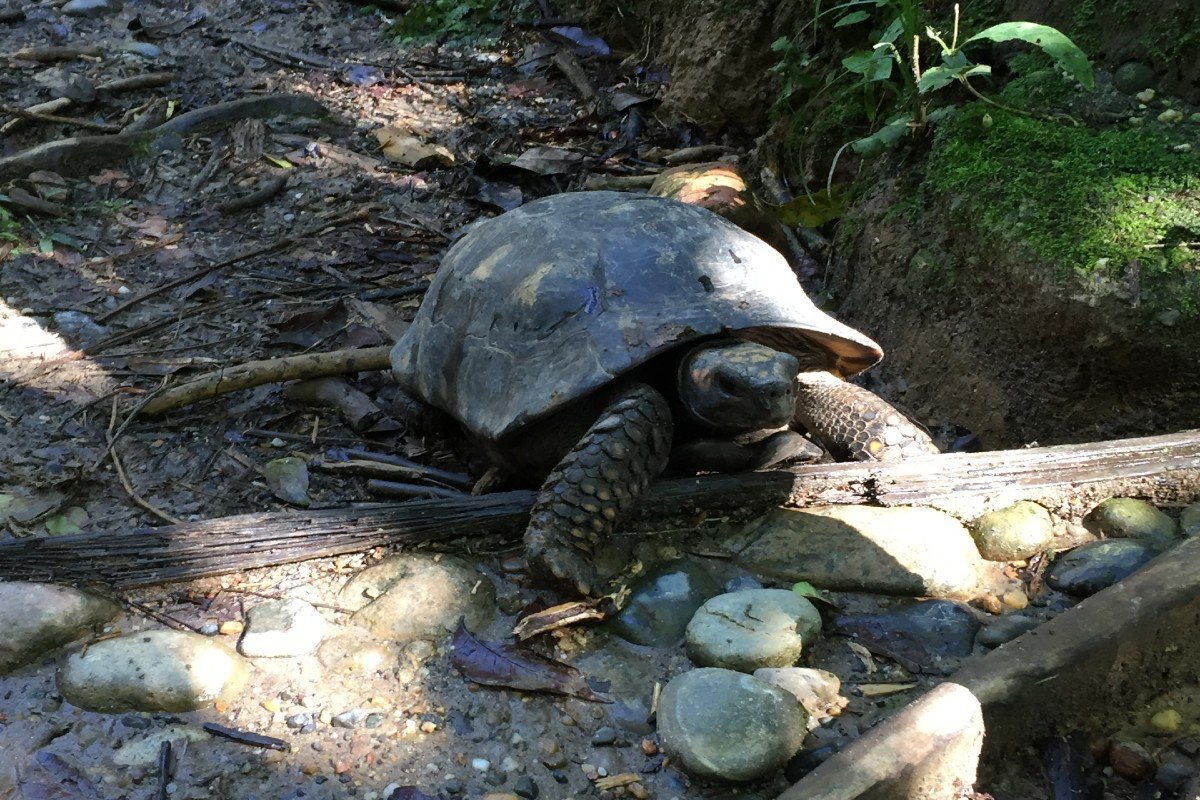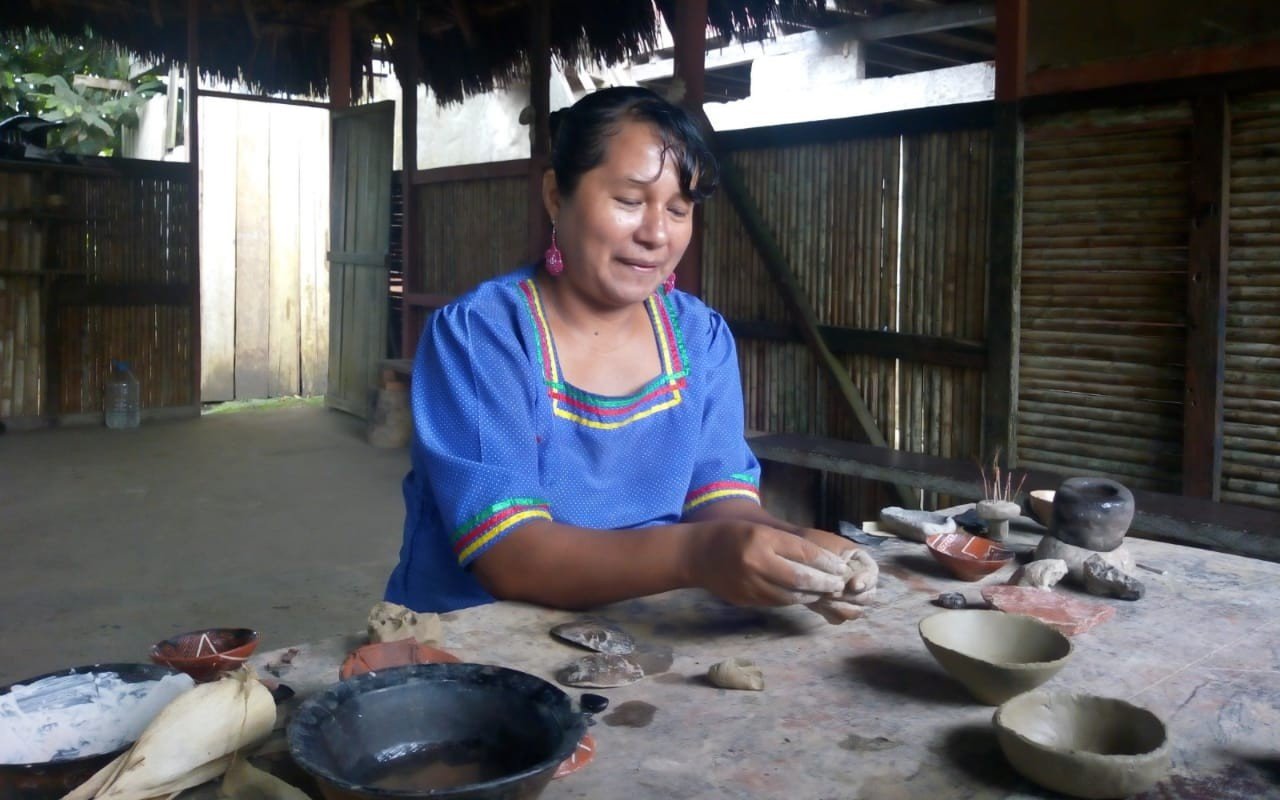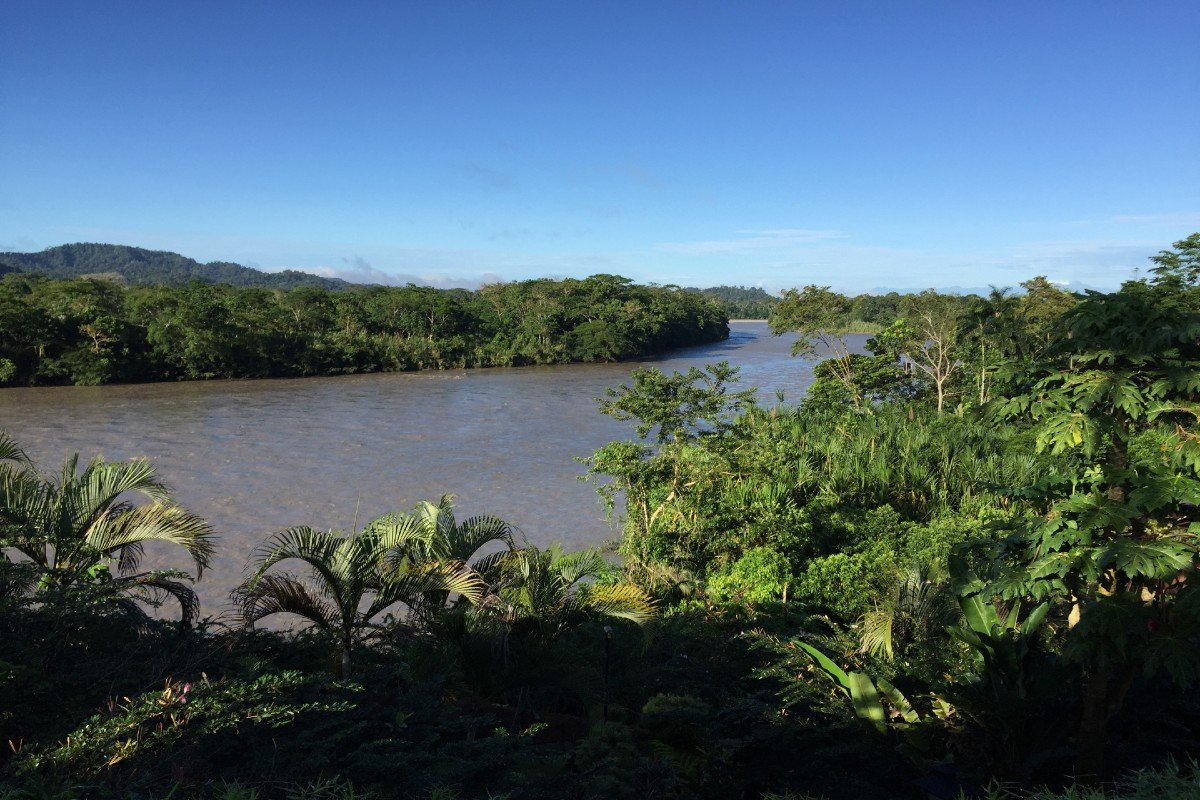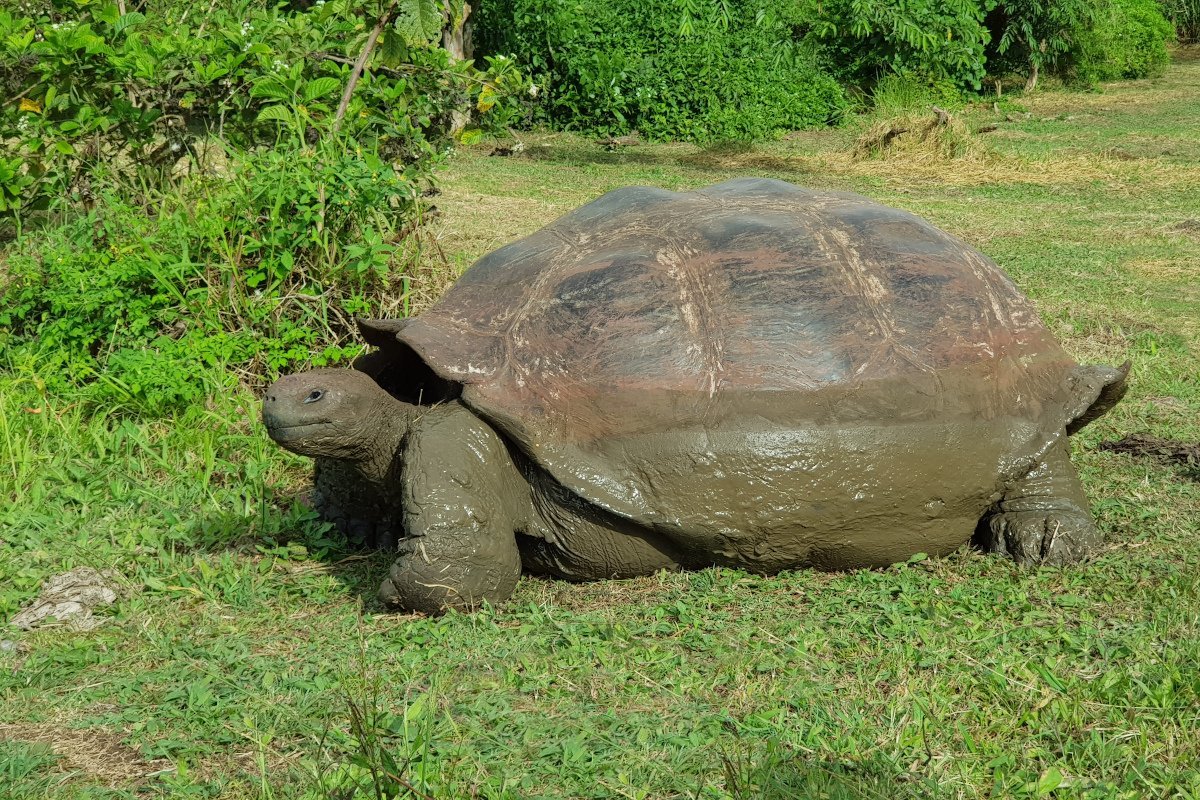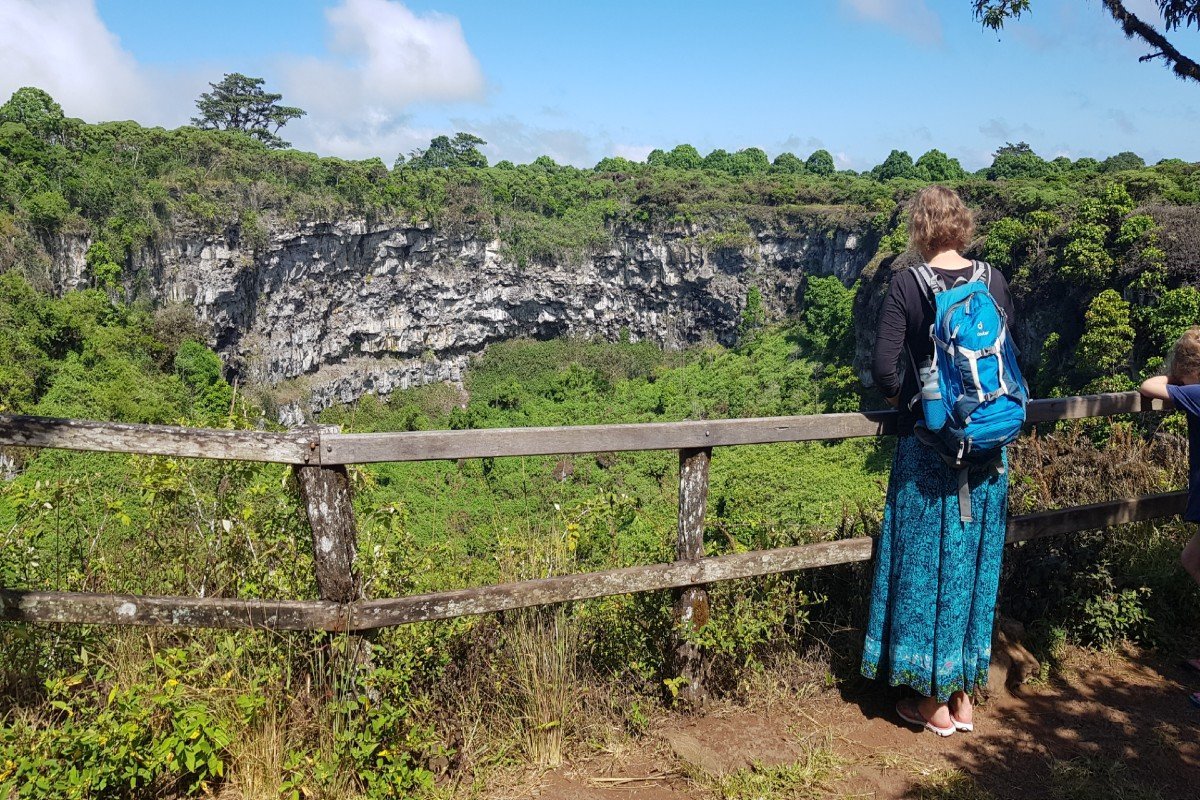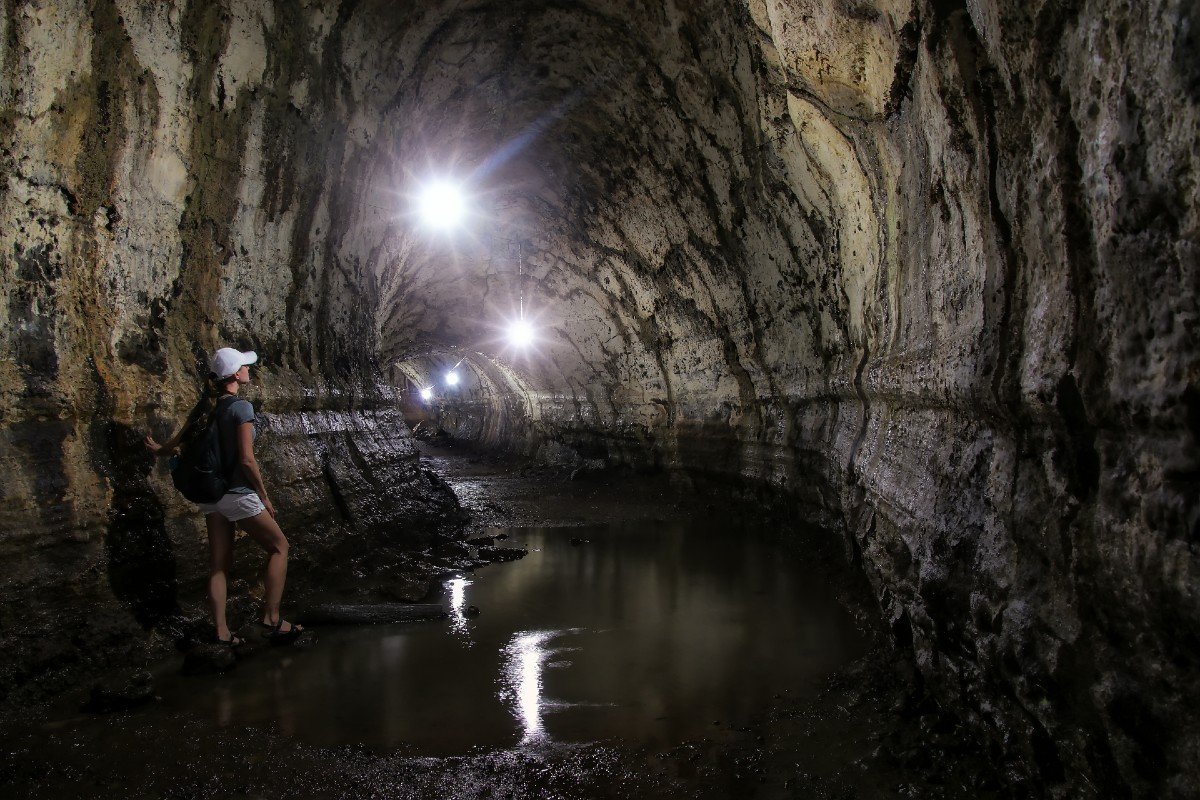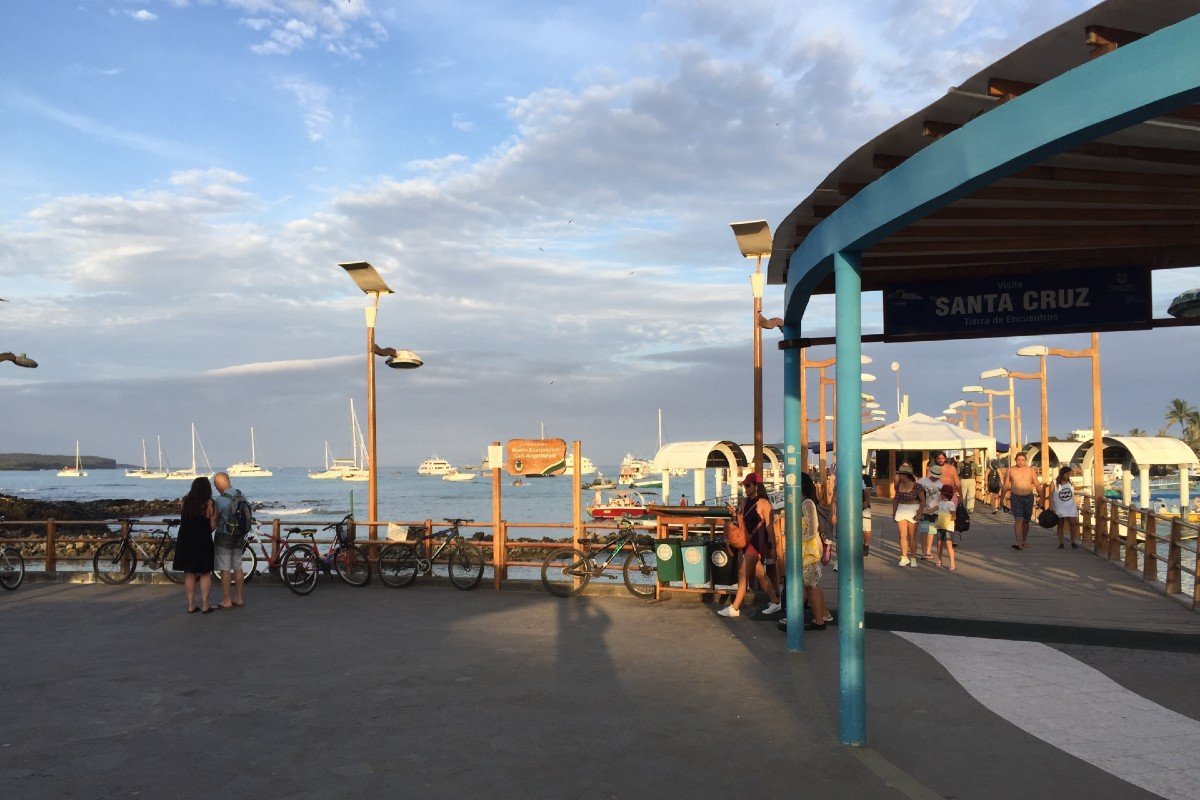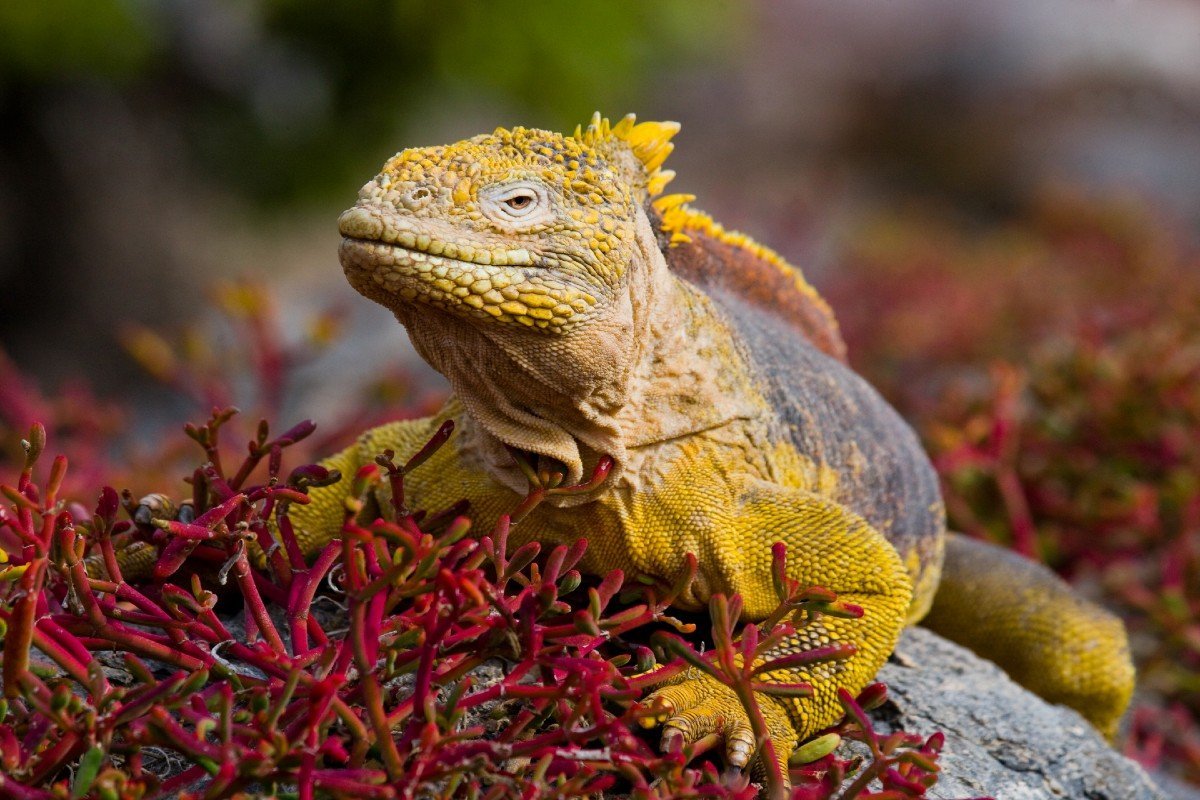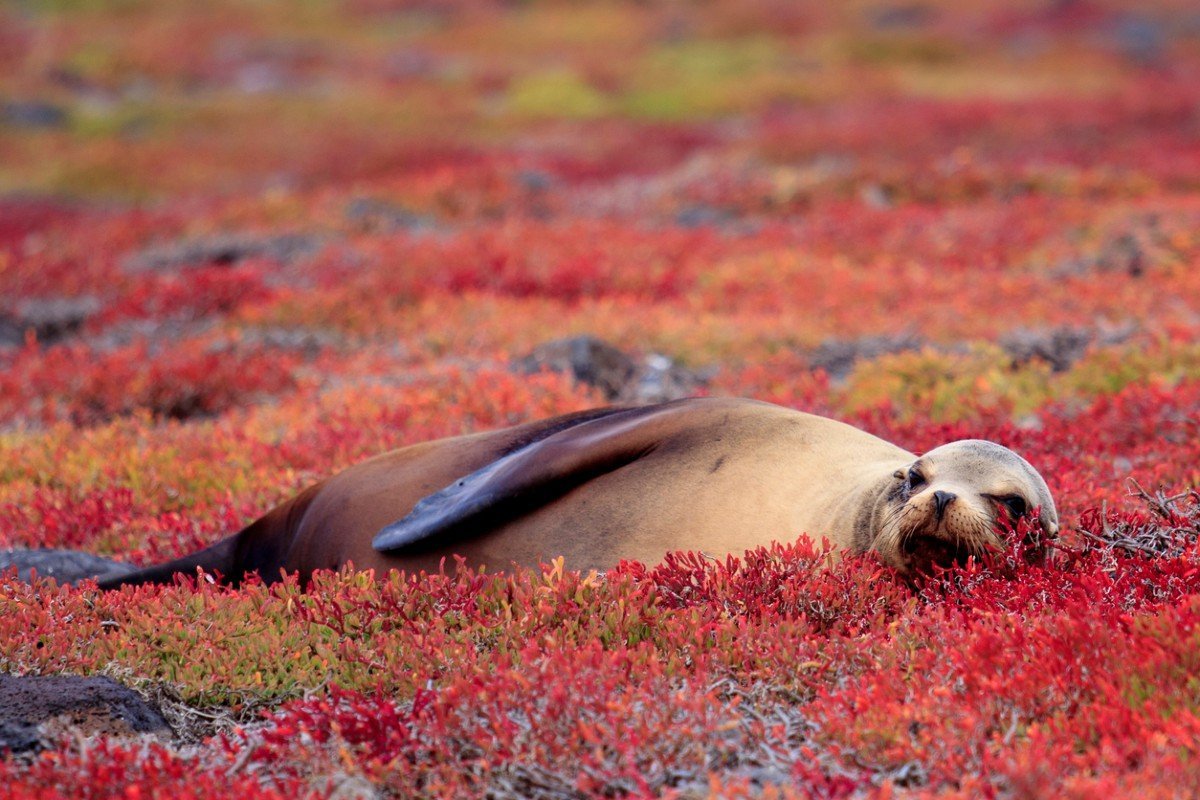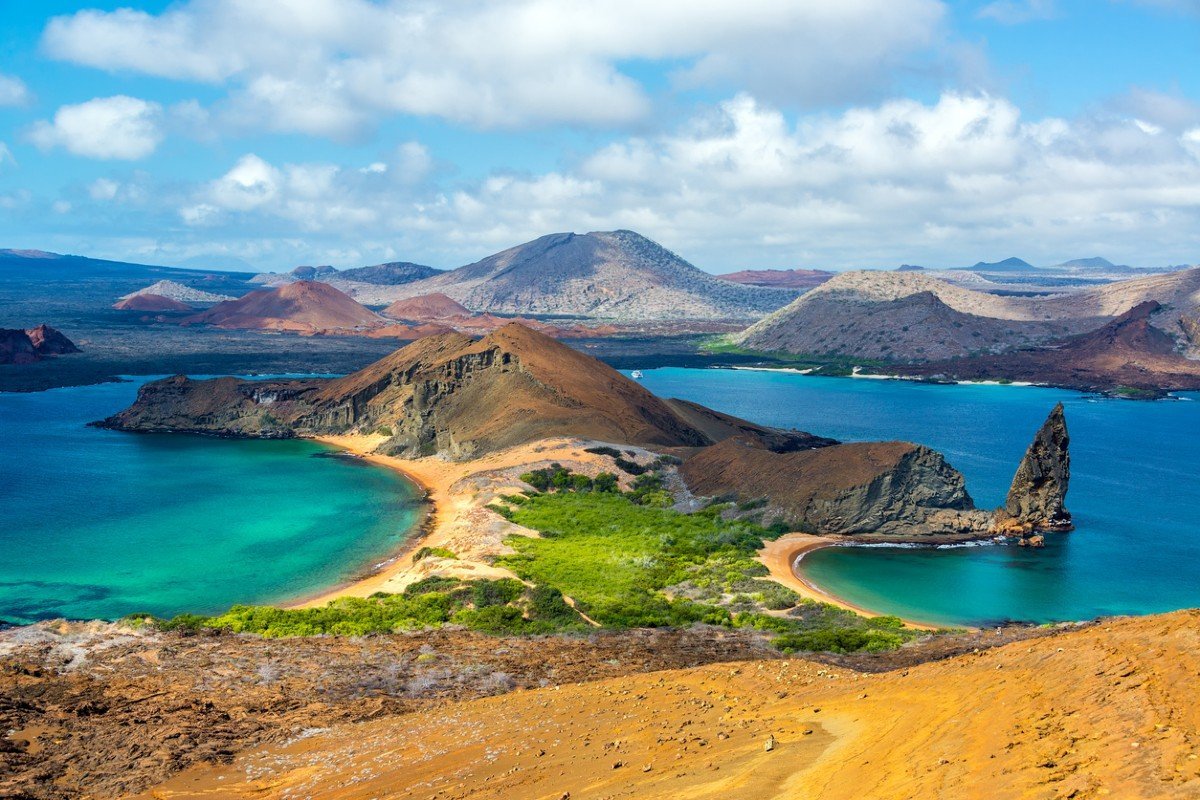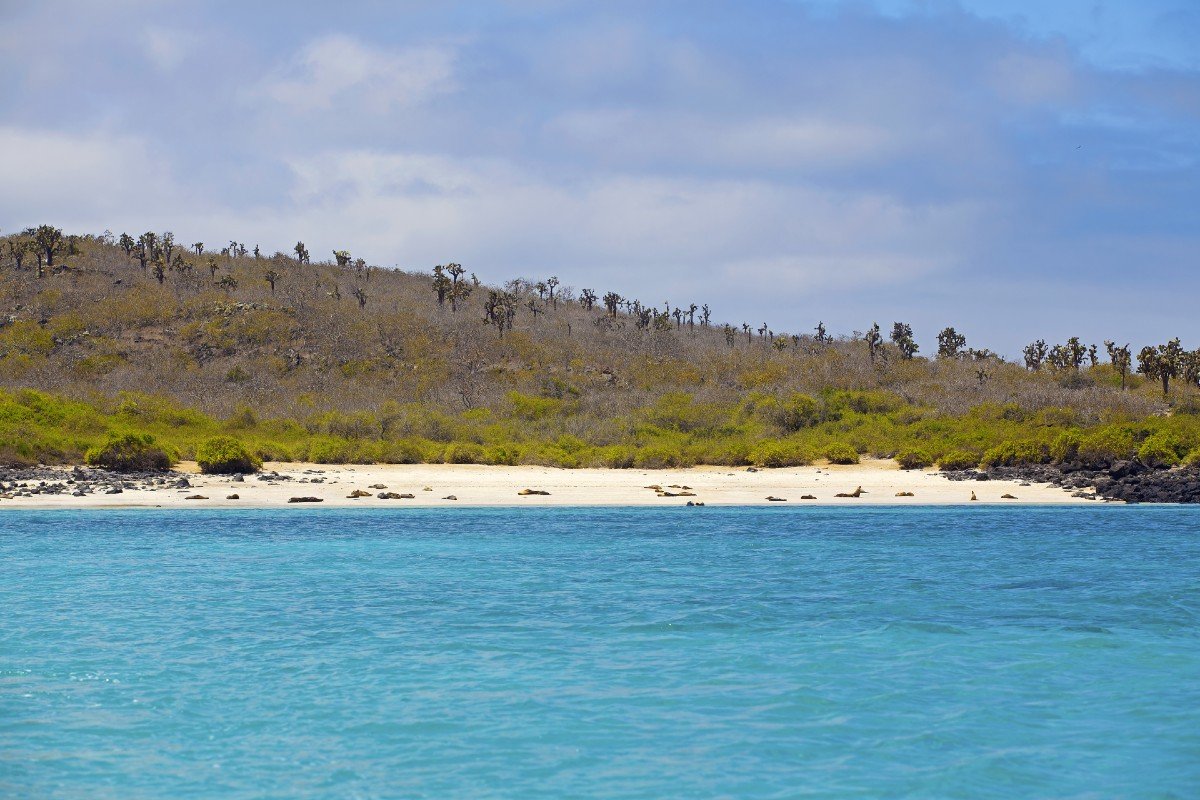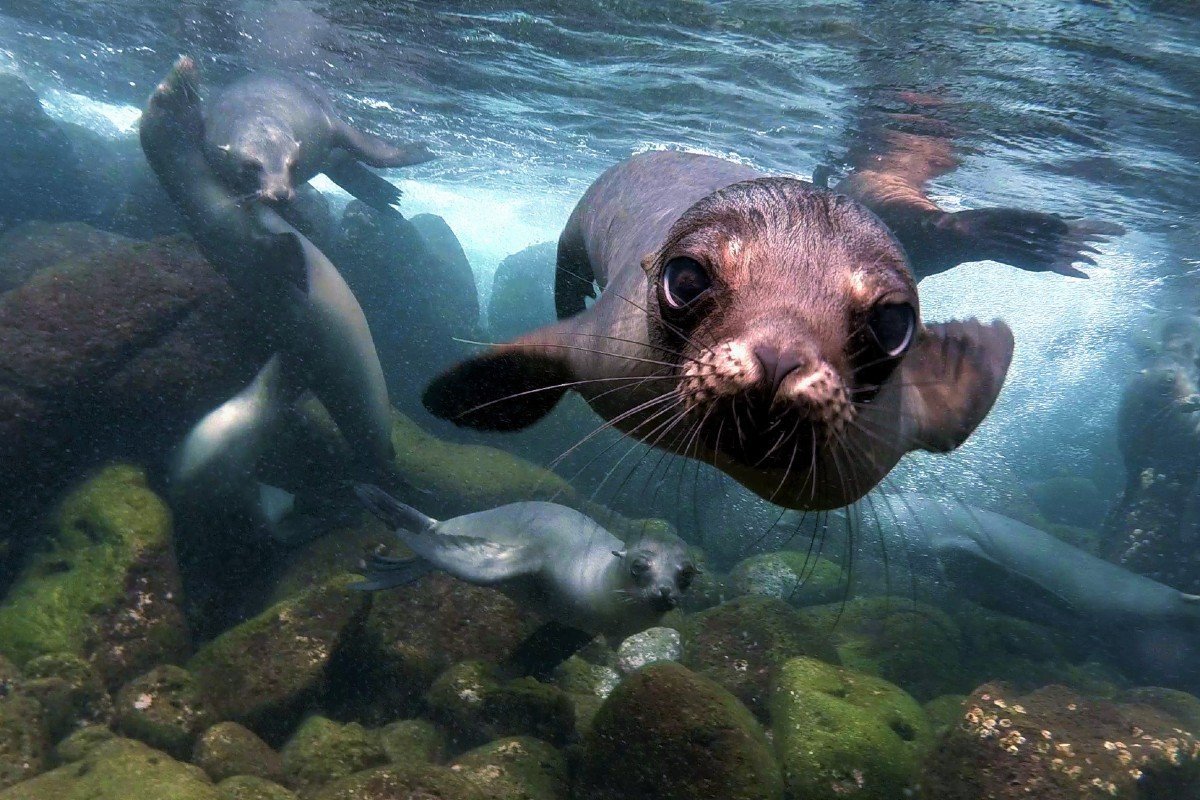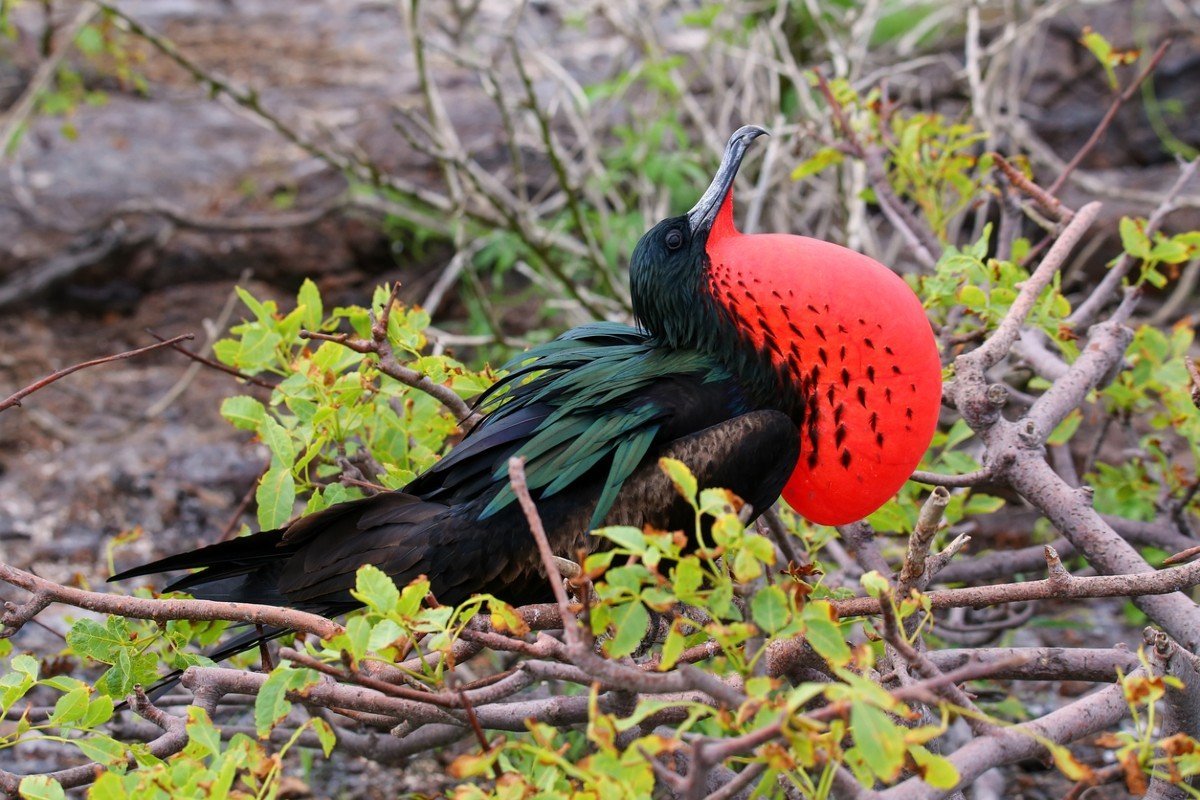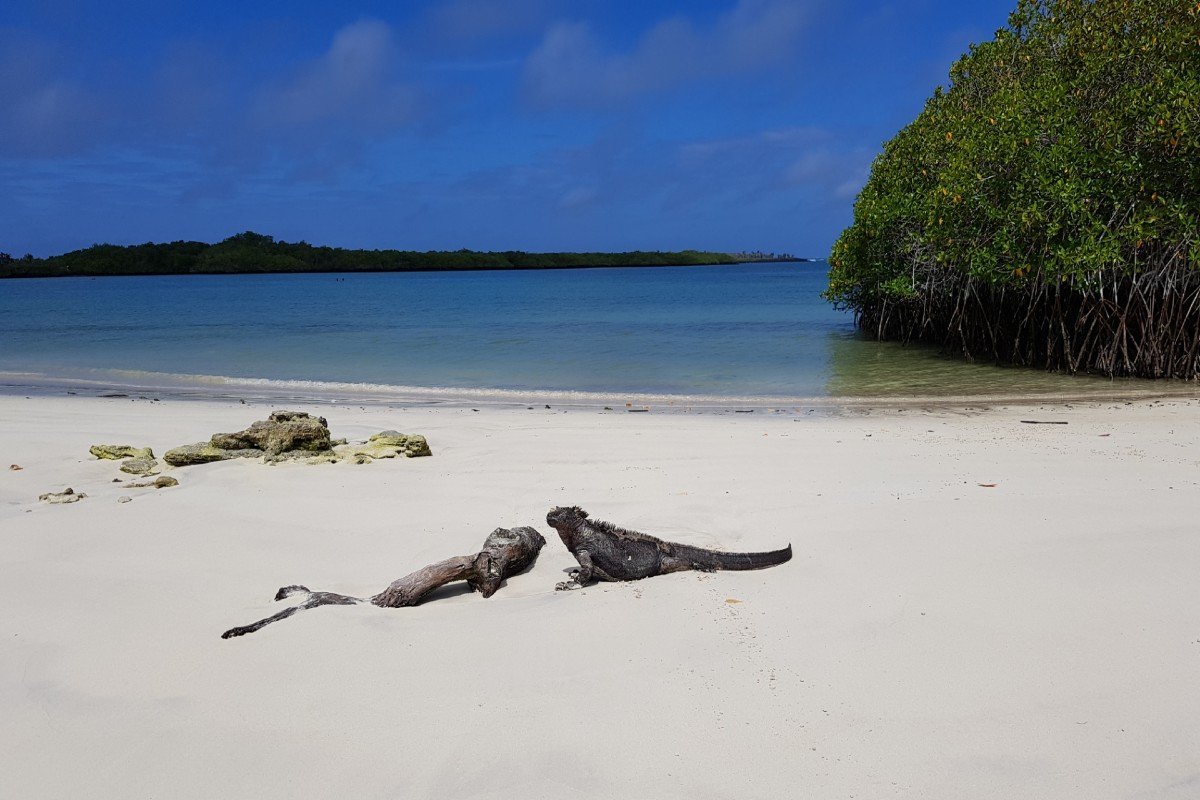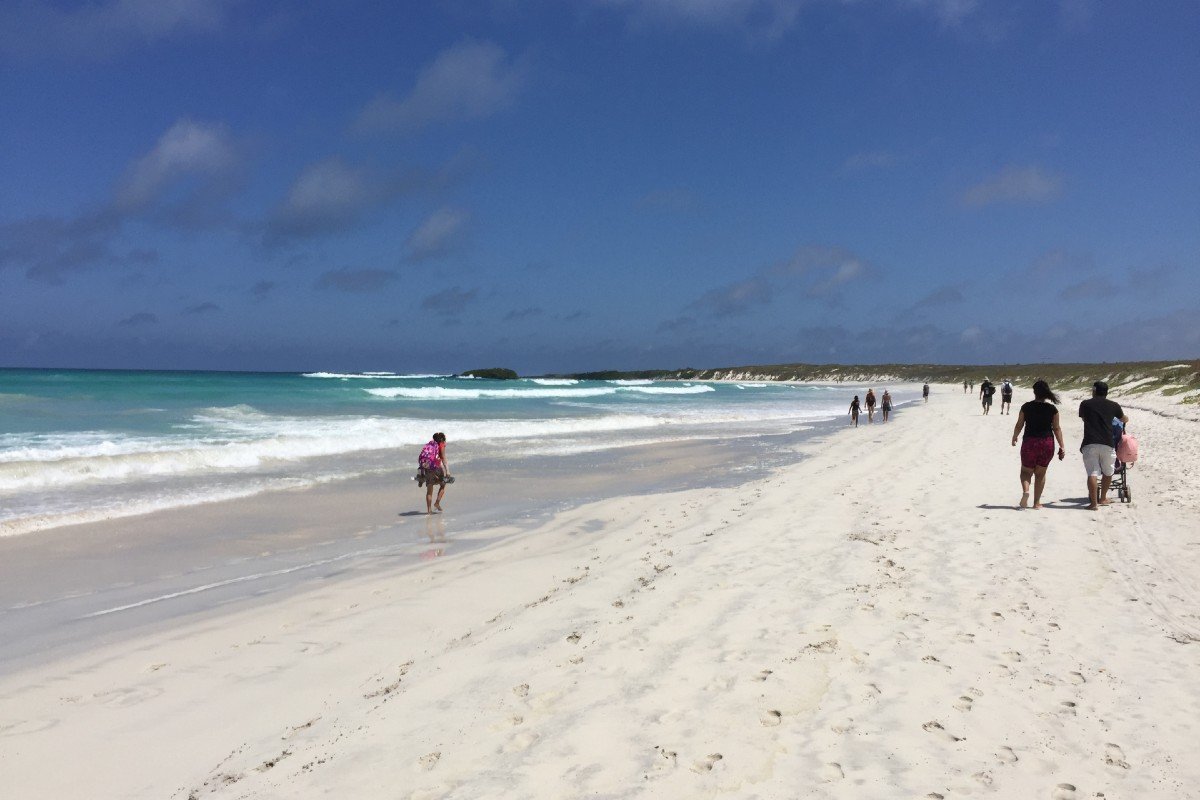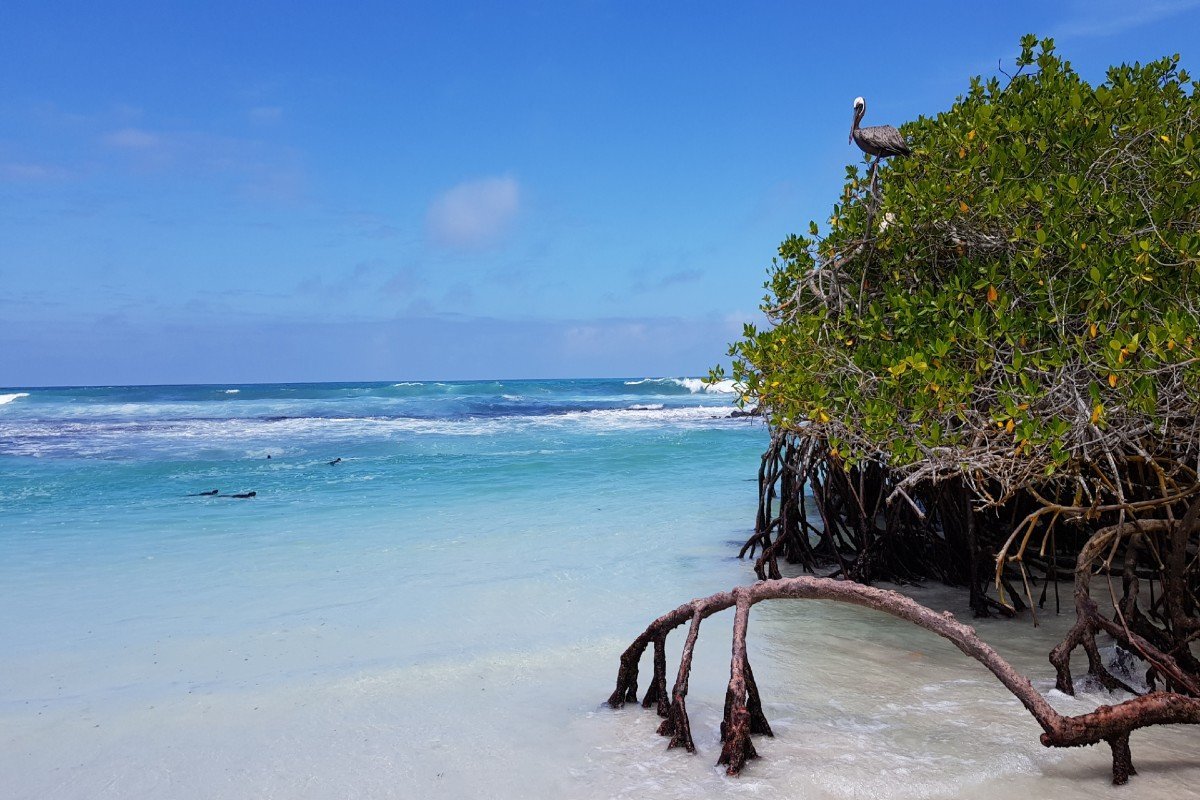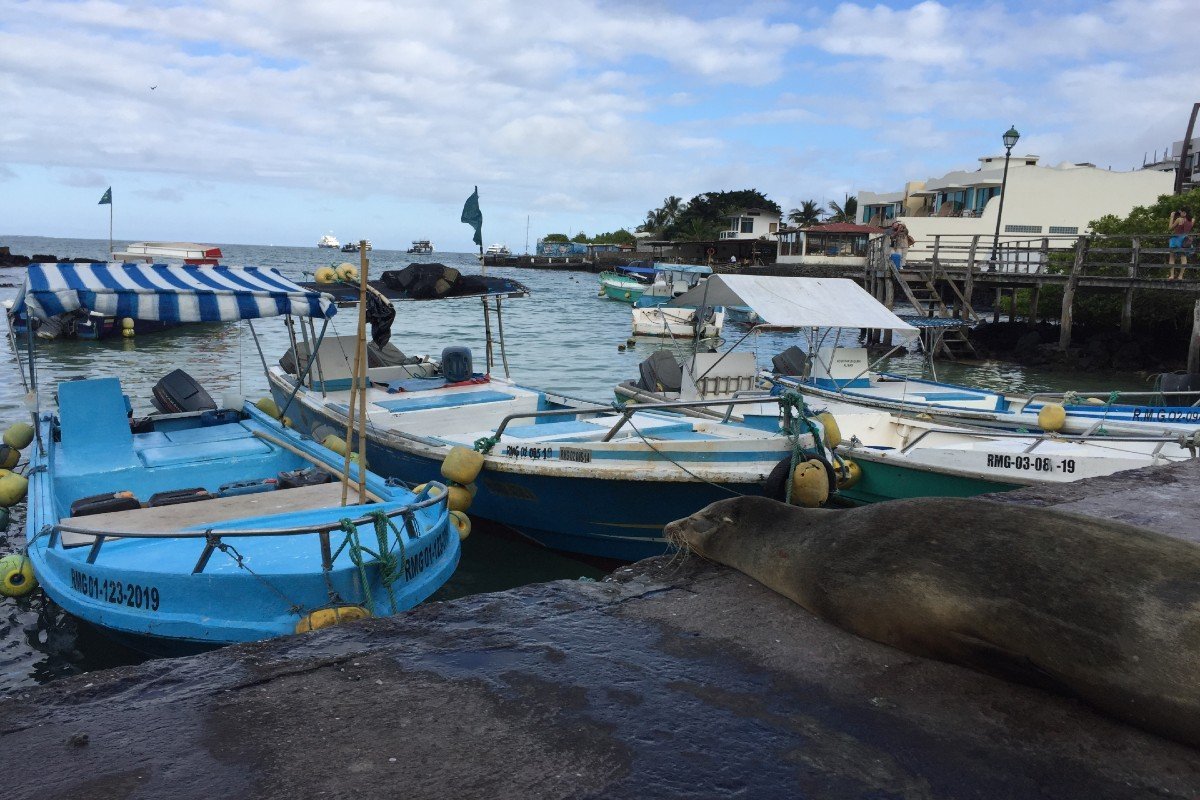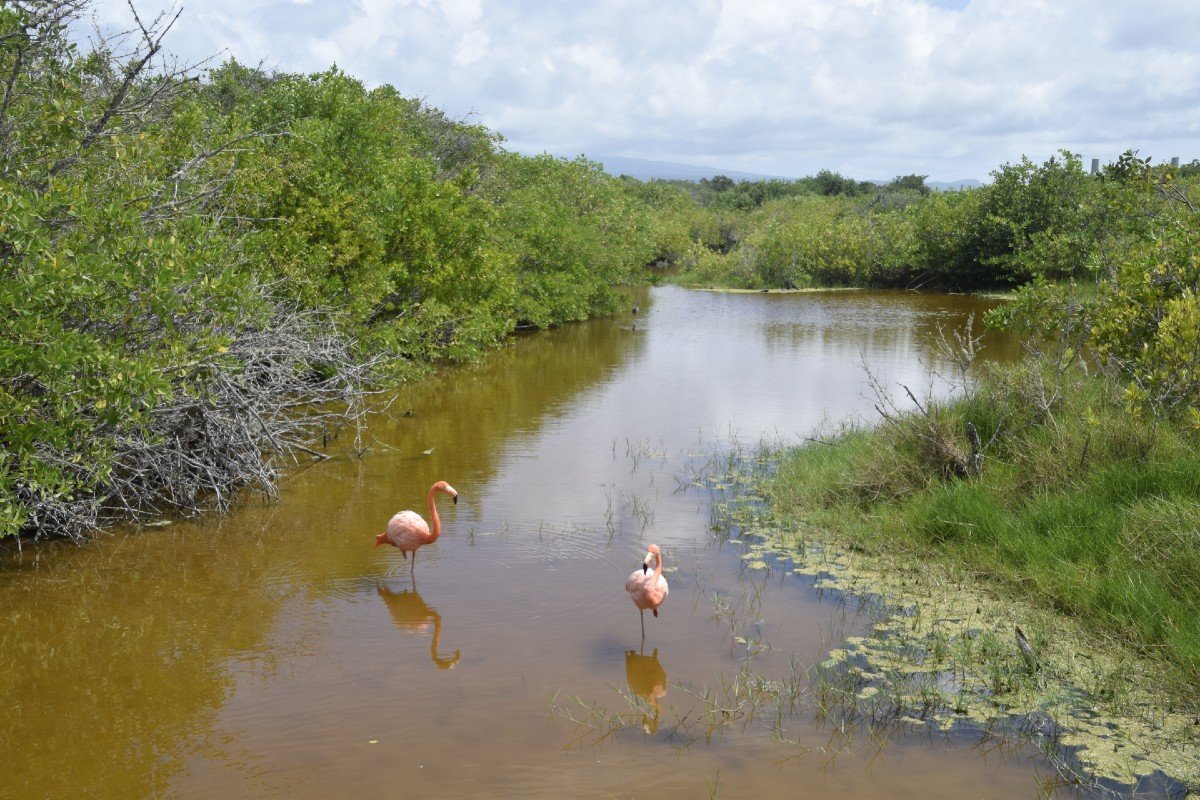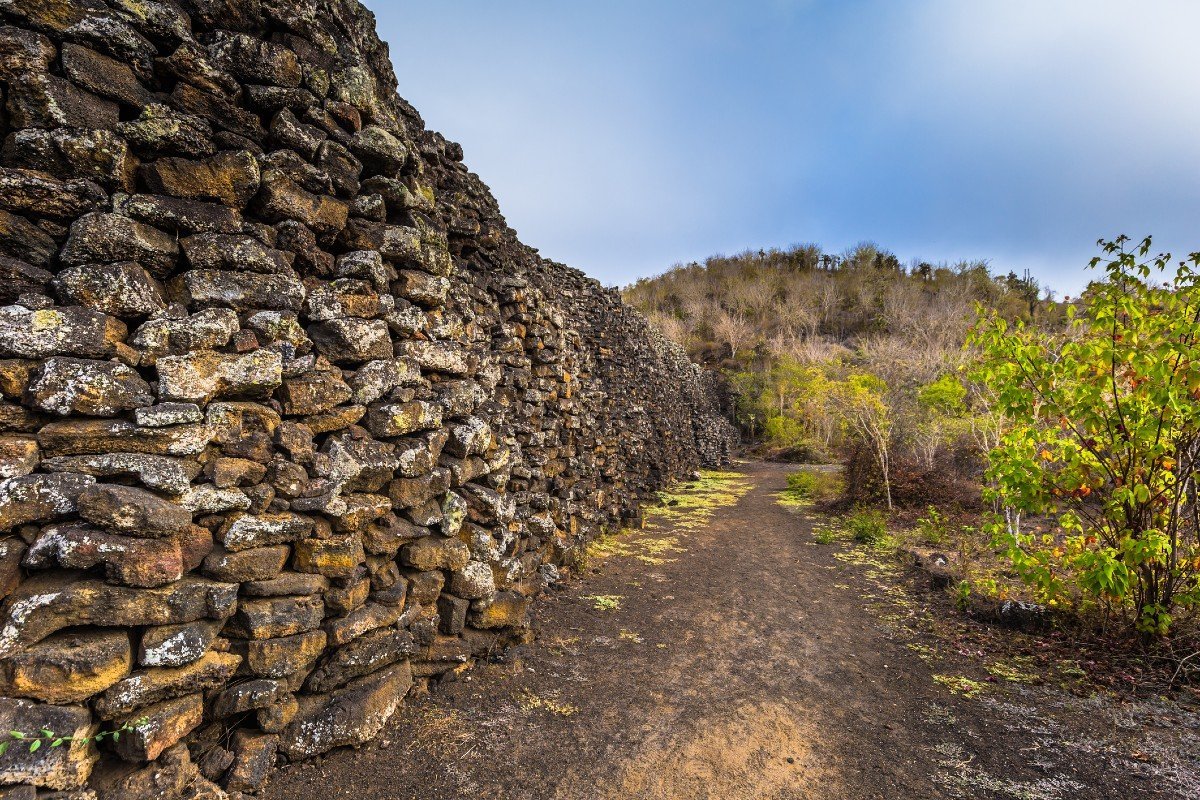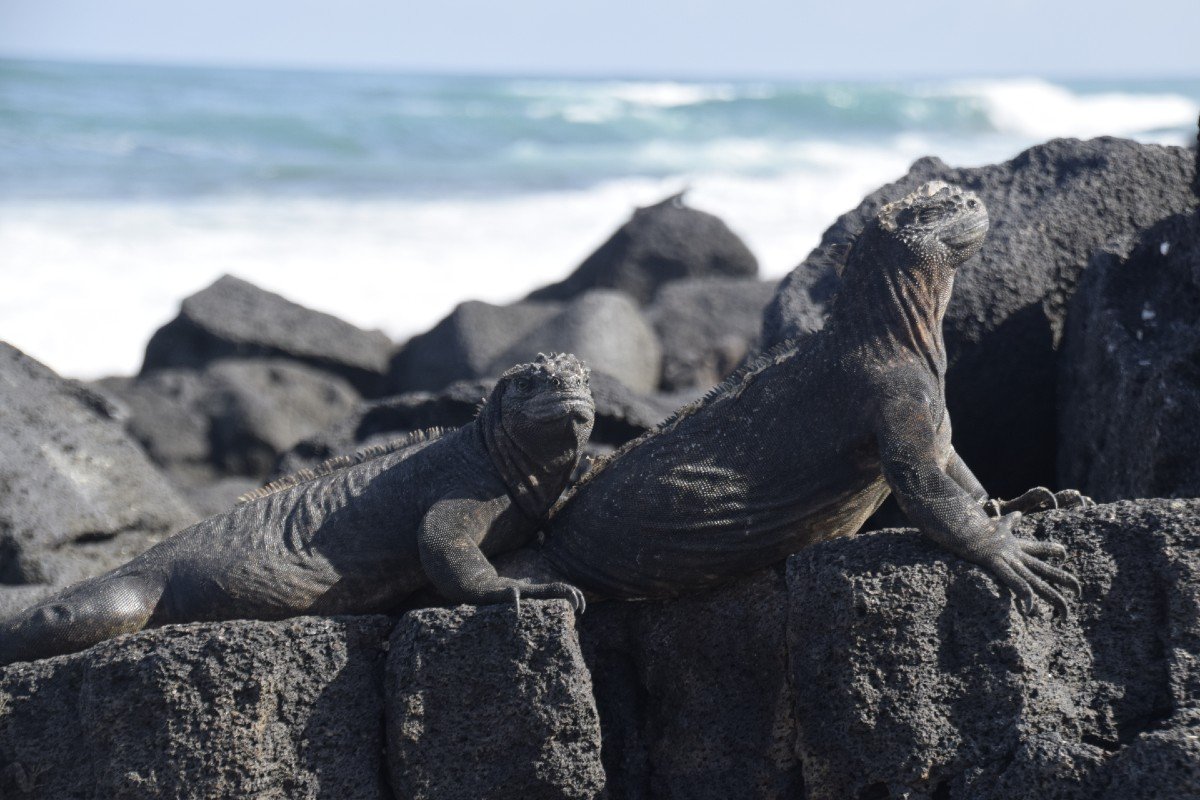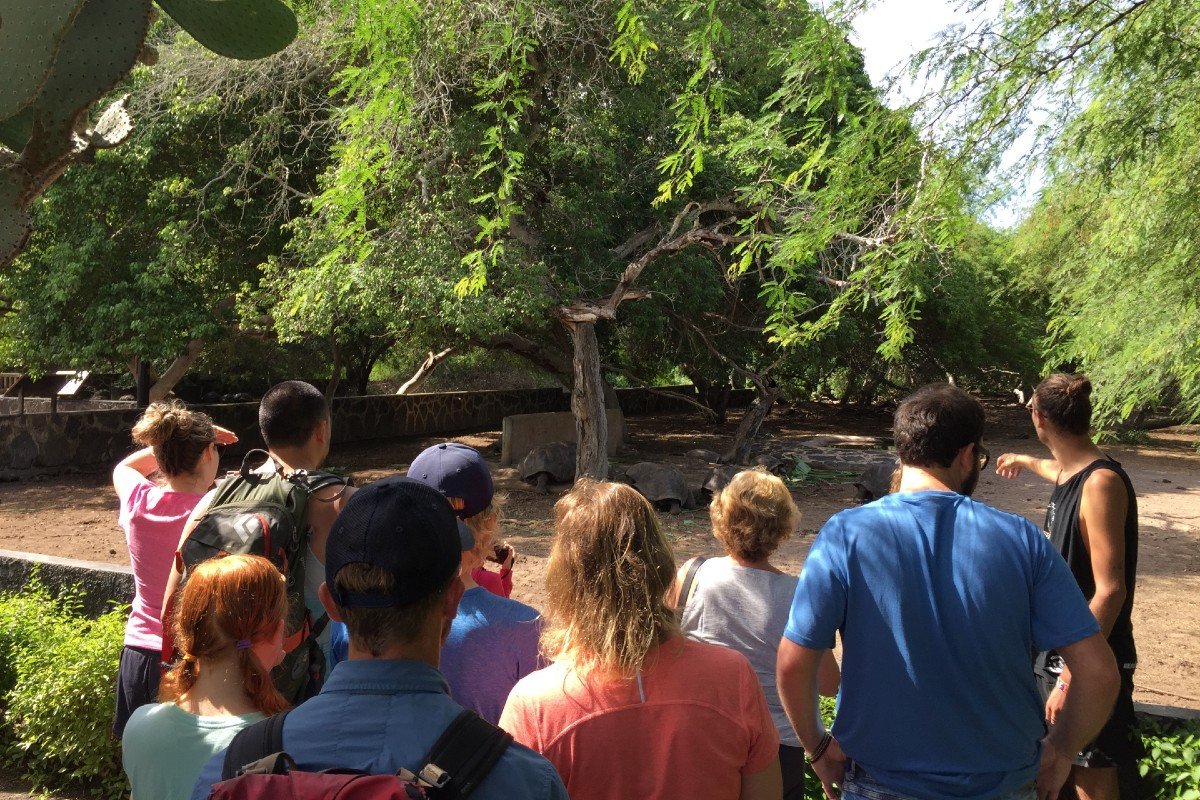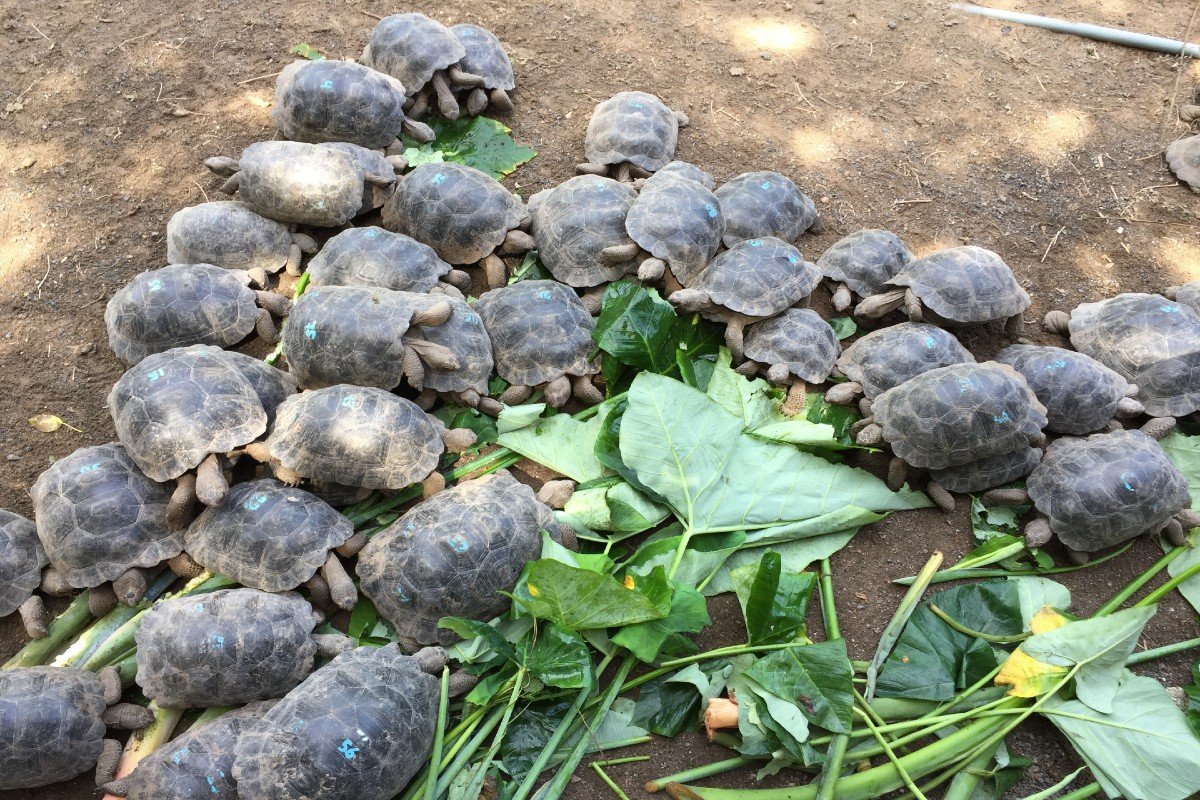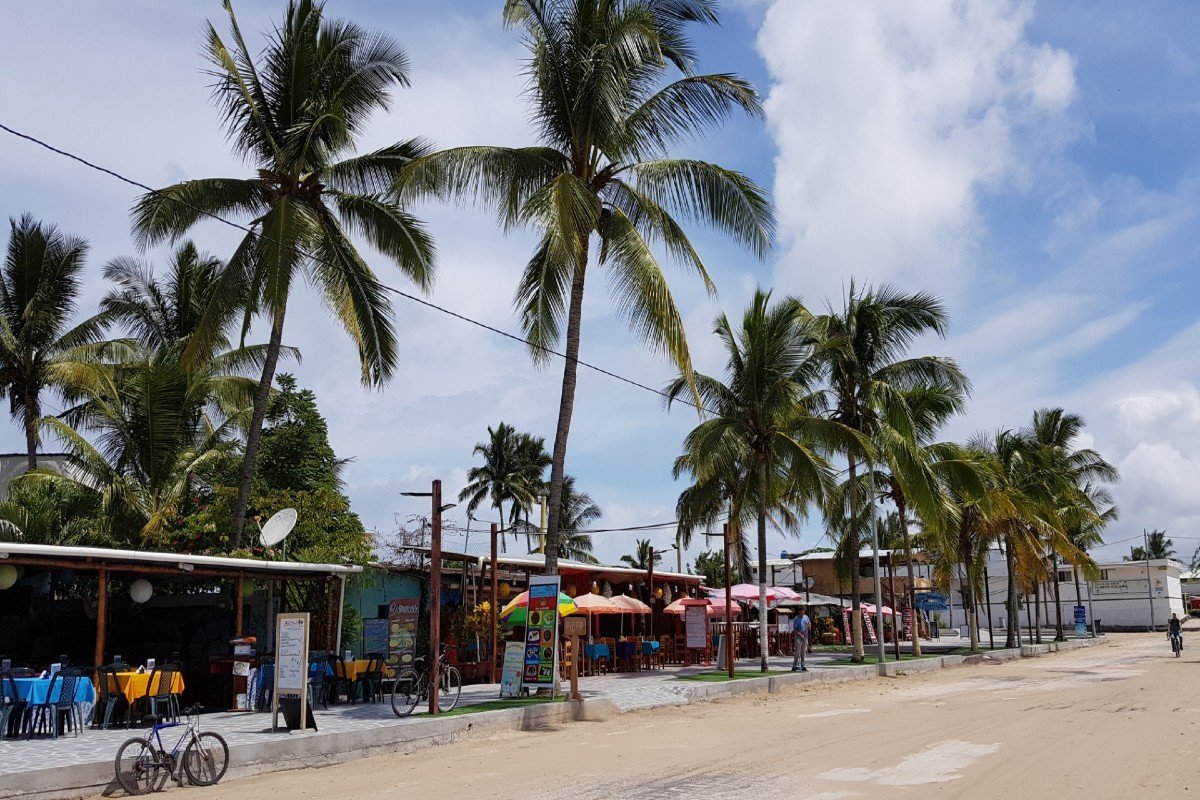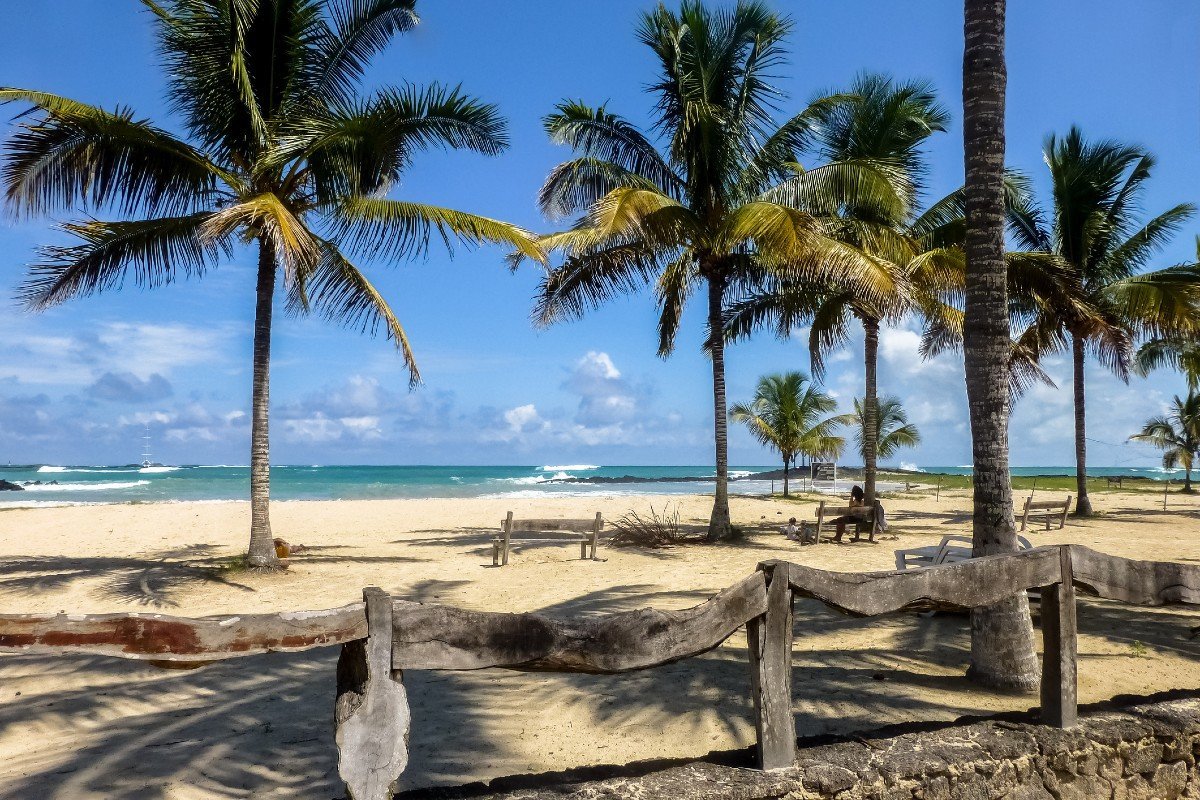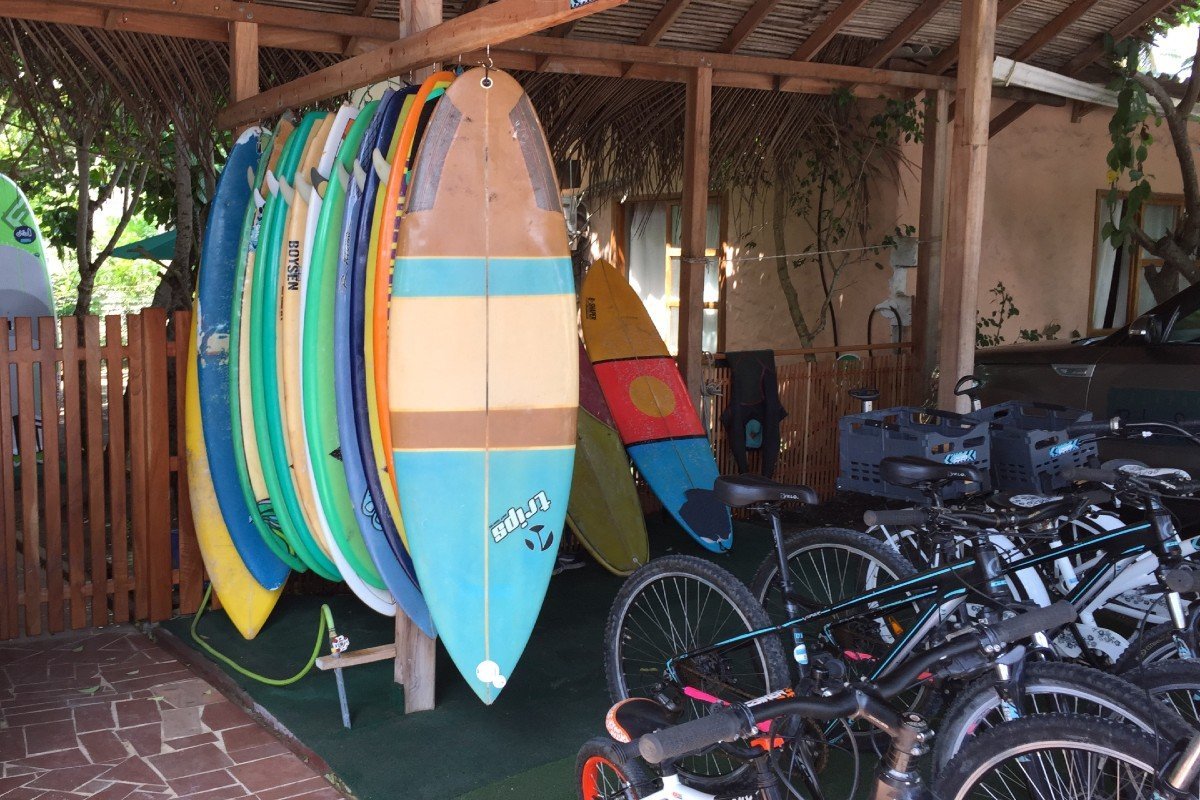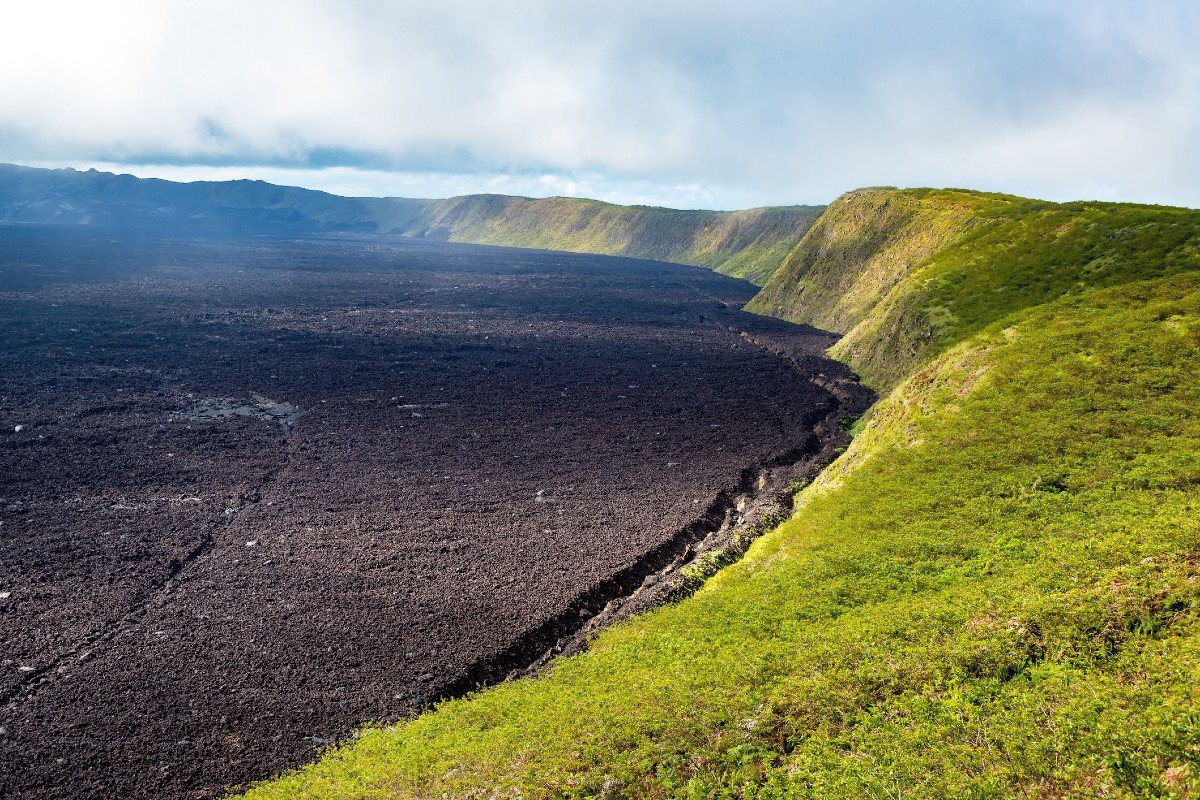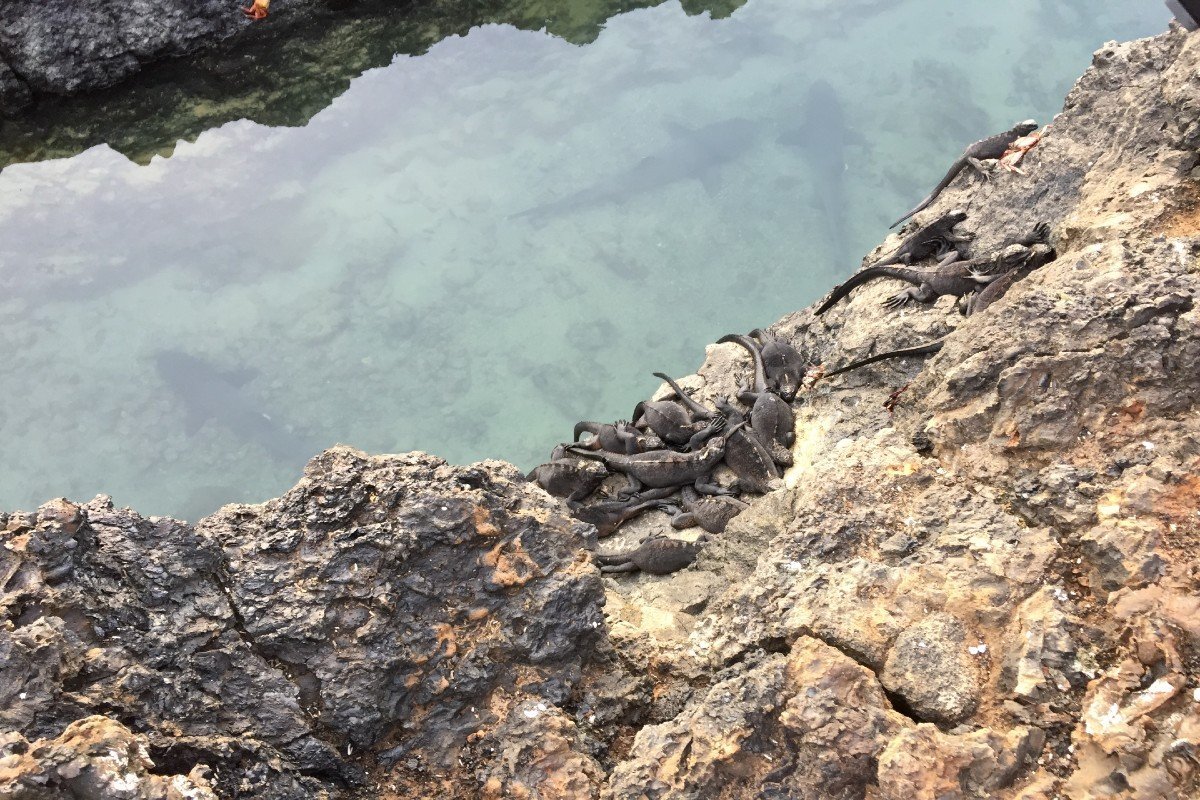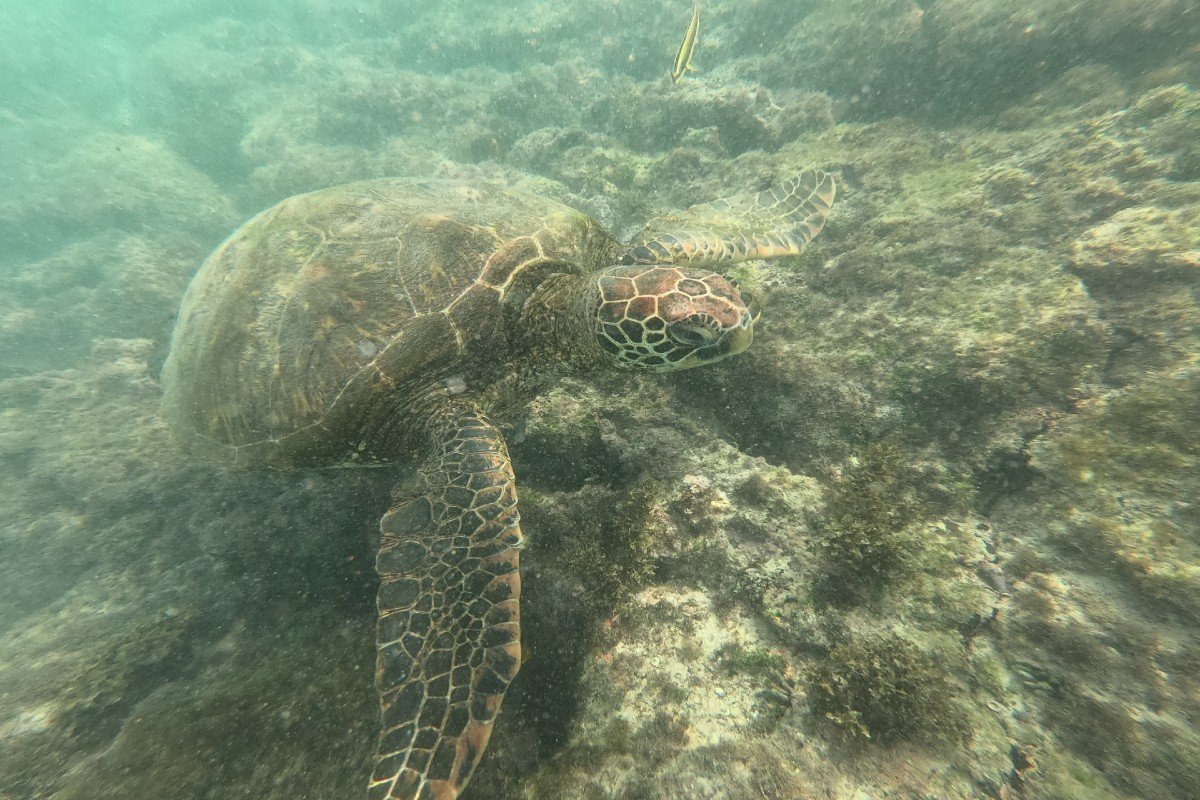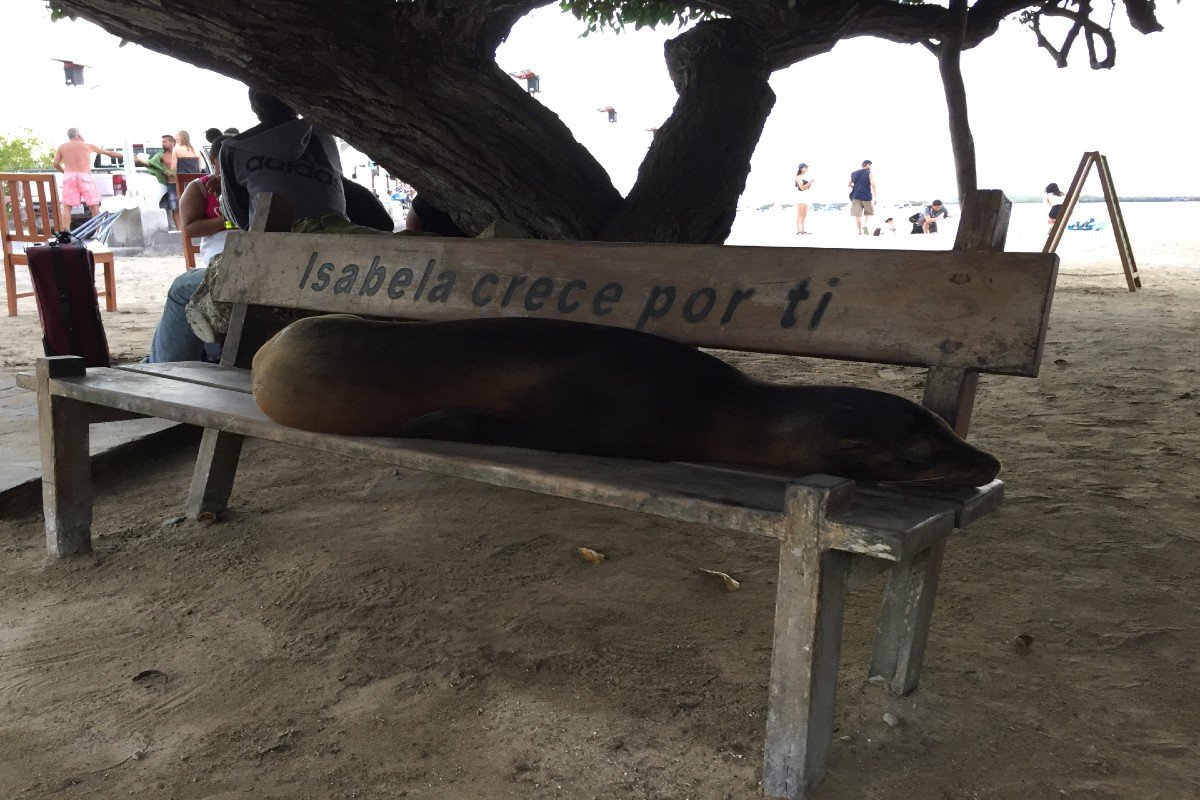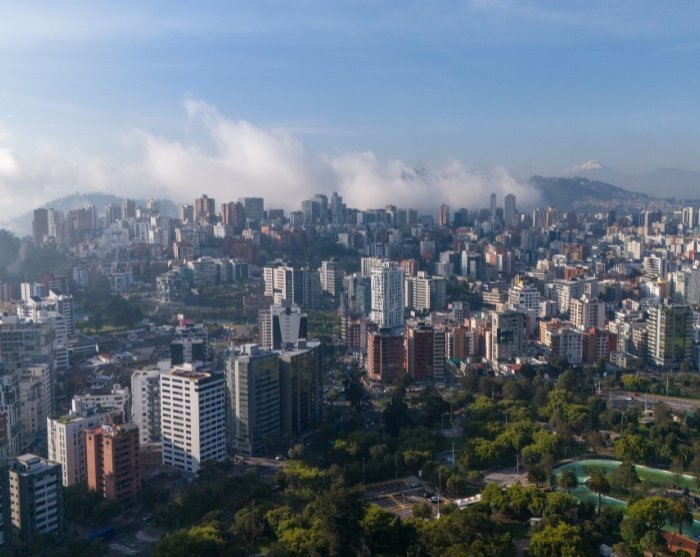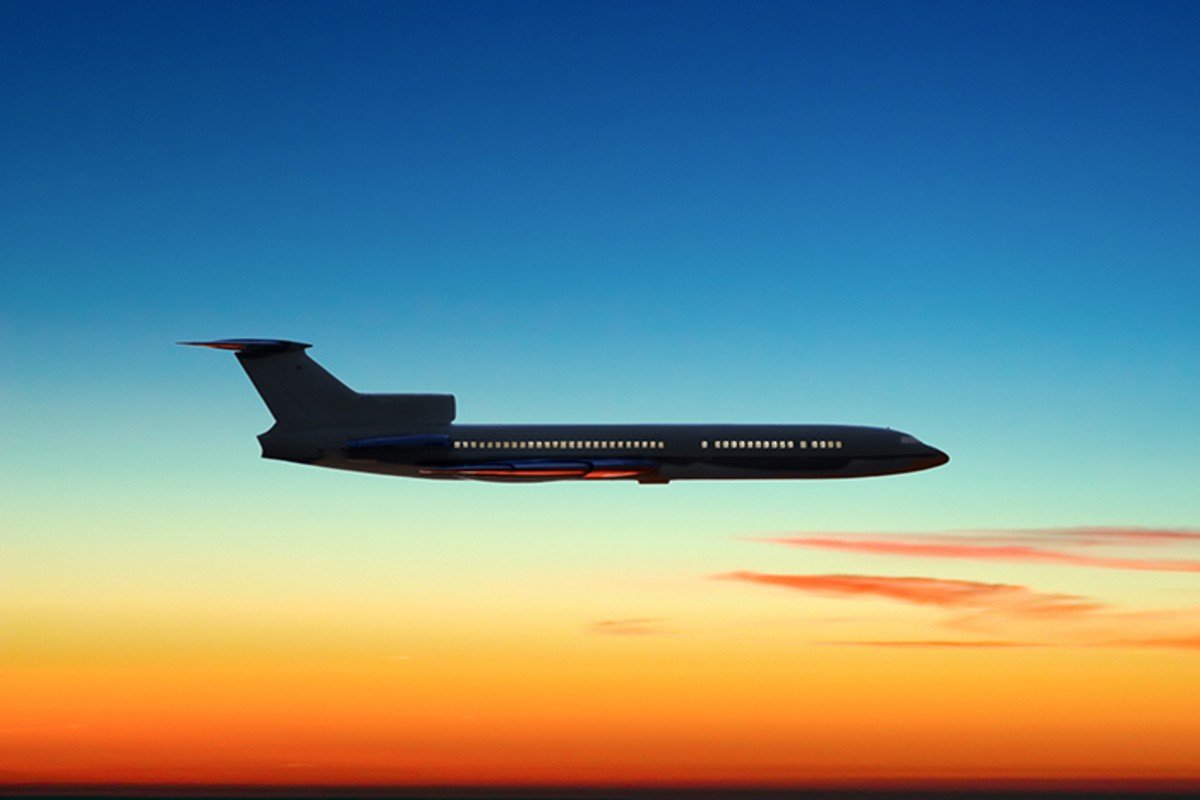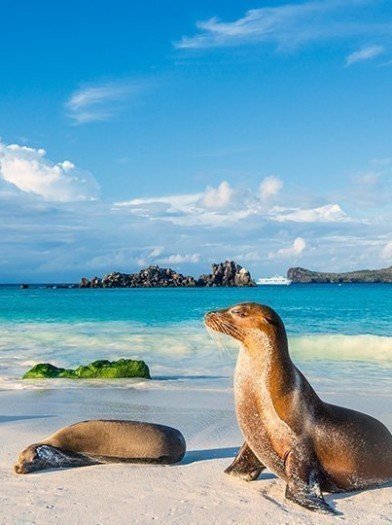Confidence Guarantee - Read more
- Home
-
Our tours
- Our tours
- Africa
- Asia
- Latin America
- North America
- Oceania
- Holiday types
-
Accommodation
- Accommodation
- Africa
- Asia
- Latin America
- North America
- Oceania
-
Practical info
- Practical info
- Africa
- Asia
- Latin America
- North America
- Oceania
- Info & contact
- Blog
18 days
Ecuador with the Amazon & island hopping in Galapagos
Unforgettable nature experiences await in Ecuador with the majestic Andes Mountains, the world’s largest rainforest, the Amazon, as well as a 6-day island-hopping adventure on the enchanting Galapagos Islands.
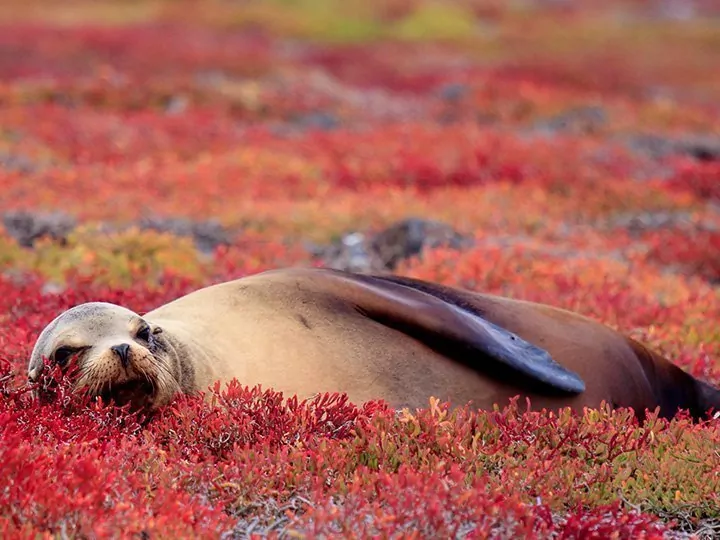
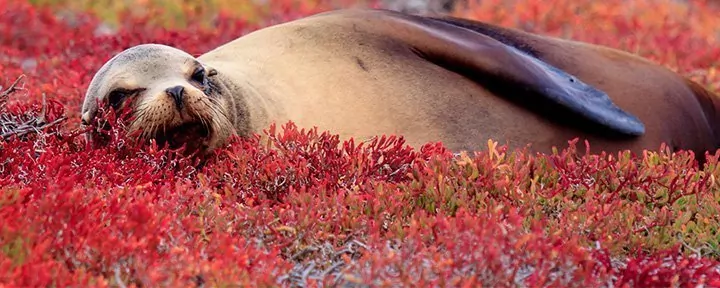
18 days
Ecuador with the Amazon & island hopping in Galapagos
Unforgettable nature experiences await in Ecuador with the majestic Andes Mountains, the world’s largest rainforest, the Amazon, as well as a 6-day island-hopping adventure on the enchanting Galapagos Islands.
What is included in the price?
This package includes the following
- Flights from chosen airport to Quito and return with connecting flights along the way
- Domestic flight Quito – Baltra (Galapagos) and return
- Transfer to/from airports
- Transport on the tour of Ecuador’s mainland
- Return crossing from Santa Cruz – Isabela
- 14 nights at good hotels, including breakfast
- 2 nights in the Amazon jungle with full board
- 2 x lunch (days 11+12)
- Individual tour, with all excursions taking place in smaller international groups with local, English-speaking guides
- ATOL certificate
- Emergency hotline staffed 24/7 throughout your trip
- Possibility of daily departure
- Departure guarantee – The price is valid when at least 2 people travelling. Please ask for a price if you are travelling alone
Comprehensive package of excursions:
- Guided tour of Quito including visit to the equator
- Hiking tour in Cotopaxi National Park
- Visit to Quilotoa Crater Lake
- Excursions in the Amazon Rainforest
- Galapagos – the island of Santa Cruz:
Walk by the Los Gemelos sinkholes
Visit to Hacienda Primicias, where the large Galapagos tortoises live in the wild
Walk in one of island’s impressive lava tunnels
Visit the interesting Charles Darwin Research Station
Full-day boat trip to one of the nearby islands - Galapagos – the island of Isabela:
Walk in Isabela’s wetlands
Visit the historic Muro de las Lágrimas (“The Wall of Tears”)
Visit the Arnaldo Tupiza Tortoise Breeding Centre - Entry to mentioned attractions (except for Galapagos, which is paid for on-site)
THE TOUR IN SHORT
This tour gives you the ultimate nature experience with the majestic Andes Mountains, the Amazon Rainforest and the enchanting Galapagos Islands.
You land in the capital of Ecuador, Quito, which sits in a valley surrounded by high mountains and volcanoes. In the old city district, the country’s colonial history is visible, and you visit impressive cathedrals and squares on an exciting city tour.
Afterwards, you exchange the busy capital with the calm and magic of the Andes Mountains at the volcano Cotopaxi and the gorgeous Quilotoa Crater Lake. You also visit the popular adventure city Baños, which sits surrounded by waterfalls at the foot of the volcano Tungurahua.
The next stop is the Amazon; the world’s largest rainforest – a place like no other. You stay at a jungle lodge with modern facilities right next to the rushing Napo River. From the lodge, you go on a hiking and boat trip into the rainforest alongside a skilled local guide, who tells you everything about the exciting flora and fauna.
From Ecuador’s mainland, you fly to the Galapagos Islands, where your tour concludes with fantastic island hopping with enthralling nature and utterly unique and fascinating wildlife.
Why choose this tour
- This tour combines the Andes Mountains, the Amazon and Galapagos – so it truly could not be better in terms of nature!
- Get up close to the Amazon jungle’s unique plant and animal life in the world’s largest rainforest
- Experience the mighty, snow-capped volcano Cotopaxi and the fairy-tale Quilotoa Crater Lake in the highlands of Ecuador
- Encounter the indescribable animal life of the Galapagos Islands, such as the Galapagos tortoises, sea iguanas, sea lions and penguins on a 6-day island hopping adventure
Our tours always include
- All international and domestic flights
- All accommodations
- All specified excursions and activities
- 24/7 telephone – We’re with you all the way
Detailed Itinerary
Day 1:
Departure from chosen airport and arrival in Quito (2,850 metres)
The tour sets off for Quito, the capital of Ecuador, with connecting flight(s) along the way. As you fly in, you can admire Quito’s stunning location – a lush valley nestled in the Andes mountains.
At the airport, you’ll be greeted by an English-speaking guide holding a sign with your name as you exit the arrivals hall. The drive from the airport takes you through Quito’s modern district down to the old town where your hotel is located. The journey takes approximately 1 hour, depending on traffic. During the drive, the guide will go over your itinerary and provide a welcome letter with a QR code giving access to all the practical information regarding your tour, including start times for your pre-booked excursions and transfers, and your domestic flight tickets to the Galapagos.
The rest of the day is yours to take a leisurely stroll around the old town or just relax after the long journey. It’s important to drink plenty of water and take it easy as Quito is 2,850 metres above sea level and your body needs time to acclimate to the altitude.
Day 2:
Guided tour of Quito including a visit to the equator
Quito was once a bustling Inca city, but when the Spanish arrived in 1526, the Inca general Rumiñahui soon realised that this was not a fight he could win. So, he destroyed everything in the city, leaving nothing for the Spanish. In 1534, the Spanish lieutenant Sebastián de Benalcázar founded the Quito that you encounter on today’s city tour, with fantastic, well-preserved colonial buildings, squares and cathedrals. As Quito’s old district is the most well-preserved historical city centre in Latin America, it is not hard to see why Quito is a UNESCO World Heritage Site.
After breakfast, you’ll be picked up at the hotel by your guide. First, you’ll visit the beautiful Plaza de la Independencia (Independence Square), which is surrounded by some of Quito’s most important buildings: The Presidential Palace, the Government Building, the Archbishop’s Palace and the Metropolitan Cathedral of Quito. From Plaza de la Independencia, you continue down the cobblestone streets and visit the La Compañía Church, which is decorated with the finest gold sheets on the inside, as well as the San Francisco Church, which is Quito’s oldest.
After the old district, you drive up to the Panecillo hill, where there is a wonderful view of the city as well as a 45-metre tall aluminium statue named the Virgen del Panecillo. From here, the tour continues to the northern end of the city to La Mitad del Mundo, where the equator line is located.
Translated, La Mitad del Mundo means “the middle of the world” in English, and a massive, 30-metre high equator monument stands here as a symbol of the unique geographical location. You can go up into the monument and enjoy a nice view of the area, where you can find souvenir shops, food stalls, a cocoa museum, a brewery and a small planetarium. There’s time to eat lunch here and walk around, visiting the many interesting exhibitions and museums.
The last stop is the cosy, little Intiñan museum, which is located just 100 metres away from La Mitad del Mundo. Here, you can try out fun experiments that put the earth’s gravitational and magnetic forces to the test. After all, this is where the equator actually runs through. It turned out that the big, wonderful equator monument is placed slightly off due to imprecise measuring techniques used in the old days.
On the tour, you will also pass the characteristic 115-metre-high basilica, the Basílica del Voto Nacional, which is built in neo-Gothic style and is the largest of its kind in the Americas.
After the city tour, you will be driven back to your hotel, and you can spend the rest of the day on your own.
Day 3:
Day on your own in Quito
Quito is a beautiful city with many activity options, and you have the day on your own to go exploring in the big city. You can also purchase an additional excursion from home.
If the weather is nice, we recommend heading up to Cruz de Loma, which is a lookout point on the volcano Pichincha at approx. 4100 metres above sea level. A 2.5-km cable car named TelefériQo brings you up the steep volcano to the lookout point, where you have a magnificent panoramic view of Quito and the surrounding volcanoes and mountains in the background.
If your body has not quite acclimatised to the altitude yet, you can instead visit Quito’s botanical garden, Jardín Botánico de Quito, for an exciting look at the many fascinating trees, plants and flowers.
You can also purchase a day trip to the small town of Mindo, which is located in a fantastical 500-km2 cloud forest. This lush area is home to diverse plant and animal life, and it is very well-known for its production of delectable chocolates as well.
If you would like to experience the indigenous culture of Ecuador, you can also join a one-day excursion to the Imbabura Province north of Quito, which is renowned for its gorgeous landscapes with picturesque lakes, towering volcanoes and of course, the famous Otavalo Indian Market, where you can purchase colourful carpets, cloths and ponchos.
Day 4:
Quito – Visit to Cotopaxi National Park (3,850 metres) – Pedregal
Today, you exchange the busy capital with the calm and magic of the Andes Mountains. From Quito, the tour continues south along the beautiful Avenida de los Volcanes (“Avenue of the Volcanoes”) to Cotopaxi National Park; a trip that takes about 2.5 hours.
At the park, a light hike awaits you around the fairy-tale Laguna Limpiopungo, which is located at an altitude of 3850 metres. You have a skilled local guide with you to explain everything about the flora and fauna of the area, as well as exciting myths about the great volcanoes. You may be lucky enough to spot condors, hummingbirds, wild horses, brocket deer and guanaco in the park. The snow-capped volcano Cotopaxi, which stands at 5897 metres above sea level, is always by your side, and you truly get the feeling of being tiny next to such a mighty volcano.
In the afternoon, you are driven to your accommodation, which is located just outside the national park.
Day 5:
Day on your own in the Andes Mountains (3,600 metres)
You can spend today on relaxation or activities in and around the cosy Hacienda El Porvenir.
You can take a walk on marked paths on your own, or join some of the activities offered by the hotel, such as, for example, horseback riding and mountain biking in the unique Andes landscape.
Note that the tours are with Spanish speaking staff, but instruction in, for example, horseback riding, is given in English before departure, so you do not need to be able to speak Spanish.
All activities are booked and paid for locally when you arrive at the hotel. However, the horseback ride is so popular that we recommend you purchase it from home.
If you would prefer a bit of relaxation, the hotel has its own day spa where you can pamper yourself with wellness treatments and relaxing massages.
Day 6:
Pedregal – Quilotoa Crater Lake (3,900 metres) – Baños (1,820 metres)
After breakfast, your tour continues through the mountainous landscape. The next stop is the magnificent Quilotoa Crater Lake, which is approx. 250 metres deep and has a diameter of around 3 km. The colour of the water is particularly unusual and can shift from completely turquoise to nearly yellow, depending on the mineral content of the water and the season.
You have the option to go all the way down to the banks of the lake on a marked zig-zag path, or just stay at the top and take buckets of photos of the picturesque lake. The walk down to the lake takes about 30 minutes, but the return trip up the steep path may take up to 2 hours. For an additional charge, you can rent a donkey, which will bring you back to the top with no sweat on your brow.
After lunch, you continue to Baños, which sits in a lush valley at the foot of the volcano Tungurahua.
Baños is a much-loved travel destination for both international travellers and for the Ecuadorians themselves. The town has something for everyone. Whether you want relaxation with spas and hot springs or something more extreme with “canyon swinging”, zip-lining and mountain bike rides, Baños has just the thing for you.
The town has a manageable size, and you can easily walk from your hotel down to the main street, where activity and good times are always waiting for you. Here, you can find countless eateries, bars, souvenir shops and tour operators, who sell adventure activities in the area.
Day 7:
Day on your own in Baños
You have the whole day to explore Baños and the area around the city on your own.
The town is surrounded by waterfalls, and a popular activity is to head to see Pailón del Diablo, the biggest waterfall of them all, which impresses with its power and strength. You travel there on a local Chiva bus, a colourful bus without doors and windows to give you a great view of the beautiful scenery. This tour is easy to arrange locally. It costs approx. 15 USD PP.
You can also independently take the bus up to Casa del Árbol, which is a slightly different kind of lookout point. Here, you can take a swing over the abyss, giving you not just a thrilling experience, but some truly fantastic photos as well.
The full title of the city is Baños de Agua Santa, which translates to “sacred baths”. The name comes from the town’s many hot springs, which are said to have healing properties due to their high content of minerals, which stems from the activity of the volcano Tungurahua. There are several places where you can treat yourself to a wellness experience in the hot springs, which are located in the middle of beautiful surroundings.
Day 8:
Baños – Tena (the Amazon) (600 metres)
From Baños, the tour continues down winding mountain roads to the city of Tena, which is the entrance to the Amazon Rainforest. The trip takes about 3-4 hours and is a most beautiful drive with both volcanoes and waterfalls along the way. The temperature and humidity rise as you move down in altitude towards the large jungle.
The road literally ends in the Napo River, where a motor-driven canoe waits to take you the last step of the way to your jungle lodge, which is located about 40 km from Tena, surrounded by lush jungle. The boat ride lasts about 15 minutes.
On your arrival at the lodge, you’ll be shown to your room and a delicious lunch awaits you. In the afternoon, your guide gives you an exciting introduction to cocoa production in the Amazon and the processing techniques for the humble bean that is the main ingredient in their fantastic chocolate.
Your day concludes in cosy surroundings at the lodge, with the sound of the rushing Napo River and the jungle’s inhabitants in the background.
Day 9:
Great experiences in the Amazon
After breakfast, a skilled local guide takes you on a walk into the jungle. The guide explains the medical applications of the various plants and trees, as well as the birds and insects you spot along the way. The Amazon Rainforest is home to a plethora of different types of mammals and reptiles. However, there is not as high a chance of meeting them in this part of the rainforest, which is known as the upper Amazon, as it is too close to habitation. You will however experience the exotic animal life of the rainforest later in the day during a visit to the rehabilitation centre AmaZOOnico.
Here you can meet animals such as monkeys, toucans, turtles, snakes, tapirs and perhaps even one of the more rare felines, like the ocelot. The rehabilitation centre takes care of injured and confiscated animals, and seeks to bring them back to nature. Volunteer helpers give you a tour and explain about the animals they are taking care of at the moment. You cannot get up close to the animals that are soon heading back to nature, as they are to have as little human contact as possible.
You enjoy lunch back at the lodge, and in the afternoon, you visit a small local society where old traditions are kept alive. Here, you get a unique look into how the locals live and grow their various crops, such as yucca, coffee, cocoa, and other tropical fruits. You are also allowed to taste the typical jungle drink “Chicha de Yuca”. The women here make their own cups and pots for cooking by hand. It may look simple, but try it yourself; it’s not easy. They can make the most gorgeous ceramics from plain, natural materials.
You have the rest of the afternoon to relax at the hotel and enjoy its facilities.
Day 10:
Tena – Papallacta (3,300 metres) – Quito (2,850 metres)
The time has come to say goodbye to the Amazon Jungle. It may well be a little sad, but you will be bringing an unforgettable nature experience back home.
After a nice breakfast, you sail the short trip up the Napo River. At the river bank, a driver will be waiting to drive you back to Quito. You again get a truly beautiful drive of about 5 hours up over the Andes Mountains. Along the way, you make a lunch stop at Papallacta, which is known for its hot springs. If you like, you can throw on some swimwear and enjoy the relaxing therapeutic baths.
You spend the night just outside of Quito, close to the airport so that you do not have to get up too early the next morning, when your tour continues to the magical Galapagos Islands.
Day 11:
Quito – flight to Galapagos – amazing experiences on the island of Santa Cruz
Today it is time to begin the second part of your tour, which follows in Charles Darwin’s footsteps on the enchanting Galapagos Islands. Look forward to the unique nature and animal experiences that await you here.
Then a young natural historian, Charles Darwin sailed around in the world in 1831, which brought him to the Galapagos Islands, among other places. On his travels, he discovered that the finches on the Galapagos Islands were different from those back home. They had adapted to the conditions of life on the various islands. Darwin’s theory of the evolution of the species and natural selection began to form, and his work On the Origin of the Species is still considered to be the greatest contribution to our understanding of biological evolution.
This morning, you are picked up at your hotel and driven to the airport, where you will be required to pay for a Transit Control Card (cash) before you can check in. The flight to Galapagos takes around 2.5 hours. When you arrive at Baltra Airport, you will be required to pay for entry to Galapagos (cash). Your guide is waiting outside the airport, and you take the bus together down to the Itabaca Canal. From here, a boat takes you over to the main island of Santa Cruz.
The first stop of the day is at Los Gemelos, which is also known as the twin craters, despite the fact that they are not craters but rather two enormous sinkholes located right next to each other. Around the twin craters, you encounter rich bird life in the lush forest of sunflower trees (scalesia).
The tour then continues to the ranch Hacienda Primicias, where you meet the enormous Galapagos tortoise, which lives freely here. These large turtles move across the landscape slowly, and spend most of their day eating and sleeping. These massive animals can grow to be over 100 years old and can weigh up to 250 kg, and getting up close to them is an incredible experience. On the ranch, you also get your included lunch.
After the ranch, you head down and walk through one of the impressive lava tunnels, which are also characteristic of Galapagos. Each and every one of the Galapagos Islands is created by volcanic activity, and your guide will provide interesting information about how the islands came to be.
The tour of the day concludes at the Charles Darwin Research Station, which is located in Puerto Ayora and was established in 1964 for the purpose of research and education. At the station, you receive an introduction to the exceptional flora and fauna of the Galapagos Islands as well as an exciting insight into the many important projects that scientists, biologists and volunteer helpers work with to protect the fragile nature of the islands.
You have the evening to explore the pleasant port town, Puerto Ayora, on your own. This is the biggest city on Galapagos with approx. 20,000 inhabitants, and there is plenty of life to be found along the town’s main street, Avenida Charles Darwin, where you can find a wide selection of shops, cafés and delicious restaurants.
Day 12:
Santa Cruz – boat trip to one of the nearby islands
Today you can look forward to having more nature experiences on an exciting full-day boat trip to one of the nearby islands. We cannot guarantee what island you will visit, as local authorities decide which islands are open to visitors in order to protect their vulnerable nature. However, we can guarantee that it will be an unforgettable nature experience no matter which of the 4 islands below you end up visiting.
Your guide will inform you of the meeting place and time of your excursion on the day before. Transport to and from the meeting place is not included as it is within walking distance of your hotel in Puerto Ayora.
North Seymour (Seymour Norte):
North of Santa Cruz is the island of North Seymour. Here, you can see large colonies of frigate birds and blue-footed boobies, who like to nest here. You can also experience varied wildlife, including sea lions, many different sea birds, as well as land and sea iguanas. To get out to North Seymour, you are driven up to the Itabaca Canal from Puyerto Ayora and travel by boat for approx. 45 minutes. At your side at all times is a skilled nature guide, who will explain about the island’s flora and fauna.
Before the tour takes you back to Santa Cruz, you make a stop and the beautiful, isolated beach Playa Las Bachas. Here, you have the option to snorkel in the clear water and encounter exciting life beneath the water’s surface. Not far from the beach is a small lagoon where flamingos love to hang out.
South Plaza (Plaza Sur):
On the eastern end of Santa Cruz is South Plaza, one of the smallest of the Galapagos Islands. Despite its small size, South Plaza is renowned for its unique plant life and is the home of a large number of species of animals.
You are first driven to the northern end of Santa Cruz, where the boat awaits. From here, you travel by boat for about 15 minutes before making a stop at Putna Carrion, which is a fantastic place to go snorkelling. With some luck, you can encounter sea lions, skaters and whitetip reef sharks here. Next, you travel on to South Plaza.
Pretty much everywhere you look on South Plaza, you will be able to see fig cacti as well as the plant sesuvium edmonstonei, which can only be found on the Galapagos Islands. In the shadow of a fig cactus, you may perhaps spot a land iguana waiting for the fruit of the cactus to drop to the ground, as the island is also a habitat of land iguanas. At the water’s edge, you have a chance of seeing sea lions and seabirds like, for example, red-billed tropicbirds and dovetail gulls.
Bartolomé:
North of Santa Cruz is Bartolomé, one of the most beautiful of the Galapagos Islands due to its distinctive landscape with orange, red, black and green colours. The island is particularly well-known for the impressive, sharp volcanic cliff named Pinnacle Rock.
From Puerto Ayora, you are driven up to the Itabaca Canal, from which you travel by boat for approx. 2 hours out to the little island. On arrival, you travel with your nature guide up to the top of the island. From here, you can enjoy the picturesque view of the volcanic landscape, Pinnacle Rock and the neighbouring island Santiago.
After the hike, there will be time to relax on the white sandy beach, or go snorkelling and enjoy the fantastic life beneath the water’s surface, with a chance of encountering sea turtles, whitetip reef sharks and colourful fish. You may even be able to spot the Galapagos penguin, which only lives in Galapagos and is the second-smallest penguin in the world.
Santa Fé:
South-east of Santa Cruz is Santa Fé, which is about a 1.5-hour boat ride away from Puerto Ayora. When you arrive on the island, you will be welcomed by a large sea lion colony on the white sandy beach.
Just like on South Plaza, the landscape here is also covered in fig cacti and sesuvium edmonstonei, but on Santa Fé, you can also see the greyish tree palo santo, the Spanish name of which translates to “holy wood”. Here, you can also see a lot of different bird species, both land and sea birds, and the island is also known for the Santa Fé land iguana.
You enjoy lunch back on the boat, after which it is time to go snorkelling in the clear ocean where beautiful and colourful fish await you. Look forward in particular to the chance to swim alongside curious and playful sea lions, which is one of the absolute highlights of the day.
Day 13:
Puerto Ayora on your own
You spend today on your own in Puerto Ayora, and there are many different things to get up to. If you would like to be active, you could for example head out to go diving, or rent a bicycle and go exploring around the island.
We highly recommend packing your backpack, lacing your walking boots and walking out to the gorgeous Tortuga Bay beach. A tarmacked path leads out to the beach from the south-western part of Puerto Ayora – roughly a 45-minute walk each way.
Tortuga Bay itself is very popular with surfers, so if you would rather swim in calmer waters, you should continue to the end of the beach (around 2.5 km) to the beach Playa Mansa, which is a small lagoon surrounded by mangroves. Here you can either relax on the beach or rent a kayak to go looking for the sea iguanas and sea turtles that live in the lagoon.
Please note that there are no facilities here, so be sure to bring plenty of water, food and sunscreen for the whole day.
You can also just relax in Puerto Ayora, where you in the morning may see hungry and curious pelicans and sea lions peeking at the small fish market on Avenida Charles Darwin. By the jetty, there is always lots of life, with skates and whitetip reef sharks in the water, as well as sea iguanas and colourful crabs hanging around the rocks.
Day 14:
Boat to Isabela Island – excursion on Isabela
It’s time to say goodbye to Puerto Ayora, as new adventures await on the neighbouring island of Isabela. The boat to Isabela departs from the pier in Puerto Ayora, which is just a few minutes’ walk from your hotel. A guide will meet you at the hotel and accompany you to the boat. You will need to carry your own luggage. The boat ride takes approximately 2 hours.
At 4,640 km², Isabela is the largest island in the Galapagos Archipelago, and it’s also where you’ll find the Galapagos Islands’ highest point, the Wolf Volcano, at 1,707 metres. Despite being the largest of the Galapagos Islands, Isabela is home to only a couple of thousand residents. You can look forward to truly winding down in this informal and relaxed island atmosphere.
Upon arrival in Isabela, you’ll need to pay a port fee of approximately USD 10 (cash). After that, a driver will meet you and drive you the short distance to your hotel in the island’s main town, Puerto Villamil.
In the afternoon, you’ll set off on an excursion to some of Isabela’s highlights. The tour begins with a visit to the Arnaldo Tupiza Tortoise Breeding Centre just outside the town. Here, volunteers work to increase the population of the island’s tortoises, and you’ll be able to see hundreds of adorable tortoises of all sizes and ages: from those that have just hatched to giant Galapagos tortoises weighing hundreds of kilos. Your guide will also take you into an intriguing wetland area where you can observe a rich birdlife with birds like black-winged stilts, rails, and white-cheeked pintails as well as the fascinating flamingos.
Next on the agenda is a walk to the historic wall, Muro de las Lágrimas (the ‘Wall of Tears’). This 25-metre-high wall is a sombre reminder of Isabela’s history. Built between 1945 and 1959 by prisoners of the island’s former penal colony, the name arose because the hard labour drove the prisoners to tears of pain and sadly cost many their lives. The walk is approximately 7 km in total on flat terrain, so remember to bring good walking shoes, water, and a hat for sun protection.
If you prefer not to join the walk, let your guide know at the start of the tour, and you will be taken back to the hotel after visiting the Tortoise Breeding Centre and wetland area.
Spend the evening strolling along the waterfront or exploring Puerto Villamil’s charming main street in search of a restaurant. The town is small, and everything is within walking distance.
Day 15:
Puerto Villamil on your own
Today you can do whatever you like on Isabela Island. If you would like to explore the island, you can rent a bicycle and go exploring on your own, or you can relax and bathe at one of the island’s many lovely beaches.
If you haven’t had enough of the unique underwater life of the Galapagos Islands, we strongly recommend going snorkelling at the Las Tintoreras islets. These islets are located just outside Puerto Villamil and are a popular place to go snorkelling. The many crevices in the rocks here are home to sea lions, sea turtles, penguins and reef sharks.
You can also purchase a guided hike to the impressive 1,124-metre-high shield volcano Sierra Negra, which with a diameter of over 9.5 kilometres has one of the largest volcanic craters in the world.
Accommodation:
Day 16:
Fly from Galapagos to Quito (2,850 metres)
Your adventure on the Galapagos Islands has reached its end, and it’s time to return to the mainland.
You’ll be picked up early from the hotel and driven to the port in Puerto Villamil, then sail back to Puerto Ayora on Santa Cruz Island. Here, you’ll be met by an English-speaking guide who will drive you to the Itabaca Channel and accompany you across to the airport island of Baltra, from where you’ll take the bus to the airport. The flight back to Quito often takes a bit longer (about 2.5-4 hours) because there is usually a brief stopover in the city of Guayaquil.
Upon arriving in Quito, you will be picked up at the airport and driven to your hotel, located in one of Quito’s charming suburbs near the airport. The evening is yours to enjoy as you please.
Day 17:
Departure day
You will be picked up at the hotel and driven to the airport, where your journey home begins. Depending on your flight’s time, you may have a little time to yourself to enjoy the hotel’s facilities and relax in the lush garden, reflecting on the wonderful experiences from your tour.
Day 18:
Arrival back home
You will arrive at your chosen airport after an adventurous journey in Ecuador.
|
|
When would you like to travel?
Departure dates
All prices shown are per person
Please note that the price of a single room only applies when for at least two people. Please contact us if you’re travelling alone.
Special offers for groups of 3 or more. Request a quote today for more info.
Special offers for groups of 3 or more. Request a quote today for more info.
REVIEWS
Travellers' tales
BEFORE YOU TRAVEL
Good to know
Latin America

Emily Roper
Emily loves to travel and is extremely passionate about helping others achieve their travel dreams.
Opening hours
Monday-Thursday 9-15Friday 9-13
WHY TRAVEL WITH TOURCOMPASS?
Why choose us
We know your time is precious. That's why we strive to provide personalised, attentive service to ensure your comfort and safety throughout your tour. From the moment you book to the moment you return home, we’re here to handle every detail with the utmost care.
We offer a diverse array of destinations, each promising its own unique story, shaped by its local cultures, fascinating wildlife, and natural beauty.
We design every tour based on the extensive research and first-hand experiences of our travel specialists and experts. Each tour is crafted to showcase the best each country has to offer.
With us, you can rest assured; your journey is in safe hands. We are ATOL certified and a proud member of ABTA, maintaining rigorous standards of quality and service to ensure your complete peace of mind.
